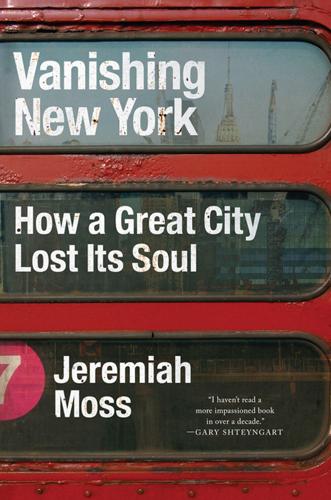
Vanishing New York
by
Jeremiah Moss
Published 19 May 2017
The Power Broker: Robert Moses and the Fall of New York. New York: Vintage, 1975. Chang, Jeff. “Vanilla Cities and Their Chocolate Suburbs: On Resegregation.” In We Gon’ Be Alright. New York: Picador, 2016. Chauncey, George. Gay New York: Gender, Urban Culture, and the Making of the Gay Male World, 1890–1940. New York: Basic Books, 1995. Conn, Steven. Americans Against the City: Anti-Urbanism in the Twentieth Century. New York: Oxford University Press, 2014. David, Joshua, and Robert Hammond. High Line: The Inside Story of New York City’s Park in the Sky. New York: FSG Originals, 2011. Davis, Mike. Evil Paradises: Dreamworlds of Neoliberalism.
…
Aside from encouraging development and promoting the “most desirable” use of land, one purpose was “to facilitate the restoration and reuse of the High Line” as a public space, through, in part, “High Line improvement bonuses and the transfer of development rights from the High Line Transfer Corridor.” Bonuses along the corridor meant that if a luxury developer provided improvements to the High Line itself, such as stairways and public restrooms, that developer could build their condo towers even bigger. The High Line and the rezoning worked together, creating a recipe for what might be the biggest, fastest, most expensive development boom in New York City history. Snaking north, the park would act like a long irrigation hose threaded through what City Hall and developers viewed as a fallow field, soaking the soil and prepping it for an explosion of unimaginable growth—and destruction.
…
On the joke book, see Michael Wolff, “Full Bloom,” New York, November 5, 2001, and Elizabeth Kolbert, “The Mogul Mayor,” The New Yorker, April 22, 2002; Michael Saul, “Bloomy Defends Bid to Gag Aide,” Daily News, September 10, 2001; “Campaigning for Mayor: Confronting the Economy’s Future and Media Rumors,” excerpts from mayoral debate, New York Times, September 10, 2001. 155“He seems not quite able to articulate . . ” from Nick Paumgarten, “Bloomberg Courts Makor,” The New Yorker, August 6, 2001. 156“No turn of events,” from Michael Wolff, “Bloomberg News,” New York, August 27, 2001. 162–163On newsstands, see Glenn Collins, “Newsstands of Tomorrow Get Mixed Reviews Today,” New York Times, August, 29, 2008, and Winnie Hu, “Newsstands to Give Way to New Kiosks with Ads,” New York Times, October 10, 2003. 13 HIGH LINE 1: THE MEATPACKING DISTRICT 185Matt Pincus, “The Wild West,” New York, March 3, 1997. 193–193Diane von Furstenberg perfume rumor from New York Post, Page Six, “Designer Scent ’Em Running,” July 2, 2009. 14 THE NEW GILDED AGE AND THE ENRON SOCIETY 200On the potential cooling benefit of supertall luxury towers, see “The Science of Supertalls,” presented by Jesse M.
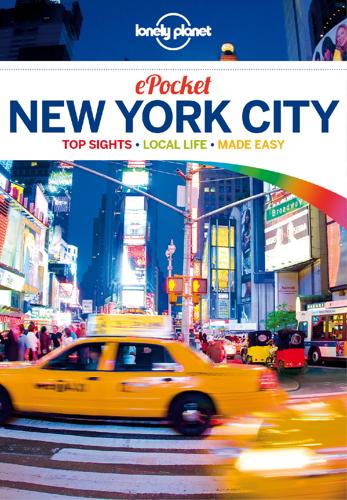
Pocket New York City Travel Guide
by
Lonely Planet
Published 27 Sep 2012
Right: Museum of Modern Art exterior (architects: Yoshio Taniguchi and Kohn Pedersen Fox) HUW JONES/LONELY PLANET IMAGES © New York City Top Sights Guggenheim Museum (Click here) This stunning museum has an enviable collection of 20th-century art and welcomes exhibits from all over the world. Right: The Shapes of Space, Solomon R. Guggenheim Museum, New York, April 14–September 5, 2007. ©The Solomon R. Guggenheim Foundation, New York. Used with permission. JEAN-PIERRE LESCOURRET/LONELY PLANET IMAGES © New York City Top Sights The High Line (Click here) Refurbished rail tracks have been transformed into grassy catwalks in the sky.
…
Or, you can catch some laughs at comedy headquarters like the Upright Citizens Brigade Theatre (Click here) or the Comedy Cellar (Click here). For a local’s day in Chelsea, Click here. Greenwich Village, Chelsea & the Meatpacking District Top Sights The High Line C3 Sights 1 Washington Square Park F4 2 Chelsea Market C3 3 New York University G4 4 Astor Place G4 5 Pier 45 C5 6 Grace Church G4 7 Chelsea Art Museum B2 8 Chelsea Hotel E1 9 Chelsea Piers Complex B2 10 Forbes Collection F3 11 Downtown Boathouse D5 New York Trapeze School (see 11) Eating 12 RedFarm D4 13 Tartine D4 14 Cookshop C2 15 Le Grainne C2 16 Tomoe F5 17 Billy's Bakery D2 18 Spotted Pig D4 19 Minetta Tavern F5 20 Café Cluny D4 21 Taïm E4 22 Tertulia E4 23 Barbuto C4 24 Joe's Pizza E5 25 Souen G3 26 Co D1 Drinking 27 Little Branch E5 28 Marie's Crisis E4 29 Art Bar D3 30 Vin Sur Vingt E3 31 Bathtub Gin D2 32 Vol de Nuit F4 33 Boom Boom Room C3 Le Bain (see 33) 34 Kettle of Fish E4 35 124 Old Rabbit Club F5 36 Julius Bar E4 37 G Lounge E2 38 Barracuda E1 39 Cubbyhole D3 40 Rawhide D2 Entertainment 41 Upright Citizens Brigade Theatre D1 42 Comedy Cellar F5 43 Sleep No More B1 44 Village Vanguard E4 45 Blue Note F5 46 Cherry Lane Theater E5 47 Angelika Film Center G5 48 Smalls Jazz Club E4 Duplex (see 34) 49 IFC Center E5 50 Le Poisson Rouge F5 51 Magnet Theater D1 52 Atlantic Theater Company D2 53 Kitchen C2 Shopping 54 Barneys Co-op D2 55 Yoyamart D3 56 Strand Book Store G3 57 Printed Matter C2 Bonnie Slotnick Cookbooks (see 36) 58 Three Lives & Company E4 59 The Bathroom E4 60 Jeffrey New York C3 Greenwich Letterpress (see 34) 61 Marc by Marc Jacobs D4 62 Stella McCartney C3 63 Nasty Pig D2 64 Forbidden Planet G3 65 Abracadabra F2 66 192 Books C2 Top Sights The High Line www.thehighline.org Gansevoort St 7am-7pm L, A/C/E to 14th St-8th Ave, C/E to 23rd St-8th Ave, M11 to Washington St, M11, M14 to 9th Ave, M34 to 10th Ave In the early 1900s, the area around western Chelsea was the largest industrial section of Manhattan and a set of elevated tracks were created to move freight off the cluttered streets below.
…
On June 9, 2009, part one of the city’s most beloved urban renewal project opened with much ado, and it’s been one of New York’s star attractions ever since. LOGAN MOCK-BUNTING/CORBIS © Don’t Miss Public Art In addition to being a haven of hovering green, The High Line is also an informal art space featuring a variety of installations, both site-specific and stand-alone. For detailed information about the public art on display at the time of your visit, check out www.thehighline.org/about/public-art. Secret Staffers As you walk along the High Line, you’ll find dedicated staffers wearing shirts with the signature double-H logo who can point you in the right direction or offer you additional information about the converted rails.
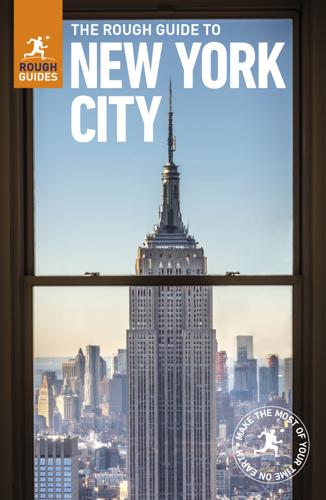
The Rough Guide to New York City
by
Rough Guides
Published 21 May 2018
Then the Great Depression arrived, and a decade after its inception, it finally faded from the scene. Five unique city views Top of the Rock and the Empire State Building are obvious places to go for panoramic views of New York, but you can find interesting angles on the city at any of the following: Brooklyn Bridge Brooklyn Bridge Park’s Main Street Lot Cantor Rooftop Garden The High Line The Panorama of the City of New York Diamond District West 47th Street, or the Diamond District (marked by the diamond-shaped lamps mounted on pylons at the Fifth- and Sixth-Avenue ends of the street), is a diverting side-trip from Fifth Avenue, a strip of wholesale and retail shops chock-full of gems and jewellery first established in the 1920s.
…
. $435 The Standard, High Line 848 Washington St, at W 13th St 212 645 4646, standardhotels.com; subway A, C, E to 14th St, L to Eighth Ave; map. With the High Line running under it, fabulous views from its floor-to-ceiling glass-walled rooms and a bevy of exclusive food and nightlife options nearby, André Balazs’ Standard is just about too hip for its own good. There’s a clean, Modernist feel to the decor. $503 Union Square, Gramercy and the Flatiron District Ace Hotel 20 W 29th St, at Broadway 212 679 2222, acehotel.com; subway N, R to 28th St; map. Capturing the spirit of old New York yet fully modern, the Ace Hotel has set a new standard for bohemian chic (it was once the Breslin Hotel, built in 1904).
…
The NEW Lower east side New York’s current construction boom has not spared the Lower East Side, and you’ll see swish modern towers sprouting up between the old tenements all over the neighbourhood. Some of the more ambitious projects include Essex Crossing (essexcrossingnyc.com), a massive, mixed-use development at the intersection of Delancey and Essex streets, which will involve updating and expanding Essex Street Market as part of a new shopping mall, The Market Line (completion expected 2021–24). There’s also the Lowline (thelowline.org), a historic trolley terminal converted to a spectacular High Line-style park, albeit underground and lit by solar technology (opening very optimistically slated for 2021).

Supertall: How the World's Tallest Buildings Are Reshaping Our Cities and Our Lives
by
Stefan Al
Published 11 Apr 2022
“Ultra High Net Worth Individual (UHNWI),” Investopedia, October 26, 2017, accessed May 16, 2020. 33.Council on Tall Buildings and Urban Habitats, “CTBUH Year in Review: Tall Trends of 2020,” CTBUH Journal, no. 1 (2021). 34.Kristina Shevory, “Cities See Another Side to Old Tracks,” New York Times, August 2, 2011. 35.Kevin Loughran, “Parks for Profit: The High Line, Growth Machines, and the Uneven Development of Urban Public Spaces,” City & Community 13, no. 1 (2014): 49–68. 36.Michael Kimmelman, “Hudson Yards Is Manhattan’s Biggest, Newest, Slickest Gated Community. Is This the Neighborhood New York Deserves?” New York Times, March 14, 2019. 37.Oliver Wainwright, “Horror on the Hudson: New York’s $25bn Architectural Fiasco,” The Guardian, April 9, 2019. 38.Azi Paybarah, “They Were Going to Build a Wall at Hudson Yards. Then Came the Backlash,” New York Times, January 15, 2020. 39.Nikolai Fedank, “Viñoly’s Jetsons-Esque Skyscraper at 249 East 62nd Street Revealed, Upper East Side,” New York YIMBY, February 20, 2018, accessed February 27, 2021, https://newyorkyimby.com/. 40.The Municipal Arts Society of New York, The Accidental Skyline, October 2017. 41.David B.
…
In the meantime, West Chelsea’s mid-rise skyline of industrial warehouses became intermixed with contemporary high-rises designed by celebrity architects, with condominium towers by Jean Nouvel, Bjarke Ingels, and Zaha Hadid. The park’s designers, New York architects Diller Scofidio + Renfro and landscape designer James Corner, deliberately designed the park to guide a pedestrian’s gaze to some quintessential New York sights. Unlike Central Park’s bucolic views, the elevated High Line gives tourists a novel way to experience the city’s street life, including panoramas of skyscrapers and yellow cabs. Its success has inspired similar projects worldwide, establishing the so-called High Line Effect.34 As an architect working on large-scale projects in the years after the High Line’s opening, I experienced the project’s global appeal.
…
While air rights transfers fueled the super slenders in Billionaire’s Row, endangering Central Park, elsewhere in the city they were arranged to protect a park. The city had enabled the transfer of air rights around the High Line, a park planned on an abandoned elevated freight line in Chelsea, to nearby land parcels. The air rights transfers ensured more light, air, and views in the park, as well as even helping to pay for it. The High Line linear park has become one of New York’s premier tourist attractions. In 2019, it drew more than 8 million visitors, more than the Statue of Liberty. In the meantime, West Chelsea’s mid-rise skyline of industrial warehouses became intermixed with contemporary high-rises designed by celebrity architects, with condominium towers by Jean Nouvel, Bjarke Ingels, and Zaha Hadid.
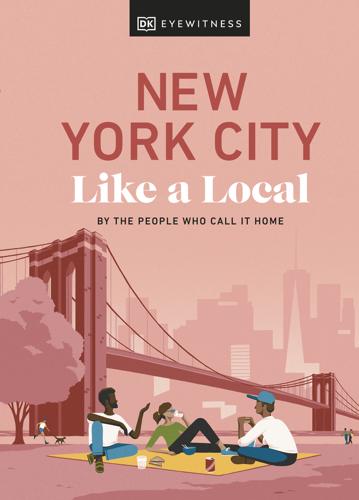
New York City Like a Local
by
Dk Eyewitness
And, whatever the season, every morning there seem to be more dogs than people on the Lawn Meadow. » Don’t leave without practicing your vinyāsa flow at a class with Park Slope yoga studio Bend + Bloom in summer. g Green Spaces g Contents Google Map THE HIGH LINE Map 1; entrance via 30th Street and 11th Avenue, Hudson Yards; ///wipe.spray.goods; www.thehighline.org Nowhere better symbolizes New York’s ingenuity than the High Line. On what was once an elevated train track set for demolition, the urban park winds around fancy new apartment blocks – each twist and turn offering a new view and patch of flora. It’s no surprise that locals often commute through the park, an obligatory coffee in hand; less tooting traffic, more pleasant scenery.
…
g Streets and Alleys g Contents Google Map NINTH AVENUE Map 1; Ninth Avenue, Meatpacking District; ///label.richer.rocky Named for its industrial past as a slaughterhouse hub, the Meatpacking District is now a high-fashion neighborhood with a likewise cooler-than-cool cohort of locals. This is best seen on Ninth Avenue, where fashionistas and that-model-you-know-from-TV can be spotted clip-clopping down the street. It feels like a vestige of old New York, especially if you carry on to Gansevoort Street, with its cobblestones. This is also a great place to start the High Line, where the magic continues above street level. g OUTDOORS g Contents Nearby Getaways Of course New Yorkers love their city, but sometimes a change of scene is just what’s needed. Fortunately, the Big Apple has various tempting day trips right on its doorstep.
…
g Contents MAPS MAP 1 MAP 2 MAP 3 MAP 4 MAP 5 MAP 6 g Maps g Contents ← MAP 1 → EAT ABCV Alta Buvette Dante The Dutch Eileen’s Special Cheesecake Lafayette Magnolia Bakery Union Square Café DRINK 230 Fifth Botanica Employees Only Julius’ La Compagnie des Vins Surnaturels Le Bain Marie’s Crisis Raines Law Room SHOP Fishs Eddy Goods for the Study Housing Works Kith Krewe L’Appartement Sézane McNally Jackson ARTS & CULTURE Angelika Film Center Artists Space Bowery Mural Canada Film Forum The IFC Center Ivy Brown Gallery The Public Theater The Rubin Soho Repertory Theatre The Whitney Museum of American Art NIGHTLIFE Blue Note Bowery Poetry Club Comedy Cellar Cubbyhole Le Poisson Rouge Playhouse The Uncommons Village Underground OUTDOORS Elizabeth Street Elizabeth Street Garden Grove Street The High Line MacDougal Alley Ninth Avenue Washington Square Park g Maps g Contents ← MAP 2 → EAT Beauty & Essex Clinton St. Baking Company Essex Market Ferns Hotel Chantelle Morgenstern’s Finest Ice Cream Petee’s Pie Company Russ & Daughters Cafe Somtum Der Van Leeuwen DRINK Abraço Apotheke The Back Room Bibi Wine Bar Black Cat LES CloudM Rooftop Bar Bowery Coffee Project NY Garfunkel’s Fish Bar McSorley’s Mr. Purple Proletariat Ruffian Sake Bar Decibel SHOP A1 Record Shop Assembly New York Coming Soon Crystals Garden Cure Thrift Shop Mr.

Lonely Planet's Best of USA
by
Lonely Planet
Then, when the sun sinks and luminous skyscrapers light up the night, New York transforms into one grand stage. Whether high culture or low, New York embraces it all. Central Park / PETER BARRITT / ALAMY STOCK PHOTO y In This Section Central Park Statue of Liberty Brooklyn Bridge MoMA The High Line Broadway Sights Tours Shopping Entertainment Eating Drinking & Nightlife John F Kennedy International Airport / PATTI MCCONVILLE / ALAMY STOCK PHOTO © Planning Ahead y When to Go Summers can be scorching hot; winters cold and not without their blizzards. Spring or autumn are the best times to explore. 8 Arriving in New York City John F Kennedy International Airport (JFK) AirTrain to Jamaica Station, then LIRR to Penn Station ($12 to $15, 45 minutes).
…
Race Point Beach, Provincetown / DENISTANGNEYJR / GETTY IMAGES © Plan Your Trip Ten-Day Itinerary Big Apple to the Big Easy Delve into two of the USA’s most fascinating cities – New York City and Washington, DC – for their world-class museums, iconic buildings, and top-notch food and entertainment options. Then head south for sparkling beaches, Disney magic and Cajun cooking on a ramble through Miami, Orlando and New Orleans. 1 New York City Spend two days exploring the metropolis, visiting memorable people-watching ’hoods such as Chinatown, the West and East Villages, SoHo, Nolita and the Upper West Side. Museum-hop down the Upper East Side. Wander in Central Park, along the High Line and across the Brooklyn Bridge. Prioritize iconic sights, including the Statue of Liberty and MoMA.
…
Brooklyn Bridge / WIN-INITIATIVE / GETTY IMAGES © A New York City in Two Days Explore Chinatown, SoHo, Nolita and the West and East Villages, and end the day with Times Square Map Google Map, a Broadway show and drinks in Midtown. Early on day two, walk across the Brooklyn Bridge, then head uptown to MoMA. Stroll through Central Park Map Google Map, then head downtown for a ferry ride to the Statue of Liberty. Have dinner in the West Village. Rockefeller Center / JULIA GIRG / STOCK4B / GETTY IMAGES © A New York City in Four Days On day three, grab a bite at the Chelsea Market, then amble along the High Line Map Google Map.

Cities Are Good for You: The Genius of the Metropolis
by
Leo Hollis
Published 31 Mar 2013
I also look at other cities that have been in the news recently: the Fukushima nuclear plant that was damaged by the earthquake in March 2011; or I peer over Kabira, the slums outside Nairobi, where the shacks are so closely packed together that it is impossible to see where the streets and alleys wind through the neighbourhoods; finally, I click to the High Line in New York, and watch in wonder at how a channel of verdant green snakes through the city. Google Earth brings joy and fascination, but it can also be used to make a difference. In 2008 Clean Up The World started to use it to highlight places of particular crisis as well as show the impact of the International Clean Up Weekend.
…
This has not derailed the project, however; rather it has been spread out over a longer timeframe with the hope that each new budget period might see a change in fortunes. For, despite the bureaucratic, interdepartmental headaches, everyone involved so far still feels that the park will be an essential part of the future of New York. It is certainly far more than an election-winning photo opportunity – but what will its real impact be on the city? Visiting the offices of James Corner Field Operations, situated just north of the High Line, which was also designed by Corner, one is immediately struck by the atmosphere of a successful architectural practice: there is complete silence as rows of young people look intently into their Apple screens, and yet there is a sense of furious activity and concentration.
…
Campanella, T., The Concrete Dragon: China’s Urban Revolution and What it Means For the World, Princeton Architectural Press, 2008, Introduction. Bibliography The Stockholm Environment Programme, Stockholm City Council, 2008 The Stockholm Environment Programme 2012–2015, Stockholm City Council, 2012 PlaNYC, City of New York, 2007 PlaNYC, A Greener, Greater, New York, City of New York, April 2011 Inventory of New York City Greenhouse Gas Emissions, City of New York, September 2011 ‘Singapore Faces Life without Lee’, New York Times, 15 May 2011 Adamatzky, A. et al, ‘Are motorways rational from slime mould’s point of view?’, ArXiv, 13 March 2012, Vol 1 Ai, W., ‘The City: Beijing’, Newsweek, 28 August 2011 Aker, J. and Mbiti, I., ‘Mobile Phones and Economic Development in Africa’, Centre for Global Development Paper 211, June 2010 Alexiou, K., Johnson, J. and Zamenpoulos, T., Embracing Complexity in Design, Routledge, 2010 Amin, A. and Graham, S., The Ordinary City, Transactions of the Institute of British Geographers, 1997 Appleyard, D., Liveable Streets: Protected Neighbourhoods, Annals of American Academy of Political and Social Science, September 1980 Appleyard, D., Liveable Streets, Routledge, 2012 Arkarasprasertkul, N., Politicisation and the Rhetoric of Shanghai Urbanism, www.scholar.harvard.edu/non/publications, 2008 Arputham, J., Developing New Approaches for People-centred Development, Environment and Urbanisation, 2008 Arthur, C., The Thinking City, BBC Focus, January 2012 Barney, S.
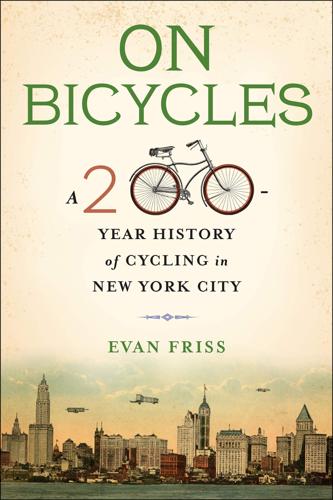
On Bicycles: A 200-Year History of Cycling in New York City
by
Evan Friss
Published 6 May 2019
(On the streets of New York alone, Lyft, Uber, and the like added an extra 600 million miles of driving between 2013 and 2016.) Although Citi Bike and Lyft may seem like an unnatural pair, Lyft imagines an integrated fleet of cars, scooters, and bikes, all electric.6 On my regular, nonelectric, and perhaps soon to be vintage Citi Bike, I pedaled over to the High Line, one of a number of rails-to-trails projects across the country where defunct transportation corridors have morphed into inviting spaces for walkers, hikers, and cyclists. Bicycles are, however, not invited to tour New York’s High Line. Those arriving by Citi Bike have to dock their wheels before climbing a set of stairs.
…
Identifiers: LCCN 2018045873 (print) | LCCN 2018049808 (ebook) | ISBN 9780231182560 (cloth : alk. paper) Subjects: LCSH: Cycling—Social aspects—New York (State)—New York. | Cycling—United States—History. | Cycling—New York (State)—New York—History. | Urban transportation—New York (State)—New York. | Bicycle commuting—New York (State)—New York—History. | Bicycle sharing programs—New York (State)—New York—History. | Cycling—Government policy—New York (State)—New York. Classification: LCC GV1045.5.N72 (ebook) | LCC GV1045.5.N72 F565 2019 (print) | DDC 796.609747/1—dc23 LC record available at https://lccn.loc.gov/2018045873 A Columbia University Press E-book.
…
See also Sadik-Khan, Janette New York City Housing Authority (NYCHA), 96 New York City Transportation Administration. See New York City Department of Transportation New York Cycle Club, 112, 114, 119 New Yorker, 3–4, 91, 96, 112, 166, 174 New York Herald, 70 New-York Historical Society, 72 New York Magazine, 128, 163, 167, 177, 227n38 New York Post, 3, 132, 140 New York Recorder, 70 New York Times: and bike lanes, 165, 178; and coverage of cycling, 13, 70; and messengers, 131; and velocipede ban, 21–22; and women racing, 60 New York Tourist Wheelmen, 77 New York World’s Fair, 80, 80, 86, 97, 103 Ocean Parkway, 48, 143 Ocean Parkway Wheelmen, 45 Olmsted, Frederick Law, 12, 48 parades, 6, 27, 29, 47–51, 50, 79–80, 86, 163.

The New Urban Crisis: How Our Cities Are Increasing Inequality, Deepening Segregation, and Failing the Middle Class?and What We Can Do About It
by
Richard Florida
Published 9 May 2016
Both public universities and private research universities receive substantial federal support, and many offer housing or housing subsidies to university faculty and staff, who often live in and spur gentrification in adjacent neighborhoods. Public investment in parks and green spaces also boosts gentrification. New York’s High Line park, for example, has generated billions of dollars of residential development along its corridor. Parks are attractive amenities in their own right, and they signal that a neighborhood is rising. Of course, large-scale publicly subsidized redevelopment efforts, such as Hudson Yards in New York City, Toronto’s waterfront initiative, and Pittsburgh’s North Side urban stadium district, pour massive amounts of taxpayer dollars into the transformation of formerly industrial districts, producing mixed-use developments that are magnets for knowledge workers and new urbanites and that lead to gentrification in adjacent neighborhoods.
…
This system would provide greater incentives to put land in high-priced urban centers to its most efficient and productive use, increasing density and clustering.10 Furthermore, under the current property tax system, landlords and property owners not only have disincentives to add density and further develop their properties, but they are able to reap extraordinary rewards, or rents, by simply profiting from the increase in property values that is created by neighborhood upgrading and the ongoing appreciation of real estate values. The High Line Park in New York, for instance, created a huge increase in the land value of surrounding property, which generated windfalls for real estate developers, but little if any of those gains were returned to the park or the broader community. The same is true on a smaller scale in virtually every urban neighborhood that is seeing an influx of new residents, new restaurants and cafés, new and better schools, or reductions in crime.
…
US and, 168–169, 174–175, 210–211 globalization of industry, 18 mega-slums and, 173–174 good jobs strategy, 205 Graham, Paul, 47–49 Gray, Freddie, 97–98 great housing reset, 200 green spaces, investment in, 66 Greene Street, 61–62 Gulden, Tim, 176 Harris, Chauncy, 128 Hartley, Daniel, 63–64 Helsinki, 16 (table), 17 High Line park, 37, 66, 194 high-speed rail, 197–198 high-tech industry centralization of, 19 density and, 43–45 economic inequality and, 47–49 economic segregation and, 111 gentrification and, 48–49 housing costs and, 37, 47–49 in New York City, 43, 44 (table), 45–47 rise of the rest and, 19 in Silicon Valley, 42, 45, 47, 175 talent, 42 3Ts of economic development and, xv urban density and, 43–45 variable of, 220–221 See also startup cities; venture capital investment hole-in-the-donut, 5, 7 homeownership capital drained by, 155 housing costs and, 156–157 subsidies, 199–201 Hong Kong global super-rich in, 40, 42 ranking of, 16 (table), 17 Hoover, Edgar, 128 housing policy, 199–200 urban workforce, 199 See also affordable housing; homeownership housing costs American Dream and, 190 in Austin, 29, 29 (fig.)
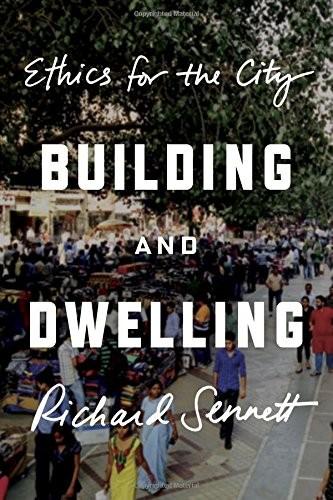
Building and Dwelling: Ethics for the City
by
Richard Sennett
Published 9 Apr 2018
Le Bon, Gustave Le Corbusier (Charles-Édouard Jeanneret) Modular Man Plan Voisin The Radiant City and rupture When the Cathedrals Were White Le Nôtre, André Le-Pré-Saint-Gervais, France Lebanon, civil war Ledoux, Claude-Nicolas Leibniz, Gottfried Wilhelm L’Enfant, Pierre Charles Leonardo da Vinci Letchworth Garden City Lévi-Strauss, Claude Levinas, Emmanuel libraries Lincoln, Abraham liquid modernity Liu Thai Ker Living Breakwaters berm local knowledge see street-smarts Locke, John London, approach to Berkeley Square Bloomsbury Bourne Estate Canary Wharf Clerkenwell commuter transport courtesy rituals in Docklands gentrification in green space Grenfell Tower fire Hatton Garden Heron Quay Herzen in immigration to Indians in Jews in Leather Lane legal experience map-making of Mayfair Metropolitan Police Act (1864) Millennium Dome Nelson’s Column at night paving Piccadilly pollution index population Ranelagh Gardens Saffron Hill sewers South Bank Spitalfields street cries terraces Trafalgar Square unemployment in Vauxhall Gardens waterways West India Docks Woburn Walk working class Lucretius On the Nature of Things Lussault, Michel Lynch, Kevin The Image of the City Lyons ForCity project McMillan Commission making and makers Mann, Horace Mann, Thomas, Buddenbrooks Mao Zedong markets, street see also Delhi: Nehru Place Márquez, Gabriel Garcia Marx, Karl The Communist Manifesto (with Friedrich Engels) Grundrisse der Kritik der politischen Ökonomie Masdar, Abu Dhabi mask of civility master-plan for cities master–slave relationship Mauss, Marcel May, Theresa (Prime Minister) Mazzanti, Giancarlo Meachem, John Medellín, Santo Domingo funicular libraries Parque Biblioteca España refugees in warning sounds in window boxes membranes Merholz, Peter metropolis, flight from Mexicans, as immigrants Mexico Mexico City population density transport Mies van der Rohe, Ludwig migrants, migration see also immigration Milton, John, Il Penseroso Missionaries and Cannibals (video game) MIT (Massachusetts Institute of Technology) Electronic Systems Laboratory Media Lab Mitchell, Melanie Mitchell, William City of Bits mitigation and adaptation mobility mobs model-making Monier, Joseph monocultures Montaigne, Michel de Moscow Gorki Street Moses, Robert motor traffic Mumford, Lewis ‘Mother Jacobs’ Home Remedies’ Technics and Civilization Munich Murger, Henri, La Bohème music, and type-forms Musil, Robert, The Man without Qualities Muslims Nash, John Nazism Negroponte, Nicholas Neighbour (as concept) neighbour assemblies neighbourhood Nelson, Horatio Lord Netherlands water management networks, closed and open New York, additive grid Battery Park City benches in Brookfield Place Central Park Chanin Building climate change projects commuter railroads Dirty Dick’s Foc’sle Bar docks Dryline berm East River East Village Eighth Avenue electric power station Fifth Avenue financial trading 14th Street Googleplex Greenwich Village Harlem High Line immigrants passing through John F. Kennedy International Airport life in Living Breakwaters local community loft spaces Lower East Side Manhattan La Marqueta New York Times tower 96th Street North End Avenue pollution index population Port Authority Queens Rector Place risk of flooding Seagram Building Sixth Avenue Spanish Harlem Staten Island, Tottenville stoops Sunnyside Times Square Tocqueville in traffic travel in Tribeca Union Square Upper East Side Upper West Side walking in Wall Street Washington Square water-edge projects waterways West Side Highway West Village White Horse Tavern, Greenwich Village Woolworth Building Zoo Newton, Isaac Nicolson, Marjorie Hope Nietzsche, Friedrich Nimwegen, Christof van Nolli, Giovanni Battista, map of Rome Obama, Barack octopus city Okakura, Kakuzo The Book of Tea Oles, Thomas Olmsted, Frederick Law Olsen, Donald open and closed systems open-systems thinking open forms incomplete multiple porous punctuated synchronous orientation verbal Ortega y Gasset, José orthogonal form Osborn, Frederic the Other, as alien or fraternal Buber and definitions of exclusion of fleeing Googleplex and isolation from and Neighbour shunning stereotypes of Oudolf, Piet Ovink, Henk Paccoud, Antoine Palestine Liberation Organization Palestinians Palladio, Andrea Paris, Bachelard in Balzac’s Bibliothèque Nationale Boulevard St-Germain Café de la Paix Champs-Élysées and Charter of Athens Commune courtyards department stores Eiffel Tower Haussmann’s boulevards Herzen in Hotel de Ville Hôtel Salé Jane Jacobs and Louvre La Madeleine church Marais quarter modernity of Montmartre at night Palais-Royal Périphèrique Place Louis XV (Place de la Concorde) Plan Voisin Proust’s public health in quays 7th arrondissement Stendhal’s traffic working class see also Le Corbusier, Plan Voisin Park, Robert E.
…
The landscaping combines ruderals, which are fast-growing plants that tend to die young, that is, most weeds, but also annual flowers; competitors which tend to crowd others out, but commit floral suicide by exhausting nutrients in the soil, as many grasses do; and stress tolerators like sea kale which need protection to get going, but once established do well in low-nutrient environments. The planting scheme in the High Line, using a system of tray-shaped enclosures, keeps the three going all at once, producing an illusion of ‘natural’ biodiversity for the visitor.27 In New York and other big cities, parks and playgrounds can be built in other unlikely places, again following Olmsted’s tie between artificial and sociable space. I was involved in one such project in the 1980s – a park built over a sewage treatment plant on the west side of Manhattan in Harlem, along the Hudson River.
…
This trigger is what we call in everyday language its ‘tipping point’. In a closed system, small events accumulate but they do not tip; rather, they add up step by step in a smooth fashion. The economic point for opportunity investors is that tipping points magnify value in making sudden big jumps. In New York’s High Line, for instance, a relatively small investment in weedy plants, street furniture, platform supports and stairs for the promenades produced infinitely greater value in the surrounding land, renovations and new buildings. In an open, opportunity-seeking way of investing, as the venture capitalist William Janeway observes, investors are focused on whether a particular deal can trigger other deals, rather than on whether it is profitable in itself.12 Exceptional deals jump-starting growth were easier to pull off in the early stages of the urban revolution; a generation ago, it wasn’t clear that cities were going to grow so fast in the south or to regenerate in the north.

Streetfight: Handbook for an Urban Revolution
by
Janette Sadik-Khan
Published 8 Mar 2016
Many cities are looking to replicate protected bike paths and pocket parks and plazas, adapting infrastructure to reproduce what the High Line has done or how Citi Bike has fundamentally transformed the basic metabolism of New York’s streets. New York City has proved that a new road order is possible. New York today is a renewed and renewing city, one changed in ways that even a decade ago would never have been predicted. Young people today grow up knowing New York as a bikeable big city, where bright blue bikes line the streets and where they can marvel at the city from the High Line, Governors Island, and other creatively adapted spaces. Millions walk annually in Times Square unaware of the former roadway.
…
See Sidewalks Summer Streets, 118–19, 122–23 traffic fatalities, 209–10, 211, 219–20 traffic grid of, 2 traffic safety ranking, 210 WalkNYC signs, 129, 130, 130, 131, 131–32, 133, 134 New York City Department of Transportation (NYCDOT), 13–15. See also specific projects chief mission, xiv–xvi DOT Academy, 39 head count, xiv–xv implementation of projects, xvi job offer by Bloomberg, xi–xii, xiii, xiv, 37 Planning and Sustainability Division, 38 PlaNYC. See PlaNYC New York City Fire Department (FDNY), 155–56, 162 New York City Marathon, 123 New York City Parkway Authority, 15 New York Daily News, 13, 175–76, 196 New Yorker, 173–74, 205 New York Knicks, 123 New York League of Conservation Voters, 177 New York Observer, 271 New York Police Department (NYPD), 156–57, 174, 207–8, 289 New York Post, 11, 176–77, 196, 197 New York Times, 144, 171, 174, 177, 194, 204–5, 215, 221, 242, 262, 291 New York University, 175 NIMBY (“Not in My Backyard!”)
…
Cities like San Francisco, Buenos Aires, and Mexico City are creating pocket parks atop former triangles of asphalt or reclaiming and activating forlorn spaces beneath highways, giving new life and creating the “small change” of street contacts from which public life can grow. Paris’s Plages and the Promenade Plantée and New York City’s High Line attract millions of visitors to former urban rail rights-of-way and roads turned into parks. These concepts have trickled down—and up—to tactical urban interventions that turn parking spaces into cafés or a mini park for a day. They are examples of urban alchemy, converting outmoded infrastructure into modern, public space that awakens cities and makes people want to move in and stay.
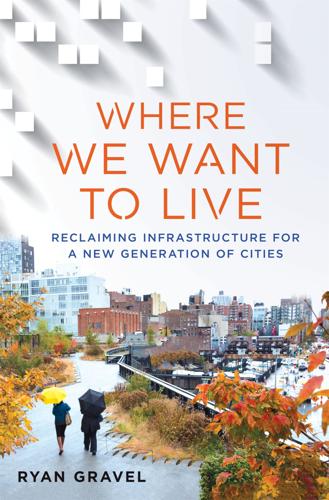
Where We Want to Live
by
Ryan Gravel
Published 2 Feb 2016
Perhaps more important, the design confirms that even in a real estate climate dominated by big development teams and celebrity architects, thoughtful, creative planning ideas—initiated at the grass-roots level—can lead to startlingly original results.11 Friends of the High Line was able to maintain those high standards, and the project has been acclaimed around the world largely because of their attention to design. It’s hard to imagine that a more conventional outcome would have compelled enough people to climb up onto the High Line and make it the top tourist destination in New York City. By drawing the public into a civic dialog through its ideas competition, Friends of the High Line embedded expectations for high-quality design into the very essence of the project, and this strategy has produced staggering results.
…
Only then can we even begin to achieve “a state of physical, mental, and social well-being.” 12 An Infrastructure for Economic Prosperity Every visit to the High Line is shocking. From the Whitney Museum and other designer buildings to hot local restaurants and celebrity sightings, there is always something new. Every corner of New York seems to be booming, but between Gansevoort and West 34th Streets, where the High Line connects block to block through the air, the construction intensity has a uniquely provocative vibe. More than any waterfront park or public square in the city, the High Line emanates a kind of good-looking lifestyle that, so far, seems to be timeless. Even if that novelty fades, however, and as locals grow more and more tired of its torrent of tourists, overhyped eateries, and exorbitant rents, there’s no question that the project itself has delivered, with great care in design, maintenance, and programming, a lovely and soul-lifting idea taken to a beautifully logical extreme.
…
The urgent pressures of gentrification notwithstanding, the High Line has maintained a valuable integrity to its place in the world and has created a built memory of time that otherwise would not exist. By almost any account, its only shortcoming is that people just love it too much. With its hordes of doting fans, looming tower cranes, and new landmark neighbors, it’s hard not to recognize the High Line as a new infrastructure of economic prosperity. Whether that brand of prosperity can translate to other cities, or even to other parts of New York, remains to be seen. For anyone trying, it’s important to understand that the High Line’s success has come within a historical context.
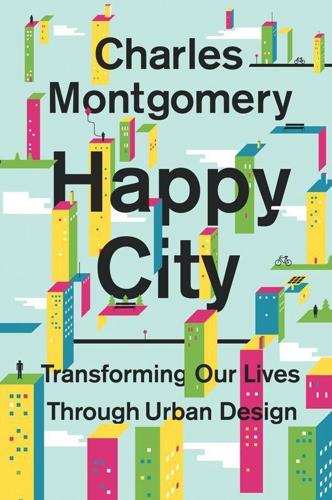
Happy City: Transforming Our Lives Through Urban Design
by
Charles Montgomery
Published 12 Nov 2013
Vancouverism: “Vancouverism is characterized by tall, but widely separated, slender towers interspersed with low-rise buildings, public spaces, small parks and pedestrian-friendly streetscapes and facades to minimize the impact of a high density population.” From Chamberlain, Lisa, “Trying to Build the Grand Central of the West,” New York Times, December 28, 2005, www.nytimes.com/2005/12/28/realestate/28transbay.html (accessed January 24, 2011). Cheonggyecheon River: Vidal, John, “Heart and Soul of the City,” The Guardian, November 1, 2006. High Line: High Line and Friends of the High Line, “High Line: Planting,” www.thehighline.org/design/planting (accessed September 15, 2012). bacteria found naturally in soil boosts seratonin: “Can Bacteria Make You Smarter?”
…
The other is that wherever they are implemented, such livability measures actually drive up land values. This may be good news for property owners and city coffers, but it is a disaster for renters. For example, a new light-rail line through Seattle’s Rainier Valley has attracted lots of new investment—but it has also begun to squeeze out people of color. New York City’s celebrated High Line Park has caused lightning-fast gentrification: the cost of residential property within a five-minute walk of the park more than doubled during the eight years straddling the park’s opening in 2009. No wonder these measures are viewed with suspicion. In a reversal of the last century’s prevailing trend, wealthy people are increasingly colonizing inner cities while poor people and new immigrants are pushed to the suburban fringes.
…
Chinese powerhouse of Guangzhou: Bradsher, Keith, “A Chinese City Moves to Limit New Cars,” New York Times, Global Business, September 4, 2012, www.nytimes.com/2012/09/05/business/global/a-chinese-city-moves-to-limit-new-cars.html (accessed April 29, 2013). one in ten pedestrians they counted: New York City Department of Transportation, “World Class Streets: Re-making New York City’s Public Realm,” consultant report, New York, 2008. Rude behavior: James, Leon, “Pedestrian Psychology and Safety: Sidewalk Rage/Pedestrian Rage,” DrDriving.org, www.drdriving.org/pedestrians (accessed March 3, 2012); “Study: NYC Sidewalks Getting More Crowded,” CBS New York, August 6, 2011, http://newyork.cbslocal.com/2011/08/06/study-nyc-sidewalks-getting-more-crowded (accessed March 3, 2012).
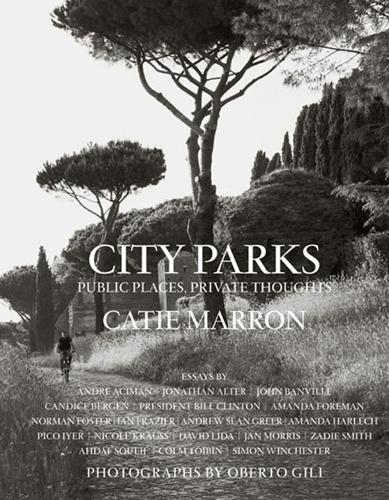
City Parks
by
Catie Marron
Amid this changing scene is the constant presence of the Tiergarten. High Line, New York | ANDRÉ ACIMAN For Annapaola Cancogni THEN AND NOW THERE IS A MOMENT—and it seldom lasts more than that—when the High Line wears two seemingly incompatible faces: old face and new face. One needs to catch the fleeting alignment of the two, but there is never a guarantee that it will happen, and hoping that it might, or even trying to make it happen, could easily ruin the spell. But unless that alliance does happen, the High Line remains either a leafy, new promenade frequently overlooking the Hudson, or a refurbished elevated rail track that was once destined for demolition.
…
In all this there is something persistently spare and stark about the High Line that takes me back to those by-now almost-imaginary and half-remembered black-and-white images of Andreas Feininger, Berenice Abbott, and Eugene de Salignac. New York then, and New York now, what’s lost, and what’s restored, what’s “as is” and what’s airbrushed. Much as the passage of time changes and dates almost everything in those old photographs, some things remain constant. Every time I stare at an image of this or that aspect of the High Line in a photograph snapped in the last century and in one taken just a few hours ago, I stare at the differences and the similarities, knowing that looking at one picture without immediately turning to look at its far older cousin taken decades ago makes no sense, is insufficient, cheats time of its meaning.
…
SIMON WINCHESTER, the author of some twenty-five works of nonfiction, was The Guardian’s South Asia correspondent, based in New Delhi, from 1976 to 1979. He currently lives in New York City and on a farm in the Berkshire Hills of western Massachusetts; his next book is The Men Who United the States. ABOUT THE CREATORS CATIE MARRON’S career has included investment banking, magazine journalism, and public service. She is currently co-chair of the board of directors of Friends of the High Line; a trustee of The New York Public Library, where she was chairman of the board for seven years; and a contributing editor of Vogue magazine, along with other involvements.
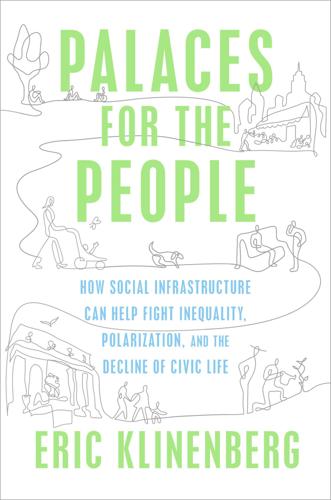
Palaces for the People: How Social Infrastructure Can Help Fight Inequality, Polarization, and the Decline of Civic Life
by
Eric Klinenberg
Published 10 Sep 2018
the air that pedestrians breathe a little cleaner: See Vanessa Quirk, “The 4 Coolest ‘High Line’ Inspired Projects,” ArchDaily, July 16, 2012, https://www.archdaily.com/254447/the-4-coolest-high-line-inspired-projects. an unrelated concern: Several recent books champion infrastructure investment, including Rosabeth Moss Kanter’s Move: How to Rebuild and Reinvent America’s Infrastructure (New York: W. W. Norton, 2016), Henry Petroski’s The Road Taken (New York: Bloomsbury, 2016), and Gretchen Bakke’s The Grid (New York: Bloomsbury, 2016); yet none call attention to the value of social infrastructure.
…
The most significant legacy of this project is a set of magnificent subway stations in Moscow, each decorated with marble, grand chandeliers, mosaics, and sculptures, as well as a number of housing complexes and social clubs for Soviet workers. CHAPTER ONE: A PLACE TO GATHER strong incentives to stay away: A study by New York University’s Rudin Center for Transportation ranks East New York last in Brooklyn for public transit access to jobs within one hour, and among the worst in all of New York City. See Sarah Kaufman, Mitchell Moss, Jorge Hernandez, and Justin Tyndall, “Mobility, Economic Opportunity and New York City Neighborhoods,” November 2015, https://wagner.nyu.edu/files/faculty/publications/JobAccessNov2015.pdf. studies of isolation have found as well: See Neal Krause, “Neighborhood Deterioration and Social Isolation in Later Life,” International Journal of Aging and Human Development 36, no. 1 (1993): 9–38.
…
The district is one of the poorest in New York City, with about half the residents living below the poverty line. It’s also one of the most segregated. Nearly 95 percent of residents are black or Latino, and only 1 percent are white. Social scientists sometimes call East New York socially isolated, because its peripheral location and limited public transit options restrict access to opportunities in other parts of the city, while people who don’t live there have little reason to visit and strong incentives to stay away. The area is among the most violent neighborhoods in New York City, with especially high levels of homicide, felony assault, and sexual assault.
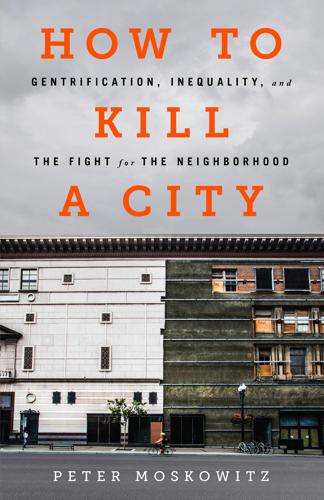
How to Kill a City: The Real Story of Gentrification
by
Peter Moskowitz
Published 7 Mar 2017
See also evictions De Forest, Robert, 188 Foster, Angela, 84–85 French Quarter (New Orleans), 16, 62 Freret Street district (New Orleans), 17, 57–60 Friedman, Milton, 49–50 Garden District (New Orleans), 16, 18–19 Geffrard, Erlin, 129 Genetta, Karen, 182–184 gentrification, 4–10, 22–24, 31–37, 55–57, 67–68, 178 anti-blight efforts and, 20–21, 96–97 attempts to challenge, 187–188, 197–201, 206–207, 216 city-as-growth-machine philosophy and, 139 colonial metaphors and, 36, 215 as “consequence of progress,” 64–65 consumption-driven explanations for, 9, 35–36 “creative class” and, 79–82, 93, 96 cultural loss and, 4–5, 10, 21, 30, 35, 55, 57, 129, 133, 143, 174–176, 179–180 de-gentrification, 217–218 depopulation of neighborhoods prior to, 193–194 in Detroit, 7, 33, 40, 68, 73–74, 83, 86, 89–90, 91, 95–96, 116 displacement of prior residents and, 4, 6, 45, 55, 64, 67–68, 76–77, 131, 143, 177, 181–182, 215 distinct stages of, 6, 32–35, 56, 61, 65 effects of on gentrifiers, 56, 61 “gentrification of the mind,” 136, 177 as global problem, 204–205 government policies supporting, 40–42, 96–97, 116–117, 178, 192 hipsters and, 4–5, 8–9, 22–23, 37, 56, 65 history of, 31–32, 188–190 homogeneity and, 58, 159 housing policy and, 5, 9, 116–117, 142 inequality and, 5, 23, 82, 116–117, 206 LGBT community and, 33, 80 loss of culture and, 56–58, 159, 180 in New Orleans, 6–7, 17–18, 23–24, 33–34, 47, 58–59, 64, 68 in New York City, 1–4, 7, 39–40, 56–57, 165–168, 171–175, 178, 188, 201, 204 nonprofit organizations and, 27–28, 31 policing and, 175–176 potential solutions to, 9–10, 210–214 private security agents and, 34, 60, 94, 167, 171 private subsidies and, 95, 178 protests against, 175, 207–208 public transportation and, 23, 86–88, 140, 143–144 real estate development and, 37–39 rent gap theory and, 37–40, 106 rezoning and, 179, 199–200 in San Francisco, 8, 40, 68, 131, 137 self-image of gentrifiers, 59, 61–62, 65, 75, 95, 141–142, 163, 176–178 suppression of memory and, 210 tax incentives and, 6, 23, 60, 62–63, 117, 128 tension between newer and older residents, 60–61 use vs. exchange values and, 139–141 wealthy residents’ view of, 63–65 white-owned businesses and, 36–37, 47, 59–60, 84–85 “gentrification of the mind,” 136, 177 geography of class, 82, 106, 117 Gilbert, Dan, 74–78, 83, 87–88, 94, 96–97, 116–117 Gilbertville (Detroit), 75, 93 Gilmartin, Mary-Anne, 180 Ginsberg, Alan, 168 Glapion, Wayne, 47–49 Glass, Ruth, 31 Glen, Alicia, 203–205 globalization, 79, 189 Glover, Henry, 48 Gordon, Max, 74–76 government bonds, 42, 173 Grant, Cary, 157 Greenpoint (Brooklyn), 178, 194 Greenwich Village (New York), 1–3 author’s experience of, 1–2, 165–168, 170 East Village, 174–175 HIV crisis and, 194 lack of development in, 212 Grosse Pointe, MI, 109 Guzman, Leticia, 131–132 Hackworth, Jason, 23, 42 Hantz, John, 97 Harlem (New York), 39, 172, 194, 210 Harvey, David, 141 Hastert, Dennis, 67 Hatch Detroit, 84 Haussmann, Georges-Eugène, 154–155 Hayden, Dolores, 156 Hayek, Friedrich, 41 Head, Stacy, 20–21 Heindel, Leslie, 61, 64–65 Henry, Imani, 210 High Line park (New York), 169 highway system federal subsidization of, 115–117, 157–158 housing segregation and, 101, 106, 115–116 suburbs and, 157–158 urban renewal and, 115, 138–139, 173 Hill, Alex B., 84 hipsters, 8, 197 Brooklyn and, 8, 177–178 gentrification and, 4–5, 8–9, 22–23, 37, 56, 65 HIV crisis, 194 Hollywood, 157 Home Owners Loan Corporation (HOLC), 111–113 Hong Kong, 142–143 Hood, Ida, 119 Hood, Lauren, 117–120 Hoover, Herbert, 110, 155 Hope, Bob, 157 Hope VI program, 52, 54 hotels, 215 housing as human right, 205 housing policy, 142–144.
…
Chapter 10: An Elegy Westbeth, the first federally subsidized artists’ colony: Anemona Hartocollis, “An Enclave of Artists, Reluctant to Leave,” New York Times, November 21, 2011. New York governor Andrew Cuomo… brokered a deal: Charles Bagli, Other People’s Money (New York: Penguin Group, 2013), 141. There were originally 70,000 rental apartments available: Ronda Kaysen, “Divided by a Windfall: Affordable Housing in New York Sparks Debate,” New York Times, November 14, 2014. 57 percent of apartments are vacant: Julie Satow, “Pied-à-Neighborhood: Pieds-à-Terre Owners Dominate Some New York Buildings,” New York Times, October 24, 2014. Absentee homeownership has grown by 70 percent: Sam Roberts, “Homes Dark and Lifeless, Kept by Out-of-Towners,” New York Times, July 6, 2011.
…
Meanwhile, employment in finance, insurance, and real estate: Suleiman Osman, The Invention of Brownstone Brooklyn (New York: Oxford University Press, 2011). officials seemed befuddled that the city’s economy: Zukin, Loft Living, 28–29. The number of manufacturing jobs in New York City was cut in half: “New York City’s Decline in Manufacturing Gained Momentum in 1980,” New York Times, March 22, 1981. On October 17, 1975, New York City owed banks: Jeff Nussbaum, “The Night New York Saved Itself from Bankruptcy,” New Yorker, October 16, 2015. “Ford to City: Drop Dead”: Sam Roberts, “Infamous ‘Drop Dead’ Was Never Said by Ford,” New York Times, December 28, 2006. Ravitch was even brought in to help Detroit: Matthew Dolan, “Detroit Looks to Re-engineer How City Government Works,” Wall Street Journal, November 10, 2014.
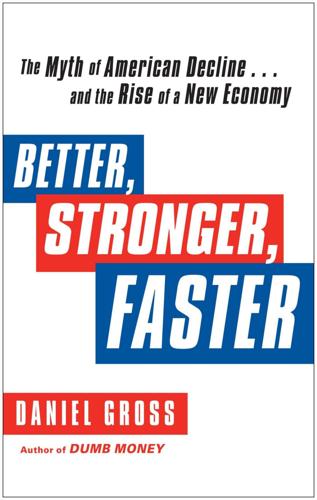
Better, Stronger, Faster: The Myth of American Decline . . . And the Rise of a New Economy
by
Daniel Gross
Published 7 May 2012
Build something new, something interesting, something useful, and it invites others to do the same. Take the High Line. The elevated freight rail line on the West Side of Manhattan was unused and in disrepair until a group of arty visionaries had the idea of turning it into a park. It has become a platform for billions of dollars of investment in stores and restaurants, condominiums, offices, and hotels. Not every place is New York, but many regions and many cities could benefit from the sort of network effects that New York enjoys. Many of the biggest metropolitan areas in the United States are remarkably unnetworked.
…
They had come to get married at the observation deck atop the General Electric building in Rockefeller Center. Walk the length of the High Line, the once-derelict elevated railroad track turned chichi promenade in Manhattan’s Meatpacking District, and you’ll scarcely hear a word of English spoken.4 When an Indian technology executive visits New York and spends money at the Gap and the Marriott, that’s calculated in the national accounts as an export. When an American spends money at the Uffizi Gallery in Florence, that’s an import. But Americans’ lack of curiosity about the rest of the world is counteracted by the rest of the world’s curiosity about America.
…
Corp., 91–92 Linden, Greg, 140 LinkedIn, 71, 203–4 liquefied natural gas (LNG), 105–6 literary works, 127–28 Living Social, 203 Lloyds, 38–39 loans, lending, lenders, 4, 79, 133, 180, 221 easy money and, 9–10 efficient consumers and, 189–90 FDI and, 83, 85, 90, 93–94 restructuring and, 45, 47–51, 55 timely policy decisions and, 33–36, 38, 40–42 see also debt; mortgages London, 19, 23, 61, 82, 144 “Long View on Housing, The,” 220 Los Angeles, Calif., 84, 113–14, 126, 144–45, 171 efficiency economy and, 67–68 exports and, 114, 122–23 Loughlin, Michael, 49 McCarthy, Timothy, 67 McDonald’s, 83, 95, 123, 152, 199, 202 inports and, 137, 141, 143–44 McKinsey & Company, 19, 62, 72, 225 Mack Molding, 67 MacLeod, Andrew, 159–60 McLernon, Nancy, 96 Macroeconomic Advisers, 220 Made in America, Again (Sirkin et al.), 166–67 Magaziner, Ira, 70 Magnolia Bakery, 144–45 Magrath, Joan, 67 Maiden Lane transactions, 32–33, 36 Major League Soccer, 126 Mak, Paul, 142–43 Malinowski, Diva, 161–62 Malkin Properties, 69–72 management consulting, 61 Mankiw, Gregory, 193 manufacturing, 20, 26 of autos, 21, 26, 79, 134–36, 173–74, 210, 227 efficiency economy and, 61–62, 64, 67–68, 77–80, 178, 227 employment and, 166–68 exports and, 98–99, 107, 109–10, 112, 116 factory closings and, 9, 15, 79 FDI and, 82–83, 85–91, 96–97 inports and, 134–36, 140, 227 North Dakota and, 159–60 recoveries and, 18, 21 reshoring and insourcing of, 164–78 restructuring and, 45, 51 supersizing and, 199–201, 211 Marbury, Stephon, 126–27, 227 Marcellus Shale, 79, 86 Marchionne, Sergio, 87 Marfrig, 95 markets, 5, 7, 198–99, 221, 224 autos and, 41–42, 79, 192 for credit, 33–34, 36, 43, 49 efficiency economy and, 62–63, 68, 70–71, 75, 79, 227 efficient consumers and, 190–93 employment and, 53–54, 62–63, 167–68, 190, 204 exports and, 99, 105, 112–13, 116, 121–22, 127, 129–31, 154–55, 159 FDI and, 82–84, 86–88, 90, 93–94 forecasts and, 17–18, 28 global, 22, 106 in history, 24–25 and housing and real estate, 12, 18, 42, 53–54, 70–71, 84, 105, 111, 156, 171, 191, 212 inports and, 133–34, 136–40, 146 North Dakota and, 154–56, 159, 161–62 recovery and, 21, 215–16 restructuring and, 48–51, 54, 136 supersizing and, 199, 201–4, 206 timely policy decisions and, 31–36, 41–43 see also emerging markets; stocks, stock markets Mary Kay, 132, 141–43, 227 Mayer, Christopher, 212 MDU Resources, 152–53 Meeker, Mary, 21–22 Mercer Consulting, 168 Merrill Lynch, 47–48, 53 methane gas, 66 Mexico, 65, 89, 154, 159 exports and, 100, 104, 122 FDI and, 84–85 inports and, 138, 145 and reshoring and insourcing, 172–74 supersizing and, 202–3 Miami, Fla., 2, 82, 89, 91, 95, 144 Michigan, 15, 118–19, 135–36, 169, 174 Microsoft, 143, 160 middle class, 20, 25, 94, 127, 144 Middle East, 21, 203, 228 exports and, 108–9, 112–13, 123 inports and, 132, 145 Millennium Bulk Terminals, 103 Millward Brown, 143 Milner, Yuri, 84 Mittleider, John, 154 Moinian Organization, 94 monetary policy, 19, 30, 32 money market fund industry, 33–34 Moody’s, Moody’s Analytics, 1, 31, 190, 207 Morgan Stanley, 21–22, 37, 53, 74 mortgage-backed securities, 34–36 mortgage equity withdrawal (MEW), 54, 56 mortgages, 2, 12, 24, 156, 164, 212, 219, 225 efficient consumers and, 190–91 and Fannie Mae and Freddie Mac bailout, 42–43 refinancing of, 34–35, 54, 190 restructuring and, 45, 50, 53–55, 57–58 subprime, 16–18, 39, 82 timely policy decisions and, 30, 32, 34–36, 39, 42–43 Motion Picture Association of America, 128 Mountain Area Information Network (MAIN), 209–10 Mubadala Healthcare, 145 Murck, Christian, 166–67 Murphy, Roger, 169 MVP RV, 96–97 National Foundation for American Policy, 117 natural gas, 79, 86, 102 exports of, 105–6 in North Dakota, 151–53, 157 NBC/ Wall Street Journal poll, 3 NCR, 174–76, 178 Ness, Ron, 152 Nest Learning Thermostat, 195–96 Netherlands, 14, 81–82, 86, 198 networks, networking, 66, 71, 77, 96, 176, 197 supersizing and, 199, 201–4, 206–9, 211–13 New Deal, 14, 18 New England Smart Energy, 187–88 New Jersey, 50, 111, 211–12, 216, 225 New Jersey Nets, 85, 126 Newsweek, 3, 15–16, 19, 93, 229–30 New York, 8, 19, 26, 41, 47, 89, 108, 111, 141, 148, 154, 156, 172, 224–25, 228 efficiency economy and, 61, 68–72, 74 efficient consumers and, 192–93, 195 exports and, 118, 121–22, 125, 127 FDI and, 82, 84–85, 92–95 inports and, 144–46 restructuring and, 49–50 supersizing and, 204–6, 211–13 New York City marathon, 228 New Yorker, 183–84 New York Federal Reserve Bank, 32, 55–56 New York Stock Exchange, 7, 12–13, 48, 133 New York Times, 6, 9, 19, 72, 85, 100, 119, 141, 174, 178 Next Convergence, The (Spence), 100 Nike, 119, 140, 168–69 9/11, 18, 109, 118, 120–21, 145 Nishimura, Kiyohiko, 29–30 Nixon, Richard, 26, 218 Noah, Timothy, 199–200 Nooyi, Indra, 117–18 Normandy Real Estate Partners, 50 Norris, Floyd, 19 North Dakota, 148–63, 212 agriculture in, 149, 153–58, 162 demographics of, 149, 159–62 economic decline of, 149–50 education in, 153, 157–58, 160–62 efficiency economy and, 158–59 housing in, 150–52, 155–56, 158 oil in, 79, 148, 151–53, 157, 160, 162, 223 sovereign wealth fund of, 156–57 nuclear power, 7, 24, 74, 109 NUMMI, 79 Obama, Barack, 2, 77, 99, 205, 222 economic decline and, 3, 5–6, 10, 15 financial crisis and, 6, 12–13 restructuring and, 54–55 timely policy decisions and, 30, 33, 54–55 “Obama’s Radicalism Is Killing the Dow” (Boskin), 5 Odake, Shin, 93 offshoring, 83, 94, 98, 110, 133, 147, 164, 167–68, 171–73, 175 oil, 26, 100, 102, 165, 217 domestic production of, 79–80, 86, 148, 151–53, 157, 160, 162, 222–23 efficiency economy and, 75, 77, 79–80, 222–23 efficient consumers and, 188–89 FDI and, 86, 95 price of, 15, 75, 77, 153, 172, 188 On China (Kissinger), 127 O’Neill, Jim, 23 Organization for International Investment (OFII), 83, 95–97 output gap, 9 Outrageous Fortunes (Altman), 141 Outsourced, 171 outsourcing, 26, 62, 98, 169, 171–72, 175 Panama Canal, 208 Paris, 68, 109, 137, 144 Parish, Robert, 170–71 Paulson, Henry, 32–33 Peabody Coal, 103 pecans, 100 Peek, Jeff, 47 Peerless Industries, 178 Peisach, Alberto, 88–90 pensions, 91, 132, 181, 216 inports and, 136–37, 147 Pepsi, PepsiCo, 117, 133, 143 Petrobras, 95 Philadelphia, Pa., 65–66, 110 Philadelphia Federal Reserve Bank, 17 Plastic Omnium, 68 Plaza Hotel, 84 politics, politicians, 21–23, 25–26, 61, 148, 163, 167, 218–19, 221 crises and, 15, 29 economic decline and, 5–6 infrastructure and, 205, 211 and reshoring and insourcing, 175–76 timely policy decisions and, 28–31, 40, 43 pools, 185–87 Popper, Deborah Epstein and Frank J., 149–50 Porter’s Fabrication, 176 Poss, Jim, 64–65, 68 Post-American World, The (Zakaria), 19 Poughkeepsie-Highland Bridge, 225–26 poverty, 16, 19, 25, 100, 124, 141, 164, 225 Power, Thomas M., 103 power plants, 7, 72–74 Prague, 139–40, 144 Pratt & Whitney, 108 Principles of Economics (Mankiw), 193 procyclicality, 45, 58, 72–73 production, productivity, 81, 96–103, 215 in agriculture, 100–101, 122 efficiency economy and, 60, 62–63, 65, 73, 78–80, 107, 223–24 efficient consumers and, 181–82, 184, 189, 195 employment and, 163–64, 166–69 exports and, 98–101, 103, 105–7, 109–13, 115–16, 122–23, 131, 226 FDI and, 86–87, 89–90, 96–97 inports and, 131–32, 134–37, 140–43 North Dakota and, 150, 153–54, 157, 159 and reshoring and insourcing, 169–73, 175–79 supersizing and, 199–202, 206–8, 210 U.S. economic importance and, 227–28 profits, profit, 16, 81, 198, 204, 215, 225 efficiency economy and, 62, 65, 76, 78 efficient consumers and, 183, 193–94 exports and, 104, 128–29 inports and, 133, 136, 140, 146–47 restructuring and, 44, 52–53, 58 timely policy decisions and, 33–36, 38–39 Prokhorov, Mikhail, 85 propane, 185–86 Pulaski County, Va., 88–91 Pulpy, 138 Qatar, 108, 145 quantitative easing (QE), 30, 34, 57 railroads, 110, 200, 224–25 FDI and, 13, 81–82, 90, 95 supersizing and, 206, 208–9, 211–12 Ratner, Bruce, 85 Rawlings, 169–70 real estate, 89, 105, 167, 171, 204, 226 efficiency economy and, 68–74, 80 FDI and, 83–85, 92–94, 96 in Japan, 8, 30 restructuring and, 45, 49–51 supersizing and, 212–13 see also houses, housing RealtyTrac, 55 recessions, 9, 13, 23, 26, 180, 221 see also Great Recession recoveries, 4, 9, 17–19, 21, 26, 28, 57, 60, 75, 99, 162, 180, 199, 218, 225 economic pessimism and, 22–23 restructuring and, 45, 51, 80 slowness of, 17–18 strengthening of, 215–17 recycled paper, 107 reengineering, 61–62, 69–70, 113 Regional Plan Association, 211 Regions Financial, 38 regulations, regulation, 2, 10, 16, 19, 25, 29, 52–53, 102, 212 Reid, T.
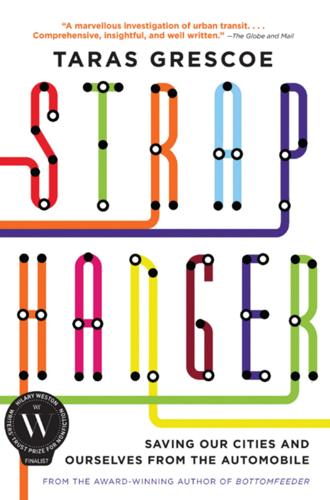
Straphanger
by
Taras Grescoe
Published 8 Sep 2011
In many ways, the Department of Transportation is the largest real estate developer in New York City.” To her credit, Sadik-Khan is capable of enacting change on the streets as rapidly as she talks. “In certain areas, we can transform pavement to plazas in a matter of days. I think New Yorkers are really tired of waiting ten or fifteen years to see any kind of change. Whenever we create a public space, it’s amazing: people just materialize out of thin air in minutes.” After talking to Sadik-Khan, I strolled over to the Meatpacking District, and climbed several flights of stairs to the High Line, a disused New York Central rail line that has been turned into a gorgeous elevated promenade.
…
For some reason, it was always Queens Plaza.” All in all, though, the service was better than he could remember it ever being. “Really, in New York, it’s just dumb not to take the subway.” If I lived in New York, I’d be a full-time straphanger, too. When I was in my thirties, I toyed with the idea of relocating, and Erin and I still talk about spending a year or two in Manhattan—an idea that gets more appealing as more streets get pedestrianized, the network of bike paths grows, and parks like the High Line open. The reality is we’d probably end up in more affordable Brooklyn, where some of our friends now live. In the meantime, we get to visit, and our first order of business almost always involves ducking into a subway station, to charge up our MetroCards.
…
Hood, Clifton. 722 Miles: The Building of the Subways and How They Transformed New York. New York: Simon & Schuster, 1993. “In a Blizzard’s Grasp.” The New York Times, March 13, 1888. Jacobs, Jane. The Death and Life of Great American Cities. New York: Vintage, 1961. Kennedy, Randy. Subwayland: Adventures in the World Beneath New York. New York: St. Martin’s Griffith, 2004. Neuman, William. “Cars Clogging New York? Most Are from the City.” The New York Times, January 12, 2007. “New York’s First Underground Railway.” The New York Times, August 28, 1904. Ouroussoff, Nicolai. “Outgrowing Jane Jacobs.” The New York Times, April 30, 2006. Sargent, Greg.
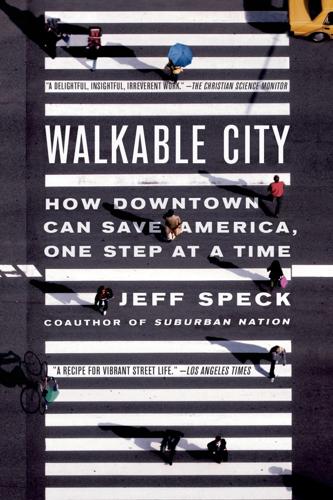
Walkable City: How Downtown Can Save America, One Step at a Time
by
Jeff Speck
Published 13 Nov 2012
Asia: East Asia China: Hangzhou Hong Kong Shanghai Japan Kawasaki Tokyo South Korea: Seoul: Cheonggyecheon Freeway Eurasia: Russia: Moscow Middle East: Iraq: Baghdad United Arab Emirates: Abu Dhabi Dubai Southeast Asia: Singapore Australia, see Oceania Europe Austria Vienna Czech Republic: Prague Denmark Christiansfeld Copenhagen France Paris Champs Élysées Opéra Pompidou Center Germany Berlin Düsseldorf Frankfurt Italy: Florence Palazzo Medici Rome Piazza dei Navigatori Piazza Navona Trastevere Siena: Piazza del Campo Venice Luxembourg Netherlands: Amsterdam Oosterwolde Rotterdam Norway: Oslo: Fornebu Airport Russia: Moscow Spain Barcelona Passeig de Gràcia Bilbao: Guggenheim Museum Sweden Stockholm Switzerland: Zürich United Kingdom England London Wiltshire North America Canada British Columbia: Vancouver Ontario: Toronto Quebec: Quebec City Yukon Territory United States Alabama: Birmingham: Homewood Mountain Brook Mount Laurel Arizona: Phoenix Tucson Arkansas: Little Rock California Northern California: Berkeley South Berkeley Carmel-by-the-Sea: Ocean Avenue Davis Fremont Oakland Palo Alto Alma Place San Francisco Central Freeway Chinatown Dolores Street Embarcadero Ghirardelli Square Guerrero Street Mission Street Octavia Boulevard South Van Ness Avenue Valencia Street Southern California Anaheim: Disneyland: Main Street Bakersfield Beverly Hills Irvine Long Beach Los Angeles Downtown Disney Hall Hollywood Sunset Boulevard Mulholland Drive Westwood Village Monterey Park Palm Springs Pasadena: Old Pasadena Riverside San Diego Santa Barbara Santa Monica: Third Street Promenade Ventura West Hollywood Colorado Aspen Boulder Colorado Springs Denver LoDo Union Station Wynkoop Brewery 16th Street Telluride Telluride Mountain Village Connecticut Hartford New Haven District of Columbia Washington Columbia Heights: DC USA Georgetown K Street U Street Florida Coral Gables Fort Lauderdale Jacksonville Miami Coconut Grove Little Havana Calle Ocho Miami Beach South Beach Art Deco District Espanola Way Espanola Plaza Naples: 5th Avenue South Orlando Colonial Drive Disney World: Main Street Edgewater Drive Palm Beach Worth Avenue Pensacola Rosemary Beach Tampa Ybor City Georgia Atlanta Buford Highway Savannah East Broad Street Hawaii: Honolulu Illinois: Chicago Loop Millennium Park State Street Elk Grove Township Lake Forest Indiana Carmel Indianapolis Iowa: Cedar Rapids Davenport Des Moines Kansas: Lenexa Kentucky: Louisville Louisiana: Baton Rouge New Orleans French Quarter Maryland Baltimore Montgomery County Gaithersburg: Kentlands Potomac River Massachusetts Belmont: Belmont Hill Boston Back Bay: Symphony Hall Downtown City Hall Green Line North End Cambridge Cape Cod: Mashpee Commons Lexington: Lexington Center Lowell Memorial Auditorium Merrimack Street Northampton Michigan Detroit Michigan Theatre Grand Rapids Monroe Place Minnesota: Minneapolis Mississippi Missouri: Kansas City Saint Louis Pruitt Igoe Montana Nevada: Las Vegas Fremont Street Strip New Hampshire: Manchester Portsmouth New Jersey Hoboken New Mexico: Albuquerque Santa Fe New York Buffalo Hamburg,, Village of New York City Brooklyn Brownsville Downtown: Sands Street Park Slope: Prospect Park West Manhattan Lower Manhattan Battery Park City Financial District High Line SoHo Tribeca Union Square West Village Midtown Broadway Madison Avenue Ninth Avenue Rockefeller Center Seventh Avenue: Penn Station Times Square West Side Highway Upper West Side: Amsterdam Avenue Columbus Avenue North Carolina: Chapel Hill Charlotte Greenville Ohio: Akron: Main Street Beachwood Cincinnati Cleveland Columbus: Short North Oklahoma: Oklahoma City Tulsa Oregon Beaverton Cornelius Eugene Portland Harbor Drive Hoyt Rail Yards MAX Light Rail Powell’s Books Springfield Pennsylvania: Bethlehem Wyandotte Street Lewistown New Castle Philadelphia Hotel Palomar Ninth Street and Passyunk Avenue Geno’s Steaks Pat’s King of Steaks Pittsburgh Duquesne Incline Monongahela Incline Rhode Island South Carolina: Charleston East Bay Street Market Street Chucktown Tavern Greenville South Dakota Tennessee: Chattanooga Knoxville Memphis Nashville Texas: Abilene Dallas Houston San Antonio Riverwalk Utah: Salt Lake City South Jordan Vermont Burlington Virginia Alexandria Arlington Richmond Tysons Corner Washington: Seattle Alaskan Way Viaduct Central Business District Pacific Place Shopping Center South Lake Union District Vancouver: Main Street West Virginia: Wheeling Wisconsin: Madison Milwaukee: Lake Michigan Park East Freeway Wyoming Oceania: Australia New South Wales: Sydney Victoria: Melbourne Western Australia New Zealand: Auckland South America: Brazil: São Paulo Colombia: Bogotá GENERAL INDEX The index that appeared in the print version of this title does not match the pages in your eBook.
…
From 1962 to 2005, a central zone dedicated to pedestrians and bicycles has grown sevenfold in size, from about four acres to over twenty-five acres.31 In concert with this effort, the city has been eliminating 2 percent of its downtown parking spaces every year, for the past thirty years.32 Gehl has recently been consulting to the City of New York, which turned a stretch of Broadway in Times Square into a pedestrian park with great results. The city has also completed about twenty blocks of the spectacular High Line project, a former elevated railway that has been converted to a linear park, perhaps the most delightful piece of civic art to have been created since midcentury. You’ve probably seen the pictures, and they don’t lie: these public amenities are a real boon to the livability of their neighborhoods and are well used in all but the worst weather.
…
Trading with the Enemy: An Exposé of the Nazi-American Money Plot, 1933–1949. New York: Delacorte Press, 1983. Hurst, Robert. The Cyclist’s Manifesto: The Case for Riding on Two Wheels Instead of Four. Helena, Mont.: Globe Pequot Press, 2009. Illich, Ivan. Toward a History of Needs. New York: Pantheon, 1977. First published in 1973. Jacobs, Alan. The Boulevard Book. Cambridge, Mass.: MIT Press, 2002. _____. Great Streets. Cambridge, Mass.: MIT Press, 1993. Jacobs, Jane. Dark Age Ahead. New York: Random House, 2004. _____. The Death and Life of Great American Cities. New York: Vintage, 1961. Koolhaas, Rem, Hans Werlemann, and Bruce Mau. S,M,L,XL. New York: Monacelli Press, 1994.
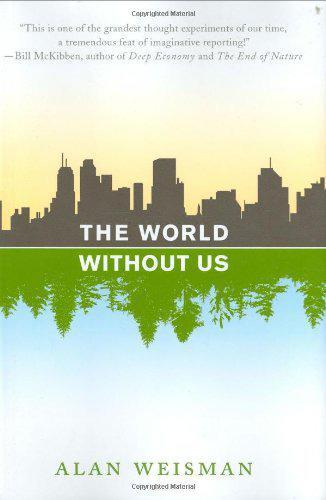
The World Without Us
by
Alan Weisman
Published 5 Aug 2008
J., 66 McGrath, Steven, 157–59, 159 Magic Flute, The (Mozart), 251 Mahler, Gustav, ix Maine cultivation, effects of, 146–47 stone walls, 146 Mannahatta Project, 22–24, 30, 32–33 Marathon, 135 Marburg virus, 239–40 Marconi, Guglielmo, 252, 254 Martin, Paul, 55–58, 58–59, 61, 63–64, 65–67, 80–81, 271 Mastodons, 56 Mathews, Mike, 236–37 Mau Mau Rebellion, 72–73 Mayan civilization, 223–24, 226, 227–28, 228–29 agriculture, 227 archaeological excavations, 224, 227 burials, 227 collapse of, 224–25, 228 cruelty of, 226 vegetation overrunning, 225, 226 wealth, 227 Mehringer, Peter, 65 Mellaart, James, 106 meltdowns, 212–13, 213–14, 214–16 mercury plants reengineered to absorb, 159 Meso-Americans European diseases and, 61 Mesozoic Era, 230–31 metal wiring and plumbing, remains of, 38 moa extinction of, 63, 191 moa-nalo extinction of, 192 Molina, Mario, 204 monkeys red-tailed and blue monkeys, 45–46 See also primates Monte Verde (Chile), 60 Moore, Charles, 121, 123, 123–24, 124, 125 Moser, Edda, 251 mosquitoes flourishing without humans, 129–30 Mount Hasan Da (Turkey), 106–7 Mount Kenya (Kanya), 72, 73 Mount Kilimanjaro (Tanzania), 79 Mount Rushmore (SD), 181–82 mountains erosion of, 120–21 mountaintop removal for coal mining, 221–23, 222 Mozart, Wolfgang Amadeus, 251 Münir, Metin, 96–97 Murray Springs (AZ), 63–64 museums and museum vaults durability of, 37 musk oxen, 220 Mzima Springs (Kenya), 77 Nairobi National Park, 78–82 National Museums of Kenya, 68 National Wildlife Refuges contaminated sites as, 207, 267 Nature Conservancy, The, 140–41, 258 Navajo people, 120 New England agriculture in, 146–47 cultivation, effects of, 146–47, 149–50 Erie Canal and, 147 forests, 148–50 forests, increase of, 147 Native Americans and, 147–48 stonewalls, 146 New Scientist Magazine, 165 New York Botanical Garden Hemlock Forest, 28–30, 32 New York City animal life, 36–37 biodiversity, 27–28, 32 bridges, 33–36 flooding of, 41–42 garbage landfills, 37–38 Hemlock Forest, 28–30 High Line (elevated railroad bed), 27 Lenni Lenape people, 23, 32, 33 Mannahatta Project, 22–24, 30, 32–33 MTA subway system, 105 natural state, 28–30, 33 next Ice Age and, 37–38, 39 original geography, 22–23 pavement, 26–27 plant and tree resurgence, 27, 27–28 skyscrapers, collapse of, 28 Statue of Liberty, 37, 246–47 statue of Waładysław Jagiełło, 21–22, 247 subway system, 24–26 underground water, 22–23 wiring and plumbing, remains of, 38 without humans, 25–26, 26–27, 27–28, 35–36, 36–38, 41–42 See also North America; South America Newhouse, Fred, 137–38, 141–42 newspapers ecological damage from, 119–20 Nicosia (Cyprus), 91 Nogales (Sonora, Mexico), 65 North America biological interchange, 180–81 Carnegie Desert Botanical Laboratory (Arizona), 55 drought, 168 extinctions, 56–58, 62–63, 63–64 fossils, 53–55, 62–63 placental mammals, 180 reintroduction of elephants, 81 reintroduction of horses, 71 reintroduction of top predators, 271 See also New England; New York City; South America North Pacific Subtropical Gyre (horse latitudes), 121, 122, 123–24 Novozybkov region (Russia) fallout from Chernobyl, 216, 218 nuclear facilities accidents at, 208 contamination from, 215–16, 216 durability of, 210, 212 meltdowns, 212–13, 213–14, 214–16 reactors, 36, 209–11, 212, 212–13, 213, 213–14, 214–16 waste, storage of, 210, 212 nuclear fission atomic bombs, effects of, 201–2 natural decay, 202–3 See also plutonium; radiation; uranium nuclear weapons Hanford Nuclear Reservation (WA) Hiroshima/Nagasaki, 201–2, 206–7 Johnston Atoll, 266–67 Rocky Flats (CO), 207–8, 208–9 and surplus U-238, 205–6 ocean-conveyor cooling, 41, 171, 166–67 oceans coral reefs, 255–58, 258–59, 259–61, 261–62, 262–63, 263–64, 264–65 fertilizers and, 156 Great Britain’s shoreline, rubbish along, 113–14 horse latitudes (North Pacific Subtropical Gyre), 121, 122, 123–24 plastic particles pollution of, 113–14, 114–16, 116–18, 118–19, 119–20, 120–23, 123–24, 124–25, 125–26, 126–28 shark population, 255–57, 263, 265 Olduvai Gorge, 43–44, 69 Olmstead, Frederick Law, 22, 30 Olorgesailie depression (Kenya), 68–71 Olsen, David, 246 Ottoman Empire.
…
So many New Yorkers, glancing down from windows in Chelsea’s art district, were moved by the sight of this untended, flowering green ribbon, prophetically and swiftly laying claim to a dead slice of their city, that it was dubbed the High Line and officially designated a park. In the first few years with no heat, pipes burst all over town, the freeze-thaw cycle moves indoors, and things start to seriously deteriorate. Buildings groan as their innards expand and contract; joints between walls and rooflines separate. Where they do, rain leaks in, bolts rust, and facing pops off, exposing insulation. If the city hasn’t burned yet, it will now. Collectively, New York architecture isn’t as combustible as, say, San Francisco’s incendiary rows of clapboard Victorians.
…
Beagle, 112 Hagia Sophia (Istanbul, Turkey), 102–5 Hanford Nuclear Reservation (WA), 206 Hardie planks deterioration of, 17 Hardy, Alistair, 114–15 Harpenden (U.K.), 150–51 Rothamsted Manor, 151, 151–53, 153–57 Harvard Forest (Petersham, MA), 148–49 Hawaii, 200 Hawkins, David, 223 Haynes, Vance, 63–64 HCFCs (hydrochlorofluorocarbons), 204–5 heavy metals, 221 and plant life, 29, 31, 158, 159 Hemlock Forest (New York Botanical Garden), 28–30, 32 Bronx squirrels and, 29 High Line (elevated railroad bed, NYC), 27 high-tension power lines danger to birds, 193–94 Hilty, Steve, 198–200 Himmelstein, Paul, 247–48 Hopi people, 120 horse latitudes (North Pacific Subtropical Gyre), 121, 122, 123–24 horses (Equus) devolving, Przewalski’s, 190 reintroduction of in America, 71 striped, 50, 71 survival of, 232 houses without humans, 15–18, 18, 19–20 Houston fate without humans, 143 geology, 134–35 petroleum/petrochemicals industry and, 132 Ship Channel, 134, 135 storage tanks, 133–34 Hudson, Henry, 22, 33 Huff, Bill, 179–80, 181 Hughes, James, 244 human extinction, 3–4 biological attack, 239 from disease, 61, 239–40, 242 from infertility, 240–41 religion and, 270, 270–71 VHEMT (Voluntary Human Extinction Movement), 241–43 human race Australopithecus africanus and, 48, 69, 101 Clovis people, 61–64, 58–60, 80 Cro-Magnons and, 101 evolution of, 44, 47–49, 68–69 lice and bacteria, dependancy on, 235–36 population explosion, 271–72 robots and computers as replacements, 244 Hussein, Saddam, 139 Hwa Gye Sah Temple (Korea), 189 Ice Ages, 39–40 and animal extinctions, 61–62 and plant life, 61–62 Ik-Tae, Jin, 183 Indian Point Nuclear Power Plant (NY), 36 insect infestation and plant life, 29, 31, 32 insects insecticides, 74 mosquitoes, 129–30 International Energy Agency, 216 International Wildlife Museum (AZ), 66 iron deterioration of, 18 in steel, 246 ISP, 135, 140 Istanbul (Turkey) Blue Mosque, 103 construction standards in, 103–5 Hagia Sophia, 102–5 subway, 105 See also Turkey Jackson, Jeremy, 258–59, 261–62, 265 Jagiełło, Waładysław, 10, 12 statue of, 21–22, 247 Jefferson, Thomas, 53–55, 181 Jericho, 101, 106 Johnston Atoll as nuclear test range, 266–67 Jong-Hak, Park, 183 Jong-il, Dear Leader Kim, 187 Jordan River, 42 Kazulka, Heorhi, 14 Kenya Aberdares moors, 71–73 cut flowers exports, 73–74 Gura waterfall, 71 Kikuyu people, 71, 72–73, 73–74 Lake Turkana, 70 Mau Mau Rebellion, 72–73 Mzima Springs, 77 Mombasa, 77 Mount Kenya, 72 Tsavo, 76–78 Olorgesailie depression, 68–71 without humans, 74–74 Kenya Professional Safari Guide Association, 84 Khufu pyramid, 172–73 Kierkegaard, Søren Aabye, 251 Kikuyu people (Kenya), 71, 72–73, 73–74 Mau Mau Rebellion, 72–73 Kingman Reef, 255–58, 259, 260, 261–62, 263–64 Kiribati, 258 Kiritimati (Christmas) (Line Islands), 259–61 Klem, Daniel, 196–97 Knight, Les, 241–43, 244 Koonyi, Kasi, 83–84, 85–86 Korea CCZ/DMZ, 183–85, 185–88, 188–90, 191 division of, 184 Korean Federation for Environmental Movement, 183–85, 185–88 Ksiazek, Thomas, 239–40 kudzu, 274 Kurzweil, Ray, 243–44 Kyung-Won, Kim, 183, 188–89 Lake Alajuela (Panama), 177 Lake Baikal (Siberia), 42 Lake Gatun (Panama), 176, 177 dam, 179–80 Lake Tanganyika (East Africa), 42–43, 51 Gombe Stream, 45–47 Lake Turkana (Kenya/Ethiopia), 70 landfills newspapers in, 119–20 tires, 130–31 See also plastic particles; trash and garbage Lapland longspur, 193–94 Lapta (Cyprus), 98 Lawes, John Bennet, 151, 151–53, 154, 162 lead in the ecosystem, 158–59 Leakey, Louis, 44, 49, 58, 68 Leakey, Mary, 44, 68 Lehmann, Johannes, 167–68 Lenni Lenape people, 23, 32, 33 Leslie, John, 241 Lewis, Meriwether, 54 Li-Tai-Po, ix Library of Alexandria (Egypt), 248 lice dependency on humans, 235 life Magazine, 119 Lincoln, Abraham, 181 Line Islands, 258–59, 264–65 as munition dump, 258–59 lions and slavery, 77 Litoptern (Macrauchenia patachonicd), 59, 59 Lomberg, Jon, 248–51, 252, 269 London, 150 without humans, 165–66 Los Alamos National Laboratory (NM), 206–7 Lovelock, James, 168, 271 Maasai people, 43, 79–81 and AIDS, 85–86 and cattle, 82–83, 84–86 McElroy, C.
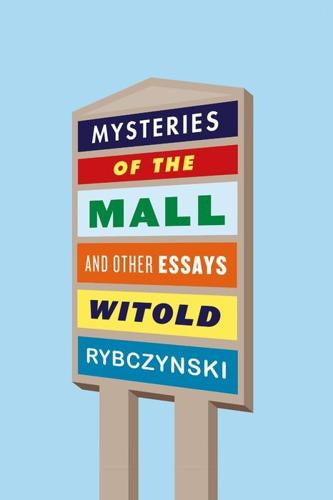
Mysteries of the Mall: And Other Essays
by
Witold Rybczynski
Published 7 Sep 2015
Today’s fun cities will have to learn to balance new demands; their inhabitants will have to adapt to their new roles. In any case, they have no choice—we’re all Venetians now. The recreational role of cities is demonstrated in what one might call tourist urbanism, of which New York City’s High Line is the most prominent example. Like Vienna’s early Ringstrasse and Paris’s more recent Promenade Plantée—old urban infrastructure transformed—the High Line is an example of McLuhan’s Law of Technological Second Lives. Downtown “The almighty downtown of the past is gone—and gone for good,” writes Robert Fogelson in Downtown, his stimulating new history of a long-neglected subject.
…
Wilson Goodhue, Bertram Grosvenor Goodwin, Philip Gookin, Frederick Gothic cathedrals Gothic Revival Gould, Andrew Grand Army Plaza, Brooklyn Grand Californian Hotel Grand Théàtre, Geneva Graves, Michael Great Depression Greek Revival style Greenberg, Allan Greene & Greene Gropius, Walter Gross Clinic, The (Eakins) Grosser Musikvereinssaal, Vienna Grosser Tonhallesaal, Zurich Guerrero, Pedro Guggenheim Foundation Guggenheim Museum, Bilbao Guggenheim Museum, New York Guggenheim Museum, South Street (unbuilt) Guinness Book of Records, The Gustin, Daniel R. Gwathmey, Charles Haber, Larry Haber, Terri Habitat, Montreal Hadid, Zaha Hagia Sophia, Istanbul Hamarikyu Asahi Hall, Tokyo Hammond, Beeby & Babka Hardouin-Mansart, Jules Hardy Holzman Pfeiffer Harold Washington Library Center, Chicago Harrison, George Hastings, Thomas Haydn, Joseph health care decentralization and Heeney, Michael height limits Hendrix, Jimi Hennebique, François Herzog, Jacques Herzog & de Meuron High Line, New York Highpoint I, London high-rise buildings: low cost of as undesirable solution to public housing needs Hilberseimer, Ludwig Hilton Head Island, S.C.
…
Necessity of Ruins, The (Jackson) neighborhoods, consolidation of Nelson, Jim Nervi, Pier Luigi Neutra, Richard New Delhi, Viceroy’s House in New England towns, Tocqueville on Newman, Oscar Newman, Paul New Mexico, houses in New Orleans, La. Newport, R.I. New Urbanism New York, N.Y. Central Park in, see Central Park Commissioners’ Plan of 1811 in Grand Army Plaza in Le Corbusier in Prospect Park in Tocqueville on tourism in New-York Daily Times New York Herald Tribune New York Philharmonic New York Public Library New York State legislature New York Times New York Times Magazine Nixon administration Norman, Jessye North Adams, Mass. North Carolina, University of, at Chapel Hill North Carolina State University Northern Pacific Railroad Notre Dame, University of architecture program at Notre-Dame du Haut, Ronchamp Nouvel, Jean Nute, Kevin Oak Knoll, Mill Neck, N.Y.
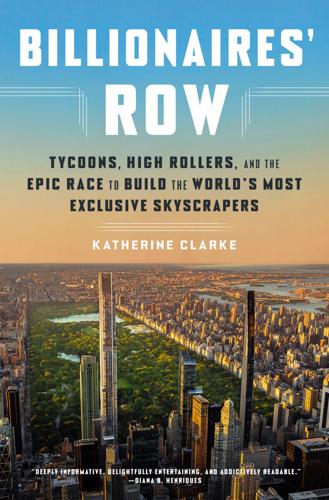
Billionaires' Row: Tycoons, High Rollers, and the Epic Race to Build the World's Most Exclusive Skyscrapers
by
Katherine Clarke
Published 13 Jun 2023
See also 111 West 57th Street Barnett and, 169 basic facts about, 169–70 Bianco’s lawsuit against, 223–25, 275, 278–80, 332, 349, 350 New York Telephone building, 163–64 111 West 57th Street characterized as failure by, 350 Perlmutter and, 177 regrets about building 111 West 57th Street, 333 sales at 111 West 57th Street and, 222 Saudi billionaires and, 183–87 Spruce’s “strict foreclosure” and, 277–78 Steinway Hall and, 172 Stern and, 170–72, 220–21 Stern-union fight, 216, 219 supertall project in Miami, 349 Walker Tower and, 170 Manafort, Paul, 38, 39–41, 43–46 Manhattan Special Midtown District, 145 Mansion Tax, 269, 309 Mansour Bin Zayed al Nahyan, 50 Marble Row, 15–16 Marcos, Ferdinand, 191 Marcos, Imelda, 191 Marcus, Silvian, 109 Marks, Howard, 188 Marshall, Cathy, 122, 132, 133 Mayflower Hotel, 130–31 McCourt, Jamie, 118–19 Mechanic, Jonathan, 11 Meister, Stephen, 278–79 Mendelsohn, Nicole, 336 Mercier, Laura, 166 Mermel, Myers, xiv, 73 Mermelstein, Edward, 89, 90, 267, 297 Meta, 336 Metropolitan Life Insurance Company Tower, 9, 10, 24–25, 48 Meyer, Jane, 24 “mezzanine financing,” 72 Michael Feinstein, 334 Michaels, Howard, 279 Middle East, supertalls in, 48–49 Miller, Jonathan anti-billionaire sentiment, 304 “aspirational pricing,” 99 building of ultra-luxury condominiums outside of Billionaires’ Row, 262–63 developers’ mentality, 348 dilapidated condition of New York Coliseum, 29 financing of One57 (2009), 52 Macklowe divorce appraisal by, 286 market slowdown, 262 new market category of Billionaires’ Row, 189, 190 penthouse owned by Adnan Khashoggi and, 17–18 prices and “greater fools’ theory,” 267 risk-awareness of post 2008 lenders, 43 Mills, Donna, 136 Mindel, Lee, 209 Mink Development, 333 Moelis, Ken, 266 Mogilevich, Semion Yudkovich, 45 Molyneux, Juan Pablo, 25 Mosdot Shuva Israel, 34 Moses, Robert, 28 Motown Cafe, 26, 27 Mott, Charles Stewart, 21 Mott, Stewart R., 21–23 Mubadala (Abu Dhabi sovereign wealth fund), 258 Mueller, Robert, 46 Muller, Evelyn, 55, 56 Municipal Arts Society (MAS), 146, 148 Muschamp, Herbert, 26–27 N Naftali, Miki, 316–17 Nahmad, Hillel “Helly,” 119 Newman, Margaret, 149 New Valley, 192 New York (magazine), 291 New York Coliseum, 28–29, 31 New Yorker, 24 “New York is dead” narrative, 316 The New York Observer, 91 New York Post, 125, 131, 253, 283, 284, 285 New York Telephone Company building, 162, 163–65 The New York Times, 10, 16, 17, 22, 23, 25–26, 27–28, 31, 38, 44, 58, 97, 123, 139, 144, 147–48, 198, 205, 237, 250, 252, 283, 303, 309, 316, 320 New York Times tower, 57 New York World Building, 48 NFT art pieces, 335–36, 343 Niami, Nile, 264 Nippon Club, 53 NoMad, high-rise condos in, 262 Nordstrom, 14, 75, 155, 270, 279 Nouvel, Jean, 147, 190, 266 NYC Crane Hoist & Rigging, 329 O Observer, 39 Ocasio-Cortez, Alexandria, 305–6 Och, Dan, 208, 340 Olayan America, 254 Olshan Realty, 338 Olympic Tower, 18–19, 20–21 Onassis, Aristotle, 18, 20 Onassis, Jacqueline Kennedy, 146 1MDB (Malaysia’s sovereign wealth fund), 255 1 Park Lane.
…
Identifiers: LCCN 2022056930 (print) | LCCN 2022056931 (ebook) | ISBN 9780593240069 (hardcover; alk. paper) | ISBN 9780593240076 (ebook) Subjects: LCSH: Real estate development—New York State—New York. | Manhattan (New York, N.Y.) | Billionaires—New York State—New York. Classification: LCC HD268.N5 C63 2023 (print) | LCC HD268.N5 (ebook) | DDC 333.33/8097471—dc23/eng/20230221 LC record available at lccn.loc.gov/2022056930 LC ebook record available at lccn.loc.gov/2022056931 Ebook ISBN 9780593240076 crownpublishing.com Map by Jeffrey L. Ward Cover design: Evan Gaffney Cover photographs: Williams New York (Central Park), Roc Canals/Getty Images (clouds) ep_prh_6.1_143790370_c0_r0 Contents Cover Title Page Copyright Epigraph Author’s Note The Tycoons The Towers The Row Prologue: The Pinnacle Part I: Dreaming of Sky Chapter 1: Saving Harry Macklowe Chapter 2: The Original Palace Corners Chapter 3: The Rabbi, the Jeweler, and the Developer Chapter 4: The Chess Master Chapter 5: California Dreaming Chapter 6: Hitting the Jackpot Chapter 7: Inventing an Icon Chapter 8: Make Way for the Billionaires Chapter 9: Throwing Shade Part II: Turbulence Chapter 10: “Too Much Money” Chapter 11: New Kids on the Block Chapter 12: The “Prince” Chapter 13: Supply and Demand Chapter 14: The Best Building in New York Chapter 15: Starting Wars Chapter 16: Disdain in Paradise Chapter 17: Selling Billionaires’ Row Part III: Falling Back to Earth Chapter 18: Shadowy Figures Chapter 19: The Music Stops Chapter 20: “Gone to Zero” Chapter 21: Knives Out Chapter 22: Casualties of War Chapter 23: Not a Good Look Chapter 24: New York on Pause Chapter 25: Tower of Hell Chapter 26: See You in Court Chapter 27: Seeds of Recovery Chapter 28: Resentment Epilogue: A Lasting Legacy Photo Insert Dedication Acknowledgments Notes Index About the Author _143790370_ Come, let us build ourselves a city, with a tower that reaches to the heavens, so that we may make a name for ourselves.
…
By the time One57 came around, Barnett had earned a reputation as a developer with big ambitions, one who was unafraid to go up against the long-standing giants of the New York real estate scene. * * * — DESPITE THEIR PROFESSIONAL accomplishments and long ties to the city, neither Macklowe nor Barnett was born a New York real estate insider. By New York standards, they were both non-natives. Until relatively recently, the New York real estate industry was predominantly controlled by just a handful of very powerful families, whose development activity spanned generations and had helped shape the evolution of the city: the Rudins, Dursts, Roses, Fishers, and Tishmans.
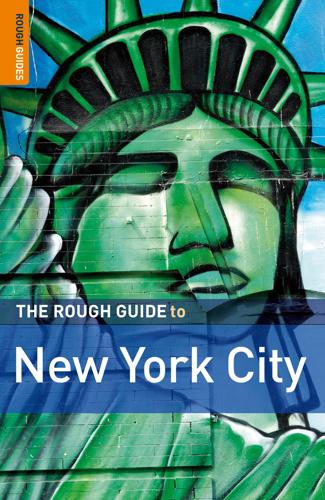
The Rough Guide to New York City
by
Martin Dunford
Published 2 Jan 2009
Meatpacking District Creating a buffer between the West Village and Chelsea proper, the Meatpacking District between Gansevoort Street and West 15th Street, west of Ninth Avenue, has seen the majority of its working slaughterhouses converted to French bistros, after-hours clubs, wine bars, and fancy galleries.Though a few wholesale meat companies remain, the area is now very much designer territory, with Stella McCartney and Alexander McQueen among the fashion boutiques The High Line 112 One of New York’s most ambitious urban regeneration projects, the High Line (Wwww.thehighline.org) should be open by 2009 as a unique city park, slicing through the high-rises on a former elevated rail line. Constructed between 1929 and 1934, the line was effectively abandoned in 1980, and has been a rusting eyesore ever since. In 1999, a group of local business-owners joined together to press for the High Line’s preservation, and with the city finally on board, construction began in 2006. The first section will run from Gansevoort Street to West 20th Street, with phase two eventually extending 1.5 miles up to West 33rd Street in midtown.
…
106 Canal Street...74,78, 83, 92 Cantor Roof Garden..... 166 Carnegie, Andrew........ 151, 179, 232 Carnegie Hall........151, 364 Carroll Gardens ....218, 227 cast-iron architecture ..... 76 & New York Architecture color section Castle Clinton................. 58 Cathedral Church of St John the Divine ...... 15, 187, 199, 364 CBGB ............................. 97 CBS Building ................ 150 cell phones see mobile phones Central Park ...12, 152–160, 365, 412, 426, 450, 452 Central Park ................. 153 Central Park Carousel... 156 Central Park Reservoir ...........................154, 159 Central Park Visitor Centers ................................... 152 Central Park West ....... 187, 192–194 Central Park Zoo .......... 155 Central Synagogue....... 136 Chambers Street ............ 73 Charlie Parker’s House... 99 Chatham Square ............ 82 Chelsea................ 111–116 Chelsea ........................ 111 bars .................................. 346 cafés................................. 297 galleries.... 111, 112, 114, 380 restaurants ....................... 306 Chelsea Antiques Market ............... 116 & New York Architecture color section Chelsea Flower Market ................................... 116 Chelsea Historic District ............... 113 & New York Architecture color section Chelsea Hotel .............. 115, 119, 279 Chelsea Market ............ 113 Chelsea Piers ......112, 114, 412 Children’s Museum of the Arts ............................ 425 Children’s Museum of Manhattan .........197, 424 Chinatown ............... 78–84 & Ethnic New York color section Chinatown ...................... 79 bars .................................. 342 cafés and teahouses........ 291 Chinese New Year........... 416 history ................................ 80 restaurants ................. 80, 312 shopping ............................ 83 Christopher Street ........ 109 Chrysler Building ......... 124, 135, 437 & New York Architecture color section Chumley’s..................... 109 Church of the Ascension ................................... 107 Church of the Holy Trinity ................................... 184 Church of the Most Precious Blood ............ 85 Church of St Paul the Apostle ...................... 190 Church of the Transfiguration (Chinatown)................... 82 Church of the Transfiguration (Flatiron District).......... 122 Circle Line ferry .............. 34 circuses ........................ 428 Citicorp Center .....136, 438 & New York Architecture color section Citi Field……………….245, 253, 405 City College .................. 213 City Hall ....................64, 65 City Hall Park .......... 64–70 City Hall Park ................. 64 City Island..................... 262 city transportation ............................... 26–30 classical music and opera ................................... 363 92nd Street Y Kaufman Concert Hall.................. 363 The Alice Tully Hall........... 363 Amato Opera Theater ...... 363 Avery Fisher Hall .............. 363 Bargemusic ...................... 364 Brooklyn Academy of Music ...................................... 364 Carnegie Hall ................... 364 Cathedral of St John the Divine............................ 364 Juilliard School................. 363 Lehman Center for the Performing Arts ............ 364 Merkin Concert Hall ......... 364 Metropolitan Opera House ...................................... 363 The New York State Theater ...................................... 363 Symphony Space............. 364 Town Hall ......................... 364 climate change ............... 22 Clinton Street ................. 92 Cloisters Museum ..... 202, 215–217 CNN.............................. 189 Cobble Hill............218, 227 Colonnade Row.............. 95 Columbia University .... 187, 200 Columbus Circle........... 189 Columbus Park............... 81 comedy clubs............... 367 commercial galleries ......................... ..379–383 community gardens...... 100 Condé Nast Building see New York Architecture color section Coney Island ......218, 237, 238–241, 447, 448, 450, 451 Coney Island Museum ................................... 240 Conference House ....... 270 Confucius Plaza ............. 82 Conservatory Garden (Central Park)............. 160 Convent Avenue ........... 213 Cooper Square .......97, 101 Cooper Union ................. 97 Cooper–Hewitt National Design Museum ........ 178 Corinthian Baptist Church ................................... 209 Corona.......................... 252 costs............................... 35 crime............................... 35 Crown Heights............. 236, 237 & Ethnic New York color section Curry Hill………………..123 D East Broadway ............... 92 East Coast Memorial...... 58 East River ..................... 218 East Village........... 93–100, 450 & Ethnic New York color section East Village .................... 94 bars ............................ 99, 343 cafés................................. 294 restaurants ......... 99, 315–317 Easter Parade............... 417 Eastern States Buddhist Temple ......................... 83 eating see restaurants Ed Sullivan Theater ...... 150 Eighth Avenue .............. 115 El Barrio................182, 209 & Ethnic New York color section Federal Hall ............52, 462 Federal Reserve Bank .... 54 ferries..........29, 43, 58, 267 Festa di San Gennaro ... 85, 421 & Ethnic New York color section festivals ................ 416–422 & Ethnic New York color section Fifth Avenue ............... 107, 124–131, 172–179 film ....................... 368–370 festivals ...... 73, 369, 416–422 first-run............................. 368 industry ............................ 249 revivals ............................. 369 Financial District..... 50–63 & New York Architecture color section Financial District ............ 51 bars .................................. 341 cafés................................. 291 restaurants ....................... 307 Fire Museum...........74, 425 First Avenue.................. 137 First Presbyterian Church ................................... 107 First Unitarian Church (Brooklyn)................... 224 Fisher Landau Art Center ................................... 248 fishing ........................... 412 Five Points................68, 80 Flatbush Avenue........... 224 Flatiron Building .......... 122, 436 & New York Architecture color section booking online ................... 20 from Australia and New Zealand ................. 20 from North America ........... 19 from the UK and Ireland .... 19 Flushing ................245, 254 & Ethnic New York color section Flushing Meadows– Corona Park ............ 245, 252–254 Foley Square .................. 68 Forbes Galleries ........... 107 Ford Foundation Building ................................... 137 Fordham University ...... 259 Fort Greene .........218, 220, 225 Fort Greene Park.......... 226 Fort Wadsworth............ 269 Fraunces Tavern Museum ............................60, 434 Free Synagogue of Flushing ..................... 255 Freedomland ................ 265 Frick, Henry Clay.......... 175 Frick Collection .....14, 172, 175 Friends Meeting House ................................... 254 Fuller Building............... 132 Fulton Ferry District..... 220 Fulton, Robert .........52, 61, 220 Fulton Fish Market ......... 62 Fulton Street (Brooklyn) .................................. 236 | E F Flatiron District ...117, 121 Flatiron District ............ 118 flights I ND E X Dahesh Museum of Art ................................... 132 Daily News Building ..... 136 Dakota Building ........... 157, 189, 192, 193 dance............................ 365 Dante Park.................... 192 Deitch Projects ............... 76 Delancey Street .............. 91 Delmonico’s............54, 308 Diamond Row......128, 150, 391 Dinkins, David .............. 438 disabled travelers ........... 40 drinking................ 340–351 driving.......................24, 29 Duane Park..................... 73 DUMBO ........218, 220, 222 Dyckman Farmhouse Museum..................... 217 Dylan, Bob............104, 108 electricity ........................ 36 Ellington, Duke ............ 116, 151, 160, 198, 204, 263 Ellis Island .................... 43, 45–48, 58, 436, 441 & Ethnic New York color section Ellis Island Museum of Immigration............ 46–48 email ............................... 37 emergencies ................... 36 Empire State Building ............. 11, 124–126, 437 & New York Architecture color section entry requirements ......... 36 Essex Street .............91, 92 Essex Street Market ....... 91 G Gainsborough Studios ................................... 151 galleries ............... 379–383 57th Street ....................... 382 alternative......................... 383 Chelsea ............................ 380 DUMBO and Brooklyn Heights ......................... 382 tours ................................. 379 Tribeca and Soho............. 380 Upper East Side............... 381 Williamsburg..................... 382 Ganesh Temple............. 255 Garment District ........................... 143–147 Garvey, Marcus ............ 207 471 gay and lesbian New York ...................109, 111,115, 372–378, 442 accommodation ............... 374 arts and culture................ 374 bars ...........................375–377 cafés................................. 375 clubs ................................ 377 media ............... 373, 374, 377 neighborhoods................. 372 Pride Parade ............ 373, 419 religion.............................. 378 resources ......................... 373 restaurants ....................... 375 safety................................ 372 sex.................................... 377 shopping .......................... 378 I ND E X | General Electric Building ............... 134 & New York Architecture color section General Post Office ...... 146 & New York Architecture color section General Theological Seminary.................... 113 George Washington Bridge ................................... 215 Ginsberg, Allen .............. 93, 98, 106, 201 Giuliani, Rudy ................ 55, 118, 185, 438 golf................................ 412 gospel music ................ 211 Governor Lovelace’s Tavern ..................................... 61 Governors Island ......43, 48 Gowanus Canal ............ 229 Gracie Mansion ............ 185 Gramercy Park....117, 120 Gramercy Park............. 118 bars .................................. 347 cafés..........................297–298 restaurants ................321–324 472 Grand Army Plaza (Brooklyn)................... 232 Grand Army Plaza (Manhattan)........130, 174 Grand Central Terminal ...................12,19, 23, 24, 124, 133, 256, 436 & New York Architecture color section Grand Concourse ...... 257, 258 Grand Street................... 83 Grant’s Tomb ................ 201 Great Kills Park............. 269 Great Lawn (Central Park) ................................... 158 Greek Independence Day Parade ....................... 417 & Ethnic New York color section Greeley Square............. 145 Greene Street ................. 76 Greenpoint...........219, 241, 244 & Ethnic New York color section Greenwich Village.......... 35, 93, 101, 102, 104, 110, 112, 441, 445 & New York Architecture color section Green–Wood Cemetery ................................... 235 Grey Art Gallery............ 105 Ground Zero ........54, 439 & New York Architecture color section Guggenheim Museum ................... 172, 176–178 gyms............................. 413 H Hale, Nathan................... 64 Hall of Fame for Great Americans.................. 262 Halloween Parade ...12, 421 Hamilton, Alexander ...... 51, 53, 213 Hamilton Grange .......... 213 Hamilton Heights....... 202, 211–214 Hamilton Heights ......... 212 Harbor Defense Museum ................................... 238 Harbor Islands ........ 43–49 Harbor Islands ............... 44 Harlem ................ 202–217, 442, 444, 452 & Ethnic New York color section & New York Architecture color section Harlem .......................... 203 bars .................................. 349 cafés................................. 301 restaurants ....................... 333 Harlem Meer................. 160 Harlem Renaissance ... 204, 436 Harvard Club ................ 127 Haughwout Building....... 75 & New York Architecture color section Hayden Planetarium ..... 196 health......................36, 413 Hearst World Headquarters ................................... 150 helicopter tours .............. 33 Hell’s Kitchen........143, 149 Helmsley Building......... 134 Henderson Place.......... 185 Herald Square .............. 145 High Line ..............112, 113 Hispanic Society of America ..................... 214 Historic Richmond Town ................................... 270 horse racing.................. 408 horse riding .................. 413 hospitals ......................... 36 hostels .......................... 286 Hotel des Artistes......... 192 hotels ......... 276–286 & see accommodation airport............................... 286 booking services.............. 277 prices ....................... 273, 276 taxes and fees.................. 276 Houston Street .......90, 101 Hudson River................. 59, 61, 101, 187, 198 Hudson River Park ........ 73, 412 Hunters Point ............... 247 I IAC Building.................. 115 & New York Architecture color section IBM Building................. 132 ice cream...................... 302 ice hockey .................... 407 ice-skating.................... 413 Indian Row ..................... 97 information.............. 32–35 insurance ........................ 36 International Center of Photography .............. 149 Internet ........................... 37 Intrepid Sea, Air & Space Museum......143,149, 425 Inwood... 202, 217 & Ethnic New York color section Irish Hunger Memorial…..59 Irving Place................... 119 J Jackson Heights.......... 245, 251 & Ethnic New York color section Jacob Riis Park ............ 255 Jacques Marchais Museum of Tibetan Art............. 269 Jamaica Bay.........245, 255 jazz venues ................. 355 Birdland............................ 355 Blue Note ......................... 355 Café Carlyle ..................... 356 Iridium Jazz Club ............. 356 Jazz at Lincoln Center ..... 356 Jazz Standard .................. 356 Joe’s Pub ......................... 356 Lenox Lounge .................. 356 Louis 649 ......................... 356 Smoke.............................. 356 Village Vanguard .............. 356 Zinc Bar............................ 356 Jefferson Market Courthouse................ 108 Jewish Children’s Museum ................................... 237 Jewish Museum ........... 179 JFK Airport ...............19, 24 jogging.......................... 414 Johnson, Philip....130, 132, 142, 135, 186, 192 Joyce Kilmer Park ........ 259 Juilliard School of Music ................................... 363 July 4 fireworks ............ 419 L LaGuardia, Fiorello ....... 437 LaGuardia Airport .....19, 24 Lafayette Street ........74, 95 Landmarks Preservation Law ............................ 146 laundry............................ 37 Lazarus, Emma............... 44 Lee, Spike.....225, 446, 447 Lefferts Historic House ................................... 232 Lenape Indians ............. 219 Lennon, John............... 157, 193, 194 Lenox Avenue.......202, 207 Letterman, David ....31, 150 Little Senegal................ 209 Little Singer Building ...... 75 London Terrace Gardens ................................... 114 Long Island City......... 245, 247–250 Long Island City .......... 247 lost property ................... 38 Louis Armstrong House .................................. 252 Lower East Side..... 88–92, 435, 443–445, 449, 452 & Ethnic New York color section Lower East Side ............ 89 bars ............................ 90, 342 cafés................................. 293 restaurants ................. 90, 314 Lower East Side Tenement Museum ...... 90 Ludlow Street ................. 90 Lunar (Chinese) New Year .... 416 & Ethnic New York color section M MacDougal Street ........ 106 Macy’s ..........143, 145, 390 Thanksgiving Day Parade ...........................145, 422 Madison Avenue ........ 124, 131, 172, 179–181 Madison Square Garden ..........122, 123, 143, 145, 353, 410, 437 | Katz’s Deli.........16, 90, 314 Kaufman Astoria Studios ................................... 249 Kenilworth Apartments ................................... 194 kids’ New York.... 423–430 Kingsland Homestead ................................... 254 Koch, Ed....................... 438 Koons, Jeff .......77, 93, 142 bars .................................. 342 cafés................................. 392 restaurants ................. 85, 313 Madison Square Park... 122 Mahayana Buddhist Temple ..................................... 83 mail ................................ 38 Maine Monument ......... 190 Majestic ........................ 194 Malcolm Shabazz Harlem Market ....................... 209 Malcolm X.....205, 209, 215 Manhattan Bridge...83, 220 Manhattan Project ........ 437 maps .............................. 33 marathon .............414, 422 Marcus Garvey Park..... 207 Masjid Malcolm Shabazz mosque ..................... 209 McCarren Park ............. 244 McKim, Mead, and White ............67, 128, 145, 146, 161, 233 Meatpacking District .... 112 media ...................... 30–32 Melville, Herman.....60, 263 Merchant’s House Museum ..................................... 95 Met Life Building .......... 134 MetroCard ...................... 26 Metropolitan Museum of Art....... 14, 158, 161–171, 436 Metropolitan Museum of Art .............................. 162 Metropolitan Opera House .................................. 191 Midtown East ...... 124–138 Midtown East ............... 125 I ND E X K Lever House ................. 135 & New York Architecture color section Lexington Avenue...... 135, 182–185 Liberty Island.................. 43 Libeskind, Daniel ............ 55 Lincoln Center .....14, 187, 190–192, 361, 363–366, 370 literary events and readings ................................... 370 Little India (Queens)...... 252 & Ethnic New York color section Little Italy...................... 78, 84, 448, 451 & Ethnic New York color section Little Italy ....................... 79 bars ................................. 347 cafés................................. 298 restaurants ...............324–326 Midtown West ..... 143–151 Midtown West.............. 144 bars .................................. 348 cafés................................. 298 restaurants ................326–329 mobile phones................ 39 money............................. 38 Moore, Clement Clarke ...................112, 114, 214 Morgan, JP ............ 53,120, 131, 167, 174, 435 Morgan Library ............ 131 Morningside Heights ................... 187, 199–201 Morningside Heights ................................... 188 Morris–Jumel Mansion ................................... 214 Moses, Robert.... 104, 154, 155, 190, 198, 263, 264, 437, 442 473 I ND E X | 474 Mott Street .................... 82 Mount Morris Park Historic District ...................... 207 Mount Vernon Hotel Museum and Garden ................................... 183 Mulberry Street............... 85 Municipal Building....64, 66 Murray Hill .................... 131 Museo del Barrio.......... 210 Museum at Eldridge Street ..................................... 92 Museum Mile................ 172 Museum of American Finance ........................ 53 Museum of American Folk Art .............................. 130 Museum of American Illustration .................. 183 Museum of Arts & Design .................................. 189 Museum of the American Indian........................... 57 Museum of Chinese in the Americas...................... 84 Museum of the City of New York....................179, 425 Museum of Comic and Cartoon Art.................. 75 Museum of Jewish Heritage ..................................... 59 Museum of Modern Art ............. 15, 139–142, 370 Museum of Modern Art ................................... 140 music stores ................. 400 music venues, live ........................... 353–356 Arlene’s Grocery............... 353 Barbès.............................. 354 Beacon Theatre................ 353 The Bitter End .................. 354 Bowery Ballroom.............. 354 The Fillmore NY at Irving Plaza ............................. 354 Hammerstein Ballroom .... 353 jazz ................................... 355 Knitting Factory................ 354 The Living Room.............. 354 Madison Square Garden... 353 Maxwell’s ......................... 354 Mercury Lounge............... 354 Music Hall of Williamsburg ...................................... 354 NuBlu ............................... 354 Pianos .............................. 355 Radio City Music Hall ...... 353 rock, pop, and eclectic ...............................352–355 Rockwood Music Hall...... 355 Roseland Ballroom........... 353 SOB’s (Sounds of Brazil)... 355 Southpaw......................... 355 Village Underground ........ 355 N Nathan’s (Coney Island) ...........................239, 304 National Academy of Design........................ 178 National Puerto Rican Day Parade ........ 419 & Ethnic New York color section NBC Studios................. 129 Neue Galerie................. 176 New Jersey Devils....... 407, 408 New Jersey Nets .......... 406 New Museum of Contemporary Art....... .87 New York Airport Service .................................... 24 New York Aquarium see Aquarium New York Botanical Garden ...................256, 281, 427 New York Buddhist Church ................................... 198 New York Chinese Scholar’s Garden....... 269 New York County Courthouse.................. 68 New York Earth Room.... 77 New York Giants .......... 405 New York Hall of Science ...........................253, 425 New York Harbor.....43, 48, 58 New–York Historical Society....................... 194 New York Islanders....... 407 New York Liberty .......... 431 New York Jets ......405, 406 New York Knicks ...145, 406 New York Mets ....253, 404, 405 New York Public Library ........ 124,126 & New York Architecture color section New York Rangers....... 145, 407 New York Society for Ethical Culture ........... 190 New York State Theater ................................... 191 New York Stock Exchange .................................... 52 New York Times.......30, 65, 66, 127, 148, 359 New York Transit Museum ...........................225, 425 New York Yacht Club ... 127 New York Yankees....... 258, 403, 404, 405 Newark Airport ...19, 23, 24 newspapers .............. 30–32 nightclubs............ 356–358 nightlife................ 352–358 Ninth Avenue ........113, 149 Nolita........................78, 86 Nolita .............................. 79 Noguchi, Isamu ........... 250 Noguchi Museum .........250 Nuyorican Poets Café ...371 NYU ........................93, 105 O O’Neill, Eugene.....106, 108 Old Police Headquarters ..................................... 86 Old Stone House.......... 235 Olmsted, Frederick Law ..........153, 156, 198, 215, 232 opening hours ................ 39 Orchard Beach ............ 264 Orchard Street................ 90 P Paine, Thomas.............. 109 Paley Center for Media ................................... 130 Panorama of the City of New York ................... 254 parades and festivals .............416–422 & Ethnic New York color section Affordable Art Fair............ 419 African-American Day Parade ...................................... 421 African Diaspora Film Festival ..................................... 422 American Crafts Festival ... 419 Asian American International Film Festival.................. 419 Bastille Day ...................... 419 Broadway on Broadway... 420 Bryant Park Summer Film Festival.......................... 418 Celebrate Brooklyn .......... 418 Columbus Day Parade..... 421 DUMBO Art Under the Bridge Festival.......................... 421 Dyke March...................... 419 Washington Square Music Festival.......................... 419 West Indian-American Day Parade and Carnival..... 420 Westminster Kennel Club Dog Show............................. 417 Q Queens ................ 245–255 & Ethnic New York color section Queens ......................... 246 Queens Museum of Art ................................... 254 Queens Zoo.................. 253 Queensboro Bridge ..... 183, 185 R radio ............................... 32 Radio City Music Hall ...................128, 150, 353 Ramble, the (Central Park) ................................... 157 Red Hook ..... 218, 229–231 restaurants .... 15, 306–339 restaurants (by area) Bronx................................ 339 Brooklyn ....................334–337 Chelsea ............................ 320 Chinatown........................ 312 Little Italy and Nolita ........ 313 East Village................315–317 Financial District and City Hall ...................................... 307 Harlem and above............ 333 Lower East Side............... 314 Midtown East ............324–326 Midtown West ...........326–329 Queens......................337–339 Soho..........................310–312 Staten Island .................... 339 Tribeca.............................. 309 Union Square, Gramercy Park, and the Flatiron District ...............................321–324 Upper East Side........329–331 Upper West Side.......331–333 West Village...............317–320 Restaurant Row............ 149 Riis, Jacob.......68, 89, 255, 443 Riverdale....................... 263 Riverside Church .......... 201 Riverside Drive ..... 187,197, 198, 199, 201 Riverside Park ......197, 198 Robert F.
…
106 Canal Street...74,78, 83, 92 Cantor Roof Garden..... 166 Carnegie, Andrew........ 151, 179, 232 Carnegie Hall........151, 364 Carroll Gardens ....218, 227 cast-iron architecture ..... 76 & New York Architecture color section Castle Clinton................. 58 Cathedral Church of St John the Divine ...... 15, 187, 199, 364 CBGB ............................. 97 CBS Building ................ 150 cell phones see mobile phones Central Park ...12, 152–160, 365, 412, 426, 450, 452 Central Park ................. 153 Central Park Carousel... 156 Central Park Reservoir ...........................154, 159 Central Park Visitor Centers ................................... 152 Central Park West ....... 187, 192–194 Central Park Zoo .......... 155 Central Synagogue....... 136 Chambers Street ............ 73 Charlie Parker’s House... 99 Chatham Square ............ 82 Chelsea................ 111–116 Chelsea ........................ 111 bars .................................. 346 cafés................................. 297 galleries.... 111, 112, 114, 380 restaurants ....................... 306 Chelsea Antiques Market ............... 116 & New York Architecture color section Chelsea Flower Market ................................... 116 Chelsea Historic District ............... 113 & New York Architecture color section Chelsea Hotel .............. 115, 119, 279 Chelsea Market ............ 113 Chelsea Piers ......112, 114, 412 Children’s Museum of the Arts ............................ 425 Children’s Museum of Manhattan .........197, 424 Chinatown ............... 78–84 & Ethnic New York color section Chinatown ...................... 79 bars .................................. 342 cafés and teahouses........ 291 Chinese New Year........... 416 history ................................ 80 restaurants ................. 80, 312 shopping ............................ 83 Christopher Street ........ 109 Chrysler Building ......... 124, 135, 437 & New York Architecture color section Chumley’s..................... 109 Church of the Ascension ................................... 107 Church of the Holy Trinity ................................... 184 Church of the Most Precious Blood ............ 85 Church of St Paul the Apostle ...................... 190 Church of the Transfiguration (Chinatown)................... 82 Church of the Transfiguration (Flatiron District).......... 122 Circle Line ferry .............. 34 circuses ........................ 428 Citicorp Center .....136, 438 & New York Architecture color section Citi Field……………….245, 253, 405 City College .................. 213 City Hall ....................64, 65 City Hall Park .......... 64–70 City Hall Park ................. 64 City Island..................... 262 city transportation ............................... 26–30 classical music and opera ................................... 363 92nd Street Y Kaufman Concert Hall.................. 363 The Alice Tully Hall........... 363 Amato Opera Theater ...... 363 Avery Fisher Hall .............. 363 Bargemusic ...................... 364 Brooklyn Academy of Music ...................................... 364 Carnegie Hall ................... 364 Cathedral of St John the Divine............................ 364 Juilliard School................. 363 Lehman Center for the Performing Arts ............ 364 Merkin Concert Hall ......... 364 Metropolitan Opera House ...................................... 363 The New York State Theater ...................................... 363 Symphony Space............. 364 Town Hall ......................... 364 climate change ............... 22 Clinton Street ................. 92 Cloisters Museum ..... 202, 215–217 CNN.............................. 189 Cobble Hill............218, 227 Colonnade Row.............. 95 Columbia University .... 187, 200 Columbus Circle........... 189 Columbus Park............... 81 comedy clubs............... 367 commercial galleries ......................... ..379–383 community gardens...... 100 Condé Nast Building see New York Architecture color section Coney Island ......218, 237, 238–241, 447, 448, 450, 451 Coney Island Museum ................................... 240 Conference House ....... 270 Confucius Plaza ............. 82 Conservatory Garden (Central Park)............. 160 Convent Avenue ........... 213 Cooper Square .......97, 101 Cooper Union ................. 97 Cooper–Hewitt National Design Museum ........ 178 Corinthian Baptist Church ................................... 209 Corona.......................... 252 costs............................... 35 crime............................... 35 Crown Heights............. 236, 237 & Ethnic New York color section Curry Hill………………..123 D East Broadway ............... 92 East Coast Memorial...... 58 East River ..................... 218 East Village........... 93–100, 450 & Ethnic New York color section East Village .................... 94 bars ............................ 99, 343 cafés................................. 294 restaurants ......... 99, 315–317 Easter Parade............... 417 Eastern States Buddhist Temple ......................... 83 eating see restaurants Ed Sullivan Theater ...... 150 Eighth Avenue .............. 115 El Barrio................182, 209 & Ethnic New York color section Federal Hall ............52, 462 Federal Reserve Bank .... 54 ferries..........29, 43, 58, 267 Festa di San Gennaro ... 85, 421 & Ethnic New York color section festivals ................ 416–422 & Ethnic New York color section Fifth Avenue ............... 107, 124–131, 172–179 film ....................... 368–370 festivals ...... 73, 369, 416–422 first-run............................. 368 industry ............................ 249 revivals ............................. 369 Financial District..... 50–63 & New York Architecture color section Financial District ............ 51 bars .................................. 341 cafés................................. 291 restaurants ....................... 307 Fire Museum...........74, 425 First Avenue.................. 137 First Presbyterian Church ................................... 107 First Unitarian Church (Brooklyn)................... 224 Fisher Landau Art Center ................................... 248 fishing ........................... 412 Five Points................68, 80 Flatbush Avenue........... 224 Flatiron Building .......... 122, 436 & New York Architecture color section booking online ................... 20 from Australia and New Zealand ................. 20 from North America ........... 19 from the UK and Ireland .... 19 Flushing ................245, 254 & Ethnic New York color section Flushing Meadows– Corona Park ............ 245, 252–254 Foley Square .................. 68 Forbes Galleries ........... 107 Ford Foundation Building ................................... 137 Fordham University ...... 259 Fort Greene .........218, 220, 225 Fort Greene Park.......... 226 Fort Wadsworth............ 269 Fraunces Tavern Museum ............................60, 434 Free Synagogue of Flushing ..................... 255 Freedomland ................ 265 Frick, Henry Clay.......... 175 Frick Collection .....14, 172, 175 Friends Meeting House ................................... 254 Fuller Building............... 132 Fulton Ferry District..... 220 Fulton, Robert .........52, 61, 220 Fulton Fish Market ......... 62 Fulton Street (Brooklyn) .................................. 236 | E F Flatiron District ...117, 121 Flatiron District ............ 118 flights I ND E X Dahesh Museum of Art ................................... 132 Daily News Building ..... 136 Dakota Building ........... 157, 189, 192, 193 dance............................ 365 Dante Park.................... 192 Deitch Projects ............... 76 Delancey Street .............. 91 Delmonico’s............54, 308 Diamond Row......128, 150, 391 Dinkins, David .............. 438 disabled travelers ........... 40 drinking................ 340–351 driving.......................24, 29 Duane Park..................... 73 DUMBO ........218, 220, 222 Dyckman Farmhouse Museum..................... 217 Dylan, Bob............104, 108 electricity ........................ 36 Ellington, Duke ............ 116, 151, 160, 198, 204, 263 Ellis Island .................... 43, 45–48, 58, 436, 441 & Ethnic New York color section Ellis Island Museum of Immigration............ 46–48 email ............................... 37 emergencies ................... 36 Empire State Building ............. 11, 124–126, 437 & New York Architecture color section entry requirements ......... 36 Essex Street .............91, 92 Essex Street Market ....... 91 G Gainsborough Studios ................................... 151 galleries ............... 379–383 57th Street ....................... 382 alternative......................... 383 Chelsea ............................ 380 DUMBO and Brooklyn Heights ......................... 382 tours ................................. 379 Tribeca and Soho............. 380 Upper East Side............... 381 Williamsburg..................... 382 Ganesh Temple............. 255 Garment District ........................... 143–147 Garvey, Marcus ............ 207 471 gay and lesbian New York ...................109, 111,115, 372–378, 442 accommodation ............... 374 arts and culture................ 374 bars ...........................375–377 cafés................................. 375 clubs ................................ 377 media ............... 373, 374, 377 neighborhoods................. 372 Pride Parade ............ 373, 419 religion.............................. 378 resources ......................... 373 restaurants ....................... 375 safety................................ 372 sex.................................... 377 shopping .......................... 378 I ND E X | General Electric Building ............... 134 & New York Architecture color section General Post Office ...... 146 & New York Architecture color section General Theological Seminary.................... 113 George Washington Bridge ................................... 215 Ginsberg, Allen .............. 93, 98, 106, 201 Giuliani, Rudy ................ 55, 118, 185, 438 golf................................ 412 gospel music ................ 211 Governor Lovelace’s Tavern ..................................... 61 Governors Island ......43, 48 Gowanus Canal ............ 229 Gracie Mansion ............ 185 Gramercy Park....117, 120 Gramercy Park............. 118 bars .................................. 347 cafés..........................297–298 restaurants ................321–324 472 Grand Army Plaza (Brooklyn)................... 232 Grand Army Plaza (Manhattan)........130, 174 Grand Central Terminal ...................12,19, 23, 24, 124, 133, 256, 436 & New York Architecture color section Grand Concourse ...... 257, 258 Grand Street................... 83 Grant’s Tomb ................ 201 Great Kills Park............. 269 Great Lawn (Central Park) ................................... 158 Greek Independence Day Parade ....................... 417 & Ethnic New York color section Greeley Square............. 145 Greene Street ................. 76 Greenpoint...........219, 241, 244 & Ethnic New York color section Greenwich Village.......... 35, 93, 101, 102, 104, 110, 112, 441, 445 & New York Architecture color section Green–Wood Cemetery ................................... 235 Grey Art Gallery............ 105 Ground Zero ........54, 439 & New York Architecture color section Guggenheim Museum ................... 172, 176–178 gyms............................. 413 H Hale, Nathan................... 64 Hall of Fame for Great Americans.................. 262 Halloween Parade ...12, 421 Hamilton, Alexander ...... 51, 53, 213 Hamilton Grange .......... 213 Hamilton Heights....... 202, 211–214 Hamilton Heights ......... 212 Harbor Defense Museum ................................... 238 Harbor Islands ........ 43–49 Harbor Islands ............... 44 Harlem ................ 202–217, 442, 444, 452 & Ethnic New York color section & New York Architecture color section Harlem .......................... 203 bars .................................. 349 cafés................................. 301 restaurants ....................... 333 Harlem Meer................. 160 Harlem Renaissance ... 204, 436 Harvard Club ................ 127 Haughwout Building....... 75 & New York Architecture color section Hayden Planetarium ..... 196 health......................36, 413 Hearst World Headquarters ................................... 150 helicopter tours .............. 33 Hell’s Kitchen........143, 149 Helmsley Building......... 134 Henderson Place.......... 185 Herald Square .............. 145 High Line ..............112, 113 Hispanic Society of America ..................... 214 Historic Richmond Town ................................... 270 horse racing.................. 408 horse riding .................. 413 hospitals ......................... 36 hostels .......................... 286 Hotel des Artistes......... 192 hotels ......... 276–286 & see accommodation airport............................... 286 booking services.............. 277 prices ....................... 273, 276 taxes and fees.................. 276 Houston Street .......90, 101 Hudson River................. 59, 61, 101, 187, 198 Hudson River Park ........ 73, 412 Hunters Point ............... 247 I IAC Building.................. 115 & New York Architecture color section IBM Building................. 132 ice cream...................... 302 ice hockey .................... 407 ice-skating.................... 413 Indian Row ..................... 97 information.............. 32–35 insurance ........................ 36 International Center of Photography .............. 149 Internet ........................... 37 Intrepid Sea, Air & Space Museum......143,149, 425 Inwood... 202, 217 & Ethnic New York color section Irish Hunger Memorial…..59 Irving Place................... 119 J Jackson Heights.......... 245, 251 & Ethnic New York color section Jacob Riis Park ............ 255 Jacques Marchais Museum of Tibetan Art............. 269 Jamaica Bay.........245, 255 jazz venues ................. 355 Birdland............................ 355 Blue Note ......................... 355 Café Carlyle ..................... 356 Iridium Jazz Club ............. 356 Jazz at Lincoln Center ..... 356 Jazz Standard .................. 356 Joe’s Pub ......................... 356 Lenox Lounge .................. 356 Louis 649 ......................... 356 Smoke.............................. 356 Village Vanguard .............. 356 Zinc Bar............................ 356 Jefferson Market Courthouse................ 108 Jewish Children’s Museum ................................... 237 Jewish Museum ........... 179 JFK Airport ...............19, 24 jogging.......................... 414 Johnson, Philip....130, 132, 142, 135, 186, 192 Joyce Kilmer Park ........ 259 Juilliard School of Music ................................... 363 July 4 fireworks ............ 419 L LaGuardia, Fiorello ....... 437 LaGuardia Airport .....19, 24 Lafayette Street ........74, 95 Landmarks Preservation Law ............................ 146 laundry............................ 37 Lazarus, Emma............... 44 Lee, Spike.....225, 446, 447 Lefferts Historic House ................................... 232 Lenape Indians ............. 219 Lennon, John............... 157, 193, 194 Lenox Avenue.......202, 207 Letterman, David ....31, 150 Little Senegal................ 209 Little Singer Building ...... 75 London Terrace Gardens ................................... 114 Long Island City......... 245, 247–250 Long Island City .......... 247 lost property ................... 38 Louis Armstrong House .................................. 252 Lower East Side..... 88–92, 435, 443–445, 449, 452 & Ethnic New York color section Lower East Side ............ 89 bars ............................ 90, 342 cafés................................. 293 restaurants ................. 90, 314 Lower East Side Tenement Museum ...... 90 Ludlow Street ................. 90 Lunar (Chinese) New Year .... 416 & Ethnic New York color section M MacDougal Street ........ 106 Macy’s ..........143, 145, 390 Thanksgiving Day Parade ...........................145, 422 Madison Avenue ........ 124, 131, 172, 179–181 Madison Square Garden ..........122, 123, 143, 145, 353, 410, 437 | Katz’s Deli.........16, 90, 314 Kaufman Astoria Studios ................................... 249 Kenilworth Apartments ................................... 194 kids’ New York.... 423–430 Kingsland Homestead ................................... 254 Koch, Ed....................... 438 Koons, Jeff .......77, 93, 142 bars .................................. 342 cafés................................. 392 restaurants ................. 85, 313 Madison Square Park... 122 Mahayana Buddhist Temple ..................................... 83 mail ................................ 38 Maine Monument ......... 190 Majestic ........................ 194 Malcolm Shabazz Harlem Market ....................... 209 Malcolm X.....205, 209, 215 Manhattan Bridge...83, 220 Manhattan Project ........ 437 maps .............................. 33 marathon .............414, 422 Marcus Garvey Park..... 207 Masjid Malcolm Shabazz mosque ..................... 209 McCarren Park ............. 244 McKim, Mead, and White ............67, 128, 145, 146, 161, 233 Meatpacking District .... 112 media ...................... 30–32 Melville, Herman.....60, 263 Merchant’s House Museum ..................................... 95 Met Life Building .......... 134 MetroCard ...................... 26 Metropolitan Museum of Art....... 14, 158, 161–171, 436 Metropolitan Museum of Art .............................. 162 Metropolitan Opera House .................................. 191 Midtown East ...... 124–138 Midtown East ............... 125 I ND E X K Lever House ................. 135 & New York Architecture color section Lexington Avenue...... 135, 182–185 Liberty Island.................. 43 Libeskind, Daniel ............ 55 Lincoln Center .....14, 187, 190–192, 361, 363–366, 370 literary events and readings ................................... 370 Little India (Queens)...... 252 & Ethnic New York color section Little Italy...................... 78, 84, 448, 451 & Ethnic New York color section Little Italy ....................... 79 bars ................................. 347 cafés................................. 298 restaurants ...............324–326 Midtown West ..... 143–151 Midtown West.............. 144 bars .................................. 348 cafés................................. 298 restaurants ................326–329 mobile phones................ 39 money............................. 38 Moore, Clement Clarke ...................112, 114, 214 Morgan, JP ............ 53,120, 131, 167, 174, 435 Morgan Library ............ 131 Morningside Heights ................... 187, 199–201 Morningside Heights ................................... 188 Morris–Jumel Mansion ................................... 214 Moses, Robert.... 104, 154, 155, 190, 198, 263, 264, 437, 442 473 I ND E X | 474 Mott Street .................... 82 Mount Morris Park Historic District ...................... 207 Mount Vernon Hotel Museum and Garden ................................... 183 Mulberry Street............... 85 Municipal Building....64, 66 Murray Hill .................... 131 Museo del Barrio.......... 210 Museum at Eldridge Street ..................................... 92 Museum Mile................ 172 Museum of American Finance ........................ 53 Museum of American Folk Art .............................. 130 Museum of American Illustration .................. 183 Museum of Arts & Design .................................. 189 Museum of the American Indian........................... 57 Museum of Chinese in the Americas...................... 84 Museum of the City of New York....................179, 425 Museum of Comic and Cartoon Art.................. 75 Museum of Jewish Heritage ..................................... 59 Museum of Modern Art ............. 15, 139–142, 370 Museum of Modern Art ................................... 140 music stores ................. 400 music venues, live ........................... 353–356 Arlene’s Grocery............... 353 Barbès.............................. 354 Beacon Theatre................ 353 The Bitter End .................. 354 Bowery Ballroom.............. 354 The Fillmore NY at Irving Plaza ............................. 354 Hammerstein Ballroom .... 353 jazz ................................... 355 Knitting Factory................ 354 The Living Room.............. 354 Madison Square Garden... 353 Maxwell’s ......................... 354 Mercury Lounge............... 354 Music Hall of Williamsburg ...................................... 354 NuBlu ............................... 354 Pianos .............................. 355 Radio City Music Hall ...... 353 rock, pop, and eclectic ...............................352–355 Rockwood Music Hall...... 355 Roseland Ballroom........... 353 SOB’s (Sounds of Brazil)... 355 Southpaw......................... 355 Village Underground ........ 355 N Nathan’s (Coney Island) ...........................239, 304 National Academy of Design........................ 178 National Puerto Rican Day Parade ........ 419 & Ethnic New York color section NBC Studios................. 129 Neue Galerie................. 176 New Jersey Devils....... 407, 408 New Jersey Nets .......... 406 New Museum of Contemporary Art....... .87 New York Airport Service .................................... 24 New York Aquarium see Aquarium New York Botanical Garden ...................256, 281, 427 New York Buddhist Church ................................... 198 New York Chinese Scholar’s Garden....... 269 New York County Courthouse.................. 68 New York Earth Room.... 77 New York Giants .......... 405 New York Hall of Science ...........................253, 425 New York Harbor.....43, 48, 58 New–York Historical Society....................... 194 New York Islanders....... 407 New York Liberty .......... 431 New York Jets ......405, 406 New York Knicks ...145, 406 New York Mets ....253, 404, 405 New York Public Library ........ 124,126 & New York Architecture color section New York Rangers....... 145, 407 New York Society for Ethical Culture ........... 190 New York State Theater ................................... 191 New York Stock Exchange .................................... 52 New York Times.......30, 65, 66, 127, 148, 359 New York Transit Museum ...........................225, 425 New York Yacht Club ... 127 New York Yankees....... 258, 403, 404, 405 Newark Airport ...19, 23, 24 newspapers .............. 30–32 nightclubs............ 356–358 nightlife................ 352–358 Ninth Avenue ........113, 149 Nolita........................78, 86 Nolita .............................. 79 Noguchi, Isamu ........... 250 Noguchi Museum .........250 Nuyorican Poets Café ...371 NYU ........................93, 105 O O’Neill, Eugene.....106, 108 Old Police Headquarters ..................................... 86 Old Stone House.......... 235 Olmsted, Frederick Law ..........153, 156, 198, 215, 232 opening hours ................ 39 Orchard Beach ............ 264 Orchard Street................ 90 P Paine, Thomas.............. 109 Paley Center for Media ................................... 130 Panorama of the City of New York ................... 254 parades and festivals .............416–422 & Ethnic New York color section Affordable Art Fair............ 419 African-American Day Parade ...................................... 421 African Diaspora Film Festival ..................................... 422 American Crafts Festival ... 419 Asian American International Film Festival.................. 419 Bastille Day ...................... 419 Broadway on Broadway... 420 Bryant Park Summer Film Festival.......................... 418 Celebrate Brooklyn .......... 418 Columbus Day Parade..... 421 DUMBO Art Under the Bridge Festival.......................... 421 Dyke March...................... 419 Washington Square Music Festival.......................... 419 West Indian-American Day Parade and Carnival..... 420 Westminster Kennel Club Dog Show............................. 417 Q Queens ................ 245–255 & Ethnic New York color section Queens ......................... 246 Queens Museum of Art ................................... 254 Queens Zoo.................. 253 Queensboro Bridge ..... 183, 185 R radio ............................... 32 Radio City Music Hall ...................128, 150, 353 Ramble, the (Central Park) ................................... 157 Red Hook ..... 218, 229–231 restaurants .... 15, 306–339 restaurants (by area) Bronx................................ 339 Brooklyn ....................334–337 Chelsea ............................ 320 Chinatown........................ 312 Little Italy and Nolita ........ 313 East Village................315–317 Financial District and City Hall ...................................... 307 Harlem and above............ 333 Lower East Side............... 314 Midtown East ............324–326 Midtown West ...........326–329 Queens......................337–339 Soho..........................310–312 Staten Island .................... 339 Tribeca.............................. 309 Union Square, Gramercy Park, and the Flatiron District ...............................321–324 Upper East Side........329–331 Upper West Side.......331–333 West Village...............317–320 Restaurant Row............ 149 Riis, Jacob.......68, 89, 255, 443 Riverdale....................... 263 Riverside Church .......... 201 Riverside Drive ..... 187,197, 198, 199, 201 Riverside Park ......197, 198 Robert F.

City: A Guidebook for the Urban Age
by
P. D. Smith
Published 19 Jun 2012
The creation of new parks is also seen as an opportunity to revitalise run-down or neglected areas. New York City’s High Line is a widely acclaimed linear park built on an elevated railway line that dates from the 1930s and had not been used since 1980. Opened as a park in 2009, it runs thirty feet above street level for about a mile through Manhattan’s West Side, from midtown to Greenwich Village. Part of the beguiling beauty of urban gardens, such as Russell Square, is the illusion that you are entering a rural idyll. You know you are in the city centre and yet by a willing suspension of disbelief you convince yourself that you are in the countryside. The High Line cleverly exploits this sense of being simultaneously in the city and in nature.
…
James Dabney McCabe, New York by Sunlight and Gaslight (New York, 1882), 143; cited from Fogelson (2001), 16. 15. Cited from Fogelson (2001), 19. 16. James Fullerton Muirhead, America the Land of Contrasts (Boston, 1898), 207; cited from Fogelson (2001), 20. 17. Fogelson (2001), 190. 18. Fogelson (2001), 198. 19. Joel Garreau, Edge City: Life on the New Frontier (New York: Doubleday, 1991), 104. 20. Joel Kotkin, The City: A Global History (London: Phoenix, 2005), 149. 21. An illustration by Louis Biedermann in the New York World (30 December 1900): ‘New York as it Will Be in 1999’, reproduced in Fogelson (2001), 38. 22.
…
Lewis Mumford, The City in History: Its Origins, Its Transformations, and Its Prospects (London: Secker & Warburg, 1961), 220. 101. Mumford (1961), 221. 102. J. G. Ballard, High-Rise (1975; repr. London: Harper Perennial, 2006), 52. 103. Elizabeth Hawes, New York, New York: How the Apartment House Transformed the Life of the City (1869–1930) (New York: Owl/ Henry Holt, 1994), 96, 99. 104. Girouard (1985), 315. 105. Rem Koolhaas, Delirious New York: A Retroactive Manifesto for Manhattan (1978; repr. New York: Monacelli Press, 1994), 89. 106. On the Burj see: Christopher Hawthorne, ‘The Burj Dubai and architecture’s vacant stare’, Los Angeles Times (1 January 2010); Paul Goldberger, ‘Castle in the Air’, New Yorker (8 February 2010).
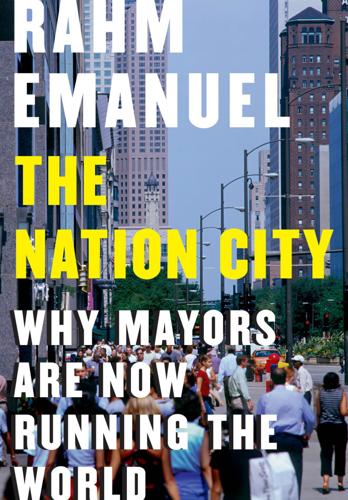
The Nation City: Why Mayors Are Now Running the World
by
Rahm Emanuel
Published 25 Feb 2020
Having open areas within the city, away from the water, is also vitally important. For decades the residents of the neighborhoods of Bucktown, Wicker Park, Logan Square, and Humboldt Park expressed their desire to transform the old, abandoned elevated Bloomingdale rail line into a walking park, something similar to the High Line in New York City. So we made it happen. The 2.7-mile pedestrian walkway, known now as the 606 (for Chicago’s zip code), was started in 2013 and completed just two years later. We accessed something known as the Congestion Mitigation and Air Quality Improvement Program, which is part of the Federal Highway Administration, to pay for nearly half of the 606’s $95 million cost.
…
We replicated part of this program in Chicago and then went a step further, enacting a tax on Airbnb rentals that raised $3 million for housing for the homeless. (We later put another tax on these rentals to raise money for 150 beds for domestic violence shelters.) We drew inspiration from San Antonio’s Paseo del Rio and Hidalgo’s work on the Seine for the Riverwalk. The 606 was modeled after the High Line in New York City, just as the idea for our tech center came from Bloomberg’s Roosevelt Island center. Replacing all of the streetlights in Chicago with LED lights was an idea I stole from former Vancouver mayor Gregor Robertson. I stole it because it was a very smart idea. Other ideas have risen nearly simultaneously.
…
Yes, the revival and reclamation of downtowns and neighborhoods and better policing and better data and general prosperity have been the main drivers in the drop in crime. But gentrification—filling formerly impoverished neighborhoods with more affluent residents—has also played a role. However, the displacement that comes with gentrification is a big problem. New York’s High Line has caused higher rental rates in its surrounding neighborhood, pushing out people and businesses and restaurants that had been there for decades. We have faced the same issue with the 606. One of the neighborhoods the walkway runs through is Humboldt Park, a Puerto Rican enclave. After the 606 was built, median house prices in the neighborhood rose 45 percent.
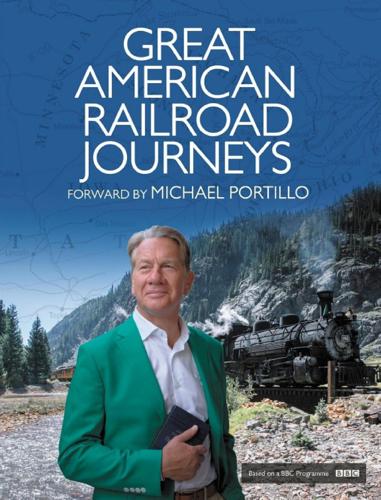
Great American Railroad Journeys
by
Michael Portillo
Published 26 Jan 2017
P.’), 153, 160–2, 161, 170, 203 McKinley backed by, 212 and ‘Morganization’, 160 shady deals of, 162 Morgan, Junius, 160, 221 Mormons, 201 Morse Code, 62–3, 62 Morse, Samuel, 62–3, 62 Murphy, Anthony, 111 N Nast, Thomas, 145, 180, 207 National Grange of the Order of Patrons of Husbandry, 208 National Museum of American History, 223 Native Americans, 7, 20, 56, 118, 183, 185, 189, 195, 196–7, 199 Nevins, Allun, 155 New York & Brooklyn Bridge Railway, 239 New York Central & Hudson River, 134 New York Central Railroad Company, 49, 133, 160, 216, 229, 242 New York & Erie, 140 New York & Harlem, 133, 134 New York & New Haven, 134 New York, New Haven & Hartford, 160, 237 New York Sun, 180, 181 New York Times, 167, 220, 223 New-York Tribune, 180 Nicholas I, Tsar, 39 Norfolk Southern Corporation, 29 North Pacific, 203 Northern Cross Railroad, 54–5 Northern Pacific, 98, 146, 160, 201, 202, 202 Northern Securities Company, 153, 212 Novelty Works, 32 O Official Railway Guide, 242 Ogden, William B., 57 Ogdensburg & Lake Champlain, 151 Ohio, becomes 17th state, 10 Ohio, 24 Old Ironsides locomotive, 60 O’Sullivan, John, 185 Our American Cousin, 124 P Pacific Railroad Act, 176 Pacific Telegraph Act, 63 Panama Canal, 131 Panics, 203 1837, 23, 57 1857, 138 1869, 207 1873, 182, 202 1893, 152, 160, 229 Paris Commune, 215 Parrott, Capt.
…
So, many like to see a monument to their worldly achievements erected before death claims them. Cornelius Vanderbilt was no different. His enduring memorial was to be Grand Central Depot, the New York station built on 23 acres (9 hectares), which opened in 1871, six years before his death. It wasn’t just a practical solution for a railroad magnate with lines criss-crossing New York City – although Grand Central Depot did become the single terminal for New York Central & Hudson River, the New York & Harlem and the New York & New Haven railroads, when previously three had been needed. The splendid building was a shout-out statement to passengers and rival railroad men that business was booming.
…
According to the New York Times: ‘Until the first blow fell, no one was convinced that Penn Station really would be demolished, or that New York would permit this monumental act of vandalism against one of the largest and finest landmarks of its age.’ Madison Square Garden was built in its place. Recently, a further redevelopment has been announced, with New York state governor Andrew Cuomo saying that the present station was dark, constrained, ugly, dated and ‘a lost opportunity’. Despite the demolition, the PRR could not survive, filing for bankruptcy two years after a merger with New York Central. Tenement living in New York was a grim reality for immigrants and, as this 1891 photo reveals, contrasted sharply with the city’s monumental public buildings.
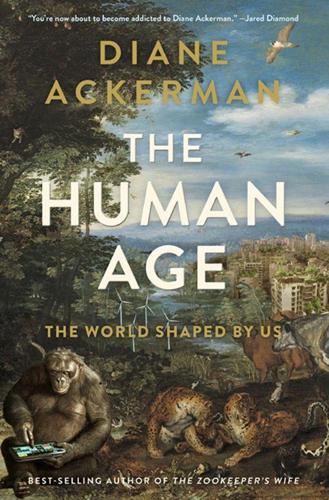
The Human Age: The World Shaped by Us
by
Diane Ackerman
Published 9 Sep 2014
I’ve biked or cross-country skied on some beauties in Ohio, California, Arizona, and New York. Memorably, biking on a rail trail outside Gambier, Ohio, at dawn, I was chased by a flock of farm geese. I knew their charge was merely bravado, so I pedaled slowly and let them nip at my pant legs, which seemed to give them a sense of territorial satisfaction, and they soon returned to the barnyard. I enjoyed their brief honking companionship, and learned something about geese I didn’t know: what clamorous watchdogs they make. A different stripe of oasis growing in popularity is the High Line on Manhattan’s West Side, a surprising sprawl of undulating benches, nests, perches, and lookouts, giving New York City yet another bridge—this one between the urban and the rural.
…
A different stripe of oasis growing in popularity is the High Line on Manhattan’s West Side, a surprising sprawl of undulating benches, nests, perches, and lookouts, giving New York City yet another bridge—this one between the urban and the rural. An old elevated freight spur, little more than a rusty eyesore on the Hudson, it’s metamorphosed into a tapestry of self-seeding wildflowers and domestic blooms. It isn’t the first raised park (there’s the Promenade Plantée in Paris, and remember the Hanging Gardens of Babylon?), but the High Line is the loveliest city rail trail I know. Picturesque, with many scenic views, it’s also richly detailed and alive, allowing you to feel elevated in spirit, floating in a garden in space where butterflies, birds, humans, and other organisms mingle.
…
The Little Ice Age: How Climate Made History, 1300–1850. New York: Basic Books, 2000. Flannery, Tim. Here on Earth: A Natural History of the Planet. New York: Atlantic Monthly Press, 2011. ———. Now or Never: Why We Must Act Now to End Climate Change and Create a Sustainable Future. New York: Atlantic Monthly Press, 2009. ———. The Weather Makers: How Man Is Changing the Climate and What It Means for Life on Earth. New York: Grove, 2006. Forbes, Peter. The Gecko’s Foot: Bio-inspiration—Engineering New Materials from Nature. New York: W. W. Norton, 2006. Francis, Richard C. Epigenetics: The Ultimate Mystery of Inheritance. New York: W. W. Norton, 2011.
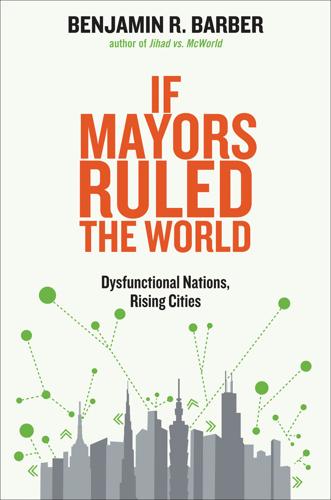
If Mayors Ruled the World: Dysfunctional Nations, Rising Cities
by
Benjamin R. Barber
Published 5 Nov 2013
CITIES WITHOUT SOVEREIGNTY The Uses of Powerlessness Ford to New York: DROP DEAD! New York Post headline, 1976 I have my own army in the NYPD, which is the seventh biggest army in the world. . . . I don’t listen to Washington very much, which is something they’re not thrilled about. Mayor Bloomberg, New York City, 2012 When the governments of nation-states tell their cities to back off—“Ford to New York: DROP DEAD!” screamed the New York Post in 1976—you might think the matter would be settled.1 Not anymore. With his “own army,” Mayor Bloomberg of New York declared recently, not only does he not “listen to Washington very much,” but he has his own foreign policy and global network through which he can solve problems as he will.
…
Unlike corporations or associations, states are territorial by definition, and cities always sit on land that is part of some nation’s territory. New York may not pay much attention to Washington, but Washington will be watching New York. While citizens can dream across borders, they are defined by and owe their fealty neither to the local city alone, nor to some emerging global civic cosmopolis, but to their national flags and patriotic anthems and defining national “missions.” For Mayor Bloomberg and his proud New Yorkers—count me among them—this means we must hearken not just to “New York, New York, it’s a wonderful town” and the Statue of Liberty, but to “America the Beautiful” and the Lincoln Memorial; to that larger nation that claims to be a “beacon of liberty” to the world.
…
and a boxy grid of streets extending up into the rocky hills of what would become Harlem, all the way up to 155th Street.42 While a number of places and squares including Union Place and Washington Square were built into the grid, the absence of breathing space and the dearth of natural sanctuaries in a plan being imposed on pure nature was startling—although an apt tribute to property values, which even then were very high. A New York visitor to London in 1840 was shocked by New York’s seeming obliviousness: “I never enter the London Parks without regretting the folly (call it cupidity) of our people [in New York], who, when they had a whole continent at their disposal, have left such narrow spaces for what has been so well called the lungs of a city.”43 If nature lost its place in city planning in New York in 1811, it won it back in Frederick Law Olmsted and Calvert Vaux’s 1853 Greensward Plan for a great central park to occupy the heart of what had been planned as an omnipresent grid already swallowing up the island of Manhattan.
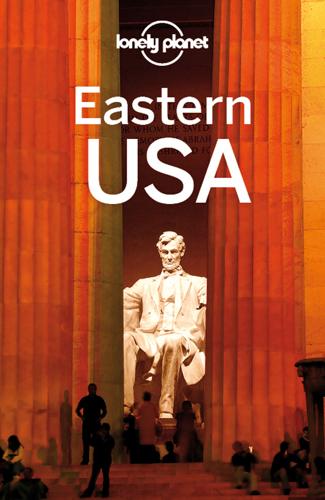
Eastern USA
by
Lonely Planet
Top Five Scenic Drives »Catskills, New York – Rte 23A to 214 to 28 : This takes you past forested hills, rushing rivers and spectacular falls. »North Central, Pennsylvania – Rte 6 : A drive through this rugged stretch of mountains and woodlands includes gushing creeks, wildlife and state forests. »Lake Cayuga, New York – Rte 80 : Head north from Ithaca above the lake past dozens of wineries. »Delaware Water Gap, New Jersey – Old Mine Rd : One of the oldest roads in the US past beautiful vistas of the Delaware River and rural countryside. »Brandywine Valley, Pennsylvania – Rte 100, 52 and 163 : Only 25 miles through rolling horse country and lovely farmland. THE HIGH LINE Originally built in the 1930s to lift freight trains off Manhattan’s streets, the High Line is now a brilliantly designed elevated park that embraces the natural and industrial, from the Meatpacking District to Chelsea.
…
Walk the Freedom Trail past Paul Revere’s house and the Revolutionary War’s first battleground. Hang out in Harvard Square’s cafes and bookshops, and chow down in North End trattorias and oyster houses. Then catch the train to New York City. With four days, you can indulge in iconic Manhattan and beyond. Stroll Central Park, walk the canyons of Wall Street, go bohemian in Greenwich Village and catch a ferry to the Statue of Liberty. For a more local scene, join residents on the High Line, in NoLita’s stylish shops and in Brooklyn’s cool cafes. Next hop a train to Philadelphia, which is practically down the block from NYC. Philly was the birthplace of American independence, and has the Liberty Bell and Declaration artifacts to prove it.
…
Click here On the Road NEW YORK, NEW JERSEY & PENNSYLVANIA NEW YORK CITY NEW YORK STATE Long Island Hudson Valley Catskills Finger Lakes Region Capital Region The Adirondacks Thousand Islands Region Western New York NEW JERSEY Northern New Jersey Princeton & Around Jersey Shore South Jersey PENNSYLVANIA Philadelphia Pennsylvania Dutch Country South Central Pennsylvania Northeastern Pennsylvania Pittsburgh NEW ENGLAND MASSACHUSETTS Boston Cape Cod Nantucket Martha’s Vineyard Central Massachusetts The Berkshires RHODE ISLAND Providence Newport Rhode Island Beaches CONNECTICUT Connecticut Coast Lower Connecticut River Valley Hartford Litchfield Hills VERMONT Southern Vermont Central Vermont Northern Vermont Burlington NEW HAMPSHIRE Portsmouth Manchester Concord Lake Winnipesaukee White Mountains Hanover MAINE Southern Maine Coast Portland Central Maine Coast Acadia National Park Bar Harbor WASHINGTON, DC & THE CAPITAL REGION WASHINGTON, DC MARYLAND Baltimore Annapolis Eastern Shore Ocean City Western Maryland DELAWARE Delaware Beaches VIRGINIA Northern Virginia Fredericksburg Richmond Petersburg Historic Triangle Hampton Roads Virginia Beach The Piedmont Shenandoah Valley Blue Ridge Highlands & Southwest Virginia WEST VIRGINIA Eastern Panhandle Monongahela National Forest Southern West Virginia THE SOUTH NORTH CAROLINA North Carolina Coast The Triangle Charlotte North Carolina Mountains SOUTH CAROLINA Charleston Lowcountry North Coast Columbia TENNESSEE Memphis Nashville Eastern Tennessee KENTUCKY Louisville Bluegrass Country Central Kentucky GEORGIA Atlanta North Georgia Central Georgia Savannah Brunswick & the Golden Isles ALABAMA Birmingham Montgomery Selma Mobile MISSISSIPPI Tupelo Oxford Mississippi Delta Jackson Natchez Gulf Coast LOUISIANA New Orleans Cajun Country Cane River Country Northern Louisiana ARKANSAS Little Rock Hot Springs Arkansas River Valley Ozark Mountains Arkansas Delta FLORIDA SOUTH FLORIDA Miami Fort Lauderdale Palm Beach & Around The Everglades Florida Keys ATLANTIC COAST Space Coast Daytona Beach St Augustine Jacksonville WEST COAST Tampa St Petersburg Sarasota Fort Myers Sanibel & Captiva Islands Naples CENTRAL FLORIDA Orlando Walt Disney World Resort FLORIDA PANHANDLE Tallahassee Panama City Beach Pensacola & Pensacola Beach GREAT LAKES ILLINOIS Chicago INDIANA Indianapolis Bloomington & Central Indiana Southern Indiana Northern Indiana OHIO Cleveland Erie Lakeshore & Islands Amish Country Columbus Athens & Southeastern Ohio Dayton & Yellow Springs Cincinnati MICHIGAN Detroit Lake Michigan Shore WISCONSIN Milwaukee Madison Along the Mississippi River Door County & Eastern Wisconsin Apostle Islands & Northern Wisconsin MINNESOTA Minneapolis St Paul Southern Minnesota Duluth & Northern Minnesota Top of section New York, New Jersey & Pennsylvania Includes » New York City New York State Long Island Hudson Valley Catskills Capital Region New Jersey Jersey Shore Pennsylvania Philadelphia Pennsylvania Dutch Country Pittsburgh Why Go? Where else could you visit an Amish family’s farm, camp on a mountaintop, read the Declaration of Independence and view New York, New York from the 86th floor of an art-deco landmark - all in a few days? Even though it’s the most densely populated part of the US, it’s full of places where jaded city dwellers escape to seek simple lives, where artists retreat for inspiration, and pretty houses line main streets in small towns set amid stunning scenery.
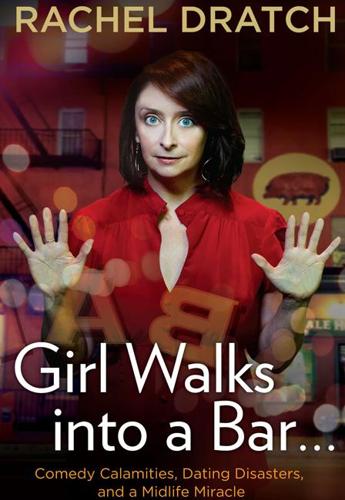
Girl Walks Into a Bar . . .: Comedy Calamities, Dating Disasters, and a Midlife Miracle
by
Rachel Dratch
Published 29 Mar 2012
Eli got a good dose of the Icelandic Plan for Good Baby Health that day, courtesy of Paul Dratch. Now, at the High Line, in the summer heat, we have to chase my dad down the path, but he’s way ahead of us. He disappeared from sight long ago. We catch up to him finally and he brightly reports, “We’re having a blast! Aw, look at him. He’s my little buddy!” He’s oblivious to the fact that once again, he’s been hogging the baby. My parents not only came around to the idea of the pregnancy and grandchild, they have been reborn. They come to New York at least once a month. Every time my father visits, at some point in the weekend, he will take me aside, look at me very seriously, lower his voice, and say, “You have given us such a blessing” or “He’s such a miracle.”
…
Now I got to bookend the whole experience with an awkward and silent car ride in the wee hours of the morning for my final moment. When I left New York for Sacramento, I had high hopes of finally graduating to the best-friend role. Instead I was faced with a straight-to-video experience that included accidental exposure, an on-set meltdown, a clash on the finer points of what’s in a name, and a homicide. And when I left New York for Sacramento, I had a boyfriend, albeit an all-wrong-for-me, introduced-me-as-Rachel-not-my-girlfriend-Rachel kind of boyfriend. I returned home from Sacramento to New York as a single woman. I’d have to regroup and eventually turn off the Sinéad O’Connor.
…
I was forty-three years old and I was actually seeing the benefits of not having kids and was accepting my fate after all those years of struggling. Then, I met a guy in a bar. Girl Walks into a Bar On a Sunday night at the beginning of summer in New York City, I went out with my friend Lisa. Lisa is a total New York City character, the unofficial mayor of the Lower East Side. I met her back when she was the bartender at my favorite New York restaurant, and we eventually struck up a friendship. She is brash and loud at times, but she also has a surprising wisdom about human behavior, like a stereotypical bartender you’d see in a movie. Lisa has long black hair and a complexion so pale it tips the fact that she rarely ventures out in daytime.
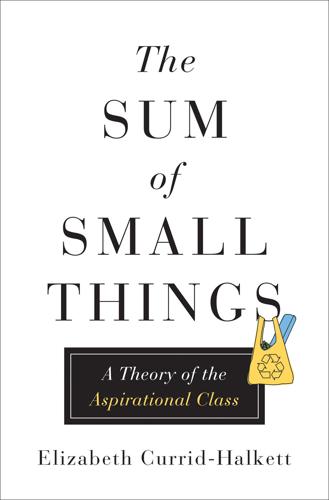
The Sum of Small Things: A Theory of the Aspirational Class
by
Elizabeth Currid-Halkett
Published 14 May 2017
Rampell, C. (2013, April 23). Who says New York is not affordable? New York Times. Retrieved from http://www.nytimes.com/2013/04/28/magazine/who-says-new-york-is-not-affordable.html. Rapoza, K. (1999, December 16). Will big business gobble up Ben and Jerry’s? Salon. Retrieved from http://www.salon.com/1999/12/16/ben_and_jerry/. Reich, R. B. (1992). The work of nations: Preparing ourselves for 21st-century capitalism (1st ed.). New York: Knopf. Rice, A. (2014, June 29). Stash pad. New York Magazine. Retrieved from http://nymag.com/news/features/foreigners-hiding-money-new-york-real-estate-2014-6. Richards, T. (1991).
…
In 1970, Bach opened up the Lotte Berk Method studio on 67th Street in the heart of New York City’s Upper East Side and later opened another studio in an old potato barn in the Hamptons, on Bridgehampton’s Butter Lane, so clients could still attend classes during summer holidays. Upper-crust WASPs, celebrities, and New York socialites attended the classes in droves—the very social x-rays chronicled by Tom Wolfe (who was also a client of Bach’s). As Bach herself reported, “I had all three generations of the Kennedys … in one class.” For many years, the studios were “a well-kept and expensive secret of New York’s upper crust,” as the New York Observer put it, and Bach refused to franchise or make deals with others to open up more studios in New York or other cities (Bach briefly opened a studio in Los Angeles).
…
Certain cities are acutely emblematic of this trend. As a share of their outgoing expenditures, New York City women spend two times more on shoes than everyone else. As far as women’s clothes go, Dallas and New York City are home to the biggest spenders, unsurprising given the ostentatious need-to-be-seen nature of both cities’ cultures. New York City and Washington, DC are home to the biggest spenders on men’s shoes—likely a result of being the epicenters of two male-dominated industries: finance and politics. While most cities spend an average amount on watches, New York City and Los Angeles spend more by a large margin. In fact, in 2010, New Yorkers spent about 27 times more on watches as a share of total expenditures than everyone else—no city even compares.

How to Fix the Future: Staying Human in the Digital Age
by
Andrew Keen
Published 1 Mar 2018
I’m with my old friend John Borthwick, the founder and CEO of Betaworks, a New York City–based venture studio that incubates technology start-up companies. We are at the Betaworks studio in New York’s Meatpacking District—the downtown Manhattan neighborhood named after its industrial-scale slaughterhouses—which is now one of the city’s most fashionable areas. Along with its cobbled streets, boutique stores, exclusive clubs, and restaurants, the area is best known as being the southern terminus of the High Line—the section of the old New York Central Railroad that has been successfully reinvented as a three-mile-long elevated public park.
…
“Look, so much of our business is reality distortion,” he confesses about the tech industry, “so we don’t fucking know what AI is going to be.” But he does know what AI shouldn’t be—a proprietary operating system owned and operated by a single winner-take-all company. So his first fix is what he calls an “open AI platform,” a public space for technologists, not unlike the Meatpacking District’s High Line—the public park built on top of the New York Central railroad that was created by an alliance of local entrepreneurs, city regulators, and urban activists. Borthwick says it’s critical that what he calls “the stack”—the manifold layers of technology making up a networked operating system—is open to every type of developer and application.
…
Seth Fiegerman, “Uber Drivers to Join Protest for $15 Minimum Wage,” CNN Money, November 28, 2016. 53. Noam Scheiber and Mike Isaac, “Uber Recognizes New York Drivers’ Group, Short of a Union,” New York Times, May 10, 2016. 54. Emma G. Fitzsimmons, “New York Moves to Require Uber to Provide Tipping Option on Its App,” CNBC, April 17, 2017. 55. Farhad Manjoo, “One Way to Fix Uber: Think Twice Before Using It,” New York Times, June 14, 2017. 56. Mike Isaac, “Uber CEO to Leave Trump Advisory Council After Criticism,” New York Times, February 2, 2017. 57. Josh Lowensohn, “Uber Gutted Carnegie Mellon’s Top Robotics Lab to Build Self-Driving Cars,” Verge, May 19, 2015. 58.
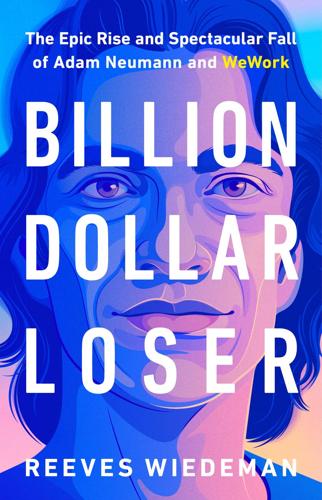
Billion Dollar Loser: The Epic Rise and Spectacular Fall of Adam Neumann and WeWork
by
Reeves Wiedeman
Published 19 Oct 2020
WeWork had talked with Morgans about building a music-themed space—WeRock—at one of its New York hotels. Gross was blond and boyish, and moved naturally within New York’s elite circles, swimming laps with investment bankers at the New York Athletic Club on Central Park South. A few months after joining WeWork, he helped coax Lew Frankfort, the former Coach CEO whose son was Gross’s friend, to invest $7 million in the company and become a board member. “Michael’s the kind of guy who could take a Saudi sheik out for a night in New York and come back with $200 million,” Jamie Hodari, the founder of a WeWork rival called Industrious, said.
…
The uncertainty made late April a complicated moment for Adam to go surfing halfway around the world. He remained in constant contact with executives back in New York, who were getting on calls with Adam in the middle of the night. But the nine-hour time difference between the Maldives and New York made things difficult. Adam went dark to observe Shabbat just as the team in New York woke up on Friday morning, and he eventually had one of his deputies fly to the Maldives to help him in person. On the phone, Artie told Adam that he and WeWork’s finance team were preparing to meet with investment banks in New York in early May to begin selecting one of them to manage WeWork’s IPO process.
…
He lost in the first round when a professor deemed the idea impractical: even if Adam could figure out how to coax people into giving up their personal space, the professor said, he could never get enough money to disrupt the residential real estate market in New York City. Adam still wasn’t much for schoolwork, but he embraced New York as a living classroom for practicing the art of negotiation on bouncers and by “hitting on every girl in the city,” as he later put it. (Much of his course work, Adam said, focused on “women’s studies.”) The Neumanns made for an attractive duo in the bars and clubs of New York, where Adi’s modeling success earned them entry into fashion shows and appearances in society-page photographs. Religion had never been a big part of the Neumanns’ life in Israel, but Adam and his sister joined SoHo Synagogue, a religiously inclined social club that aimed to become “the world’s first-ever lounge-themed sanctuary” by catering to a young and hip crowd.

Brave New Work: Are You Ready to Reinvent Your Organization?
by
Aaron Dignan
Published 1 Feb 2019
“There may be said to be two classes”: Brené Brown, Daring Greatly: How the Courage to Be Vulnerable Transforms the Way We Live, Love, Parent, and Lead (New York: Gotham, 2012), 142. The average human being has an inherent dislike of work: Douglas McGregor, The Human Side of Enterprise: Annotated Edition, commentary by Joel Cutcher-Gershenfeld (New York: McGraw Hill, 2006), 4. The expenditure of physical and mental effort: Ibid. He asked students: Daniel H. Pink, Drive: The Surprising Truth About What Motivates Us (New York: Riverhead Books, 2009), 5–9. control-oriented firms: Ibid., 89; Myrlande Davermann, “Why HR = Higher Revenues,” CNN Money, September 22, 2006, https://money.cnn.com/magazines/fsb/fsb_archive/2006/07/01/8380516/index.htm?
…
“milk in coffee”: Niels Pflaeging, “Change is more like adding milk to coffee,” Medium, March 6, 2018, https://medium.com/@NielsPflaeging/change-is-more-like-adding-milk-to-coffee-b6498a3aa708 “Do this again next year”: Ed Catmull, Creativity, Inc.: Overcoming the Unseen Forces That Stand in the Way of True Inspiration (New York: Random House, 2014), 174. “the past and the future”: Dave Gray, Liminal Thinking: Create the Change You Want by Changing the Way You Think (Brooklyn: Two Waves Books, 2016), xxi. “What does tension seek?”: Peter M. Senge, The Fifth Discipline: The Art & Practice of the Learning Organization (New York: Currency, 1990), 140. “gap between how things are”: Brian Robertson, Holacracy (New York: Macmillan, 2015), 5. fifty-three words for snow: David Robson, “There Really Are 50 Eskimo Words for ‘Snow,’” The Washington Post, January 14, 2013, www.washingtonpost.com/national/health-science/there-really-are-50-eskimo-words-for-snow/2013/01/14/e0e3f4e0-59a0-11e2-beee-6e38f5215402_story.html?
…
Alternatively, our planner could look up and notice that an abandoned elevated railway running from the Meatpacking District to Chelsea has been colonized by wild plants, creating what looks like a linear park in the sky. That’s exactly what Joshua David and Robert Hammond noticed before they founded Friends of the High Line, a nonprofit dedicated to the railway’s preservation and reuse as a public park. Upon opening, the High Line was an instant phenomenon, and today it attracts more than five million visitors a year. In an unexpected twist, the buildings and real estate around the park, previously an eyesore, have now skyrocketed in value. The areas along the High Line are among the most desirable in the city. All because someone started with what was (almost) there. The history of human innovation is a story of happy accidents.
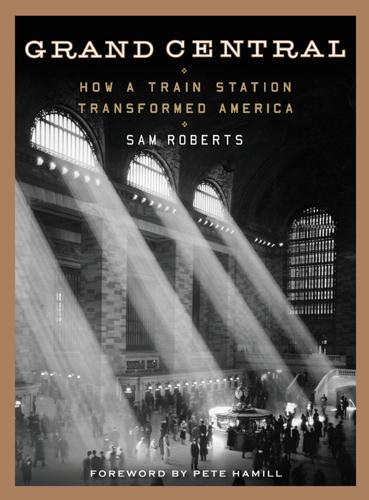
Grand Central: How a Train Station Transformed America
by
Sam Roberts
Published 22 Jan 2013
Ed Nowack/Penn Central Company: viii; Arthur Rothstein/Library of Congress: xi; Library of Congress: 22, 27, 58, 87, 282; Penn Central: 45, 55, 62, 64, 112, 120; Signal Corps, Brady Collection/National Archives: 39; Museum of the City of New York: 48, 87; Wide World Photos/The New York Times: 66, 94–95, 114; Rubenstein Library/Duke University: 70; The Library of Congress: 76–77; The New York Times: 83, 159, 229; Otto Nelson/Avery Library of Columbia University: 84, 90; New York City Dept. of Information Technology & Telecommunications: 96, 97; David V. Hyde/Penn Central Company: 119; Ward Allan Howe: 125; Municipal Archives of the City of New York: 124; Neal Boenzi/The New York Times: 137; Edward Hausner/The New York Times: 142–43; Jack Manning/The New York Times: 148, 241; Neal Boenzi/The New York Times: 158; Ewing Galloway: 163; Patrick A.
…
Hyde/Penn Central Company: 119; Ward Allan Howe: 125; Municipal Archives of the City of New York: 124; Neal Boenzi/The New York Times: 137; Edward Hausner/The New York Times: 142–43; Jack Manning/The New York Times: 148, 241; Neal Boenzi/The New York Times: 158; Ewing Galloway: 163; Patrick A. Burns/The New York Times: 167; William Eckenberg/The New York Times: 172; Arthur Brower/The New York Times: 177; The Associated Press: 181; Don Hogan Charles/The New York Times: 184; Sara Krulwich/The New York Times: 188; Fred R. Conrad/The New York Times: 196, 240; Keith Meyers/The New York Times: 197; Bill Swersey for The New York Times: 212; Vic DeLucia/The New York Times:224; David W. Dunlap: 243. A NOTE ON SOURCES QUOTATIONS from contemporary sources come mostly from interviews or correspondence by the author with, among others, Peter Stangl, Richard Ravitch, Peter Kalikow, Joseph Lhota, Kent Barwick, Laurie Beckelman, John Belle, Ben Cheever, Nina Gershon, Judah Gribetz, Ashton Hawkins, Tony Hiss, Karl Katz, Harry Kelly, Caroline Kennedy, Maxinne Leighton, Fred Papert, Andrew Penson, Frank Prial Jr., James Sanders, John Zuccotti, and Metro-North officials and employees.
…
Stern, Robert A.M., Gregory Gilmartin, and John Massengale. New York 1900: Metropolitan Architecture and Urbanism 1890–1915. New York: Rizzoli, 1983. Stern, Robert A.M., Gregory Gilmartin, and Thomas Mellins. New York 1930: Metropolitan Architecture and Urbanism Between the Two World Wars. New York: Rizzoli, 1987. Stern, Robert A.M., David Fishman, and Thomas Mellins. New York 1960: Architecture and Urbanism Between the Second World War and the Bicentennial. New York: Monacelli Press, 1995. Stern, Robert A.M., David Fishman, and Jacob Tilove. New York 2000: Architecture and Urbanism Between the Bicentennial and the Millennium. New York: Monacelli Press, 2006.

USA Travel Guide
by
Lonely, Planet
Top Five Scenic Drives » Catskills, New York – Rte 23A to 214 to 28 : This takes you past forested hills, rushing rivers and spectacular falls. » North Central, Pennsylvania – Rte 6 : A drive through this rugged stretch of mountains and woodlands includes gushing creeks, wildlife and state forests. » Lake Cayuga, New York – Rte 80 : Head north from Ithaca above the lake past dozens of wineries. » Delaware Water Gap, New Jersey – Old Mine Rd : One of the oldest roads in the US past beautiful vistas of the Delaware River and rural countryside. » Brandywine Valley, Pennsylvania – Rte 100, 52 and 163 : Only 25 miles through rolling horse country and lovely farmland. THE HIGH LINE Originally built in the 1930s to lift freight trains off Manhattan’s streets, the High Line is now a brilliantly designed elevated park that embraces the natural and industrial, from the Meatpacking District to Chelsea.
…
Head online to lonelyplanet.com/thorntree to chat with other travelers. Two to Three Weeks East Coasting The great dynamo of art, fashion and culture, New York City is America at her most urbane. Spend four days exploring the metropolis, visiting memorable people-watching hoods such as the West and East Villages, the Lower East Side, Soho, Nolita and the Upper West Side, with a museum hop down the Upper East Side. Have a ramble in Central Park, stroll the High Line and take a detour to Brooklyn. After big-city culture, catch your breath at the pretty beaches and enticing charms of the Hamptons on Long Island.
…
It was once an Eastern European immigrant area; you’ll still see old Ukrainians and Poles in the park, but they’ll be alongside punks, students, panhandlers and a slew of dog-walking yuppies. East & West Village Top Sights Lower East Side Tenement Museum F3 New Museum of Contemporary ArtE3 Sights 1 Cage C2 2 Christopher Street PierB3 3 Cooper Union E2 4 High Line Southern TerminusB1 5 Museum of Chinese in America E4 6 New York UniversityD2 7 Old St Patrick's Cathedral E3 8 Ravenite Social Club E3 9 Sheridan SquareC2 10 Stonewall Inn C2 Activities, Courses & Tours 11 Downtown Boathouse B3 12 Russian & Turkish Baths F1 Sleeping 13 Abingdon Guest House B1 14 Bowery Hotel E2 15 East Village Bed & Coffee G2 16 Gem Hotel E3 17 Hotel Azure E4 18 Hotel Gansevoort B1 19 Hotel on Rivington F3 20 Jane Hotel B1 21 Larchmont Hotel D1 22 Sixty Thompson D3 23 Soho Grand Hotel D4 24SoLita SoHoE4 Eating 25 Bánh Mì Saigon Bakery E4 26 Blue Hill C2 27 Buvette C2 28 Counter F2 29 Donut PlantF4 30 Economy Candy F3 31 Egg Custard King F4 32 Fat Radish F4 33 Focolare E4 34 Fonda Nolita E3 35 Il Bagatto F2 36 Katz's Delicatessen F3 37 Kuma Inn F3 38 La Esquina Taqueria E4 39 Momofuku Noodle BarF1 40 Mooncake Foods D4 41 Peasant E3 42 Perilla C2 43 Ruby's E3 44 Russ & Daughters F3 45 Snack Taverna C2 46 Souvlaki GR F3 Spitzer's Corner (see 19) 47 Taïm C1 48 Thelewala D2 49 Torrisi Italian Specialties E3 50 Vanessa's Dumpling House F4 51 Veselka E1 52 Xi'an Famous Foods F1 Drinking 53 Decibel E1 54 Fat Cat C2 55 Henrietta Hudson C2 56 KGB Bar E2 57 Mayahuel E2 58 McSorley's Old Ale House E2 59 Mulberry Project E4 60 Schiller's Liquor Bar F3 61 Welcome to the Johnsons F3 Entertainment 62 Anthology Film Archives E2 63 Beauty & Essex F3 64 Cielo B1 65 Delancey Lounge G3 66 Film Forum C3 67 IFC Center C2 68 Joe's Pub E2 69 Landmark Sunshine Cinema F3 70 Le Poisson Rouge D2 71 Mercury Lounge F3 72 New York Theater Workshop E2 73 Ontological Theater E1 74 PS 122 F1 Public Theater (see 68) 75 Smalls C2 76 SOBs C3 77 Sullivan Room D2 Village Lantern (see 77) 78 Village Vanguard C1 79 Webster Hall E1 Shopping 80 Bloomingdale's SoHo D3 81 Eastern Mountain Sports D3 82 McNally Jackson Books E3 83 Strand Bookstore D1 84 Topshop D4 85 Uniqlo D3 New Museum of Contemporary Art MUSEUM Offline map Google map ( 212-219-1222; www.newmuseum.org; 235 Bowery, at Prince St; adult/child $12/free; 11am-6pm Wed, Fri, Sat & Sun, to 9pm Thu) Housed in an architecturally ambitious building on a formerly gritty Bowery strip, this is the city’s sole museum dedicated to contemporary art.

The Great Wave: The Era of Radical Disruption and the Rise of the Outsider
by
Michiko Kakutani
Published 20 Feb 2024
Recovery efforts were slow, but when Mitch Landrieu took office as mayor in 2010, he implemented ambitious rebuilding plans that not only included the rebuilding of critical infrastructure (from levees and roads, to schools and hospitals) but also aimed at making the city more resilient in the future—better prepared for future storms and climate change, better organized to grapple with long-term problems of poverty and crime, and with a more diversified economy including lots of new tech start-ups. New York City has been slow to recover from COVID, but the city has a long history of resilience. The terrorist attacks of 9/11 killed 2,753 people at the World Trade Center, and Lower Manhattan suffered an estimated $31 billion in economic damage. Under the direction of Mayor Michael Bloomberg, the city embarked on plans to not only rebuild the ravaged neighborhoods near Ground Zero but also implemented an ambitious redevelopment plan, featuring public-private partnerships that would lead to the construction of Hudson Yards and the High Line and building projects on both sides of the East River.
…
GO TO NOTE REFERENCE IN TEXT ADDITIONAL SOURCES Azhar, Azeem, The Exponential Age: How Accelerating Technology Is Transforming Business, Politics and Society (New York: Diversion Books, 2021). Balfour, Amelie, Hokusai: Thirty-Six Views of Mount Fuji (New York: Prestel, 2019). Beard, Mary, S.P.Q.R.: A History of Ancient Rome (New York: W.W. Norton & Company, 2016). Bishop, Bill, The Big Sort: Why the Clustering of Like-Minded America Is Tearing Us Apart (New York: Mariner Books, 2009). Boorstin, Daniel J., The Daniel J. Boorstin Reader (New York: The Modern Library, 1995). Bremmer, Ian, The Power of Crisis: How Three Threats—and Our Response—Will Change the World (New York: Simon & Schuster, 2022). Bridgeman, Tess, and Brianna Rosen, “National Security Implications of Trump’s Indictment: A Damage Assessment,” Just Security, June 10, 2023, justsecurity.org/86887/national-security-implications-of-trumps-indictment-a-damage-assessment/.
…
Diamond, Jared, Upheaval: Turning Points for Nations in Crisis (New York: Little, Brown and Company, 2019). Foner, Eric, The Second Founding: How the Civil War and Reconstruction Remade the Constitution (New York: W.W. Norton & Company, 2019). Forrer, Matthi, ed., Hokusai: Prints and Drawings (New York: Prestel, 2019). Fukuyama, Francis, The End of History and the Last Man (New York: Free Press, 2006). Fussell, Paul, The Great War and Modern Memory (New York: Oxford University Press, 2013). Gerstle, Gary, The Rise and Fall of the Neoliberal Order: America and the World in the Free Market Era (New York: Oxford University Press, 2022).
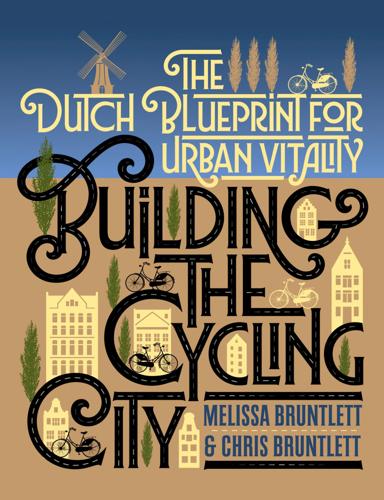
Building the Cycling City: The Dutch Blueprint for Urban Vitality
by
Melissa Bruntlett
and
Chris Bruntlett
Published 27 Aug 2018
Mayor Bloomberg was dedicating his tenure to PlaNYC, a sustainability agenda that studied what needed to be done to make New York City become a better functioning place by 2030. The farsighted plan, anticipating an influx of a million more people, aimed to improve New Yorkers’ quality of life by improving the quality of their neighborhoods and business districts. PlaNYC “raised some pretty profound questions for the Department of Transportation, and there was no way to get there without rethinking our streets,” says Sadik-Khan. “Fortunately we didn’t have to reinvent the wheel.” By looking at global examples, Sadik-Khan and her team developed their own “New York Way” of designing their streets to ensure they would be safe for people whether seven or seventy.
…
“The point isn’t that there is a ‘Dutch’ bike lane,” she says, “it’s really more of an approach that you’re bringing. The Netherlands wasn’t always this way—it was created and evolved—and that was very inspiring to me.” To change the hearts and minds of residents, these upgrades couldn’t be a cut-and-paste duplicate of somewhere else—they had to be created in New York. Her department would install over 400 miles of “Made in New York” bike lanes, and later launch Citi Bike, the single largest public bike-sharing scheme on the continent. Figure 1-3: A protected bike lane along Brooklyn’s Prospect Park, once referred to as “the most contested piece of land outside the Gaza Strip.” (Credit: Doug Gordon) Many of these upgrades were made possible simply by unlocking the hidden potential found in most city streets.
…
Their newest mobility plan focuses on shifting citizens out of their cars while providing more room for walking and cycling. To complement that work, officials have developed a “City Lounge” strategy (implementing pop-up terraces like those in New York) in an attempt to breathe life back into a historically hollow center. These planners recognize that, in Rotterdam as in other cities, it is as important to look outside their borders as within, to learn what works best when reshaping their streets. Looking at places like San Francisco, Bogotá, and Paris, and even borrowing New York’s “JSK approach” (a shorthand lovingly adopted in urban planning circles), they are bringing people back into the heart of Rotterdam, one pilot project at a time.
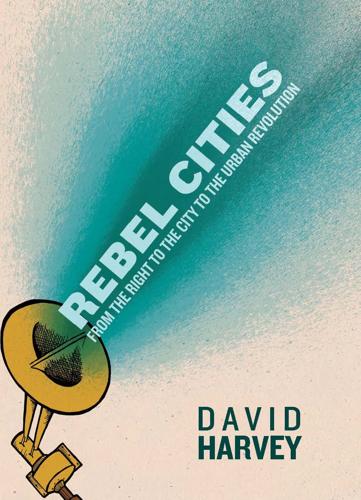
Rebel Cities: From the Right to the City to the Urban Revolution
by
David Harvey
Published 3 Apr 2012
See Fannie Mae 1 83 Guggenheim Museum Bilbao, 1 04, Ill Federal Reserve Bank, 24-25, 45 Fletcher, Bill, 1 34-35, 1 40 Hamas, 1 1 7 Flint, Michigan, 1 32 Hamburg, 78, 1 3 6 Florida, 3 1 , 32, 45, 54, 58 Hanseatic League, 1 5 3 Foster, Norman, 1 04, 107 France, 31, 1 1 9, 1 3 1 , 149. See also Paris Hardin, Garrett, 68, 6 9 , 7 0 , 7 5 , 7 9 , 80, Freddie Mac, 39, 45, 5 1 French Communist Party, 1 35-36 Common wealth, 1 52 Harlem, New York City, 1 09 Gapasin, Fernando, 1 34-35, 140 Haussman, Georges- Eugene, 7- 1 2 1 73n2 Hardt, Michael, 36, 67, 72, 78, 1 46-47; Haug, Wolfgang, 93 Gaudi, Antoni, 1 04 passim, 1 6, 42, 1 1 7, 1 30 Gehry, Frank, 1 04 Hezbollah, 1 1 7 Genoa, 1 1 6 the High Line, New York City, 75 H itler, Adolf, 1 07 George, Hen ry, 1 70n4 Georgia, 3 1 Germany, 1 5, 3 1 , 57, 1 08, 1 70n8. See also Berlin; Hamburg Gill, Leslie, 1 44, 145 Hittorf, Jacques Ignace, 7 Holland.
…
Richard Bookstaber, A Demon of Our Own Design: Markets, Hedge Funds, and the Perils of Financial Innovation, New York: Wiley, 2007; Frank Partnoy, Infectious Greed: How Deceit and Risk Corrupted Financial Markets, New York: Henry Holt, 2003. Harvey, A Brief History ofNeoliberalism; Thomas Edsall, The New Politics of Inequality, New York: Norton, 1 985. Jim Yardley and Vikas Bajaj, "Billionaires' Ascent Helps India, and Vice Versa;' New York Times, July 27, 20 1 1 . Marcello Balbo, "Urban Planning and the Fragm ented City of Developing Countries:' Third World Planning Review 1 5: 1 ( 1 993}: 23-5. Friedrich Engels, The Housing Question, New York: International Publishers ( 1 935}: 74-7.
…
See Kevin Cox, ed, Spaces of Globaliza t ion: Reasserting the Power of the Local, New York: Guilford Press, 1 997. 1 4. John Logan and Harvey Molotch, Urba n Fortu nes: The Political Economy of Place, Berkeley: University of California Press, 1 988. 1 5. Pierre Bourdieu, Distinctio n: A Social Critique of the Judgement of Taste, London: Routledge & Kegan Paul, 1 984. 16. Miriam Greenberg, Branding New York: How a City in Crisis Was Sold to the World, New York: Routledge, 2008. 1 7. Donald McNeill, Urban Change and the European Left: Tales fro m the New Barcelona, New York: Routledge, 1 999. 1 8. Argyro Loukaki, "Whose Genius Loci : Contrasting Interpretations of the Sacred Rock of the Athenian Acropolis;' A n nals of the Association of A merican Geographers 87: 2 ( 1 997): 306-29. 1 9.

Coders: The Making of a New Tribe and the Remaking of the World
by
Clive Thompson
Published 26 Mar 2019
Surrency, “The Lawyer and the Revolution,” American Journal of Legal History 8, no. 2 (April 1964): 125–35. move fast and break things: My description of Moses’s work here draws from: Robert A. Caro, The Power Broker: Robert Moses and the Fall of New York (New York: Knopf, 1974), 850–84; David W. Dunlap, “Why Robert Moses Keeps Rising from an Unquiet Grave,” New York Times, March 21, 2017, accessed August 18, 2018, https://www.nytimes.com/2017/03/21/nyregion/robert-moses-andrew-cuomo-and-the-saga-of-a-bronx-expressway.html; Sydney Sarachan, “The Legacy of Robert Moses,” PBS, January 17, 2013, accessed August 18, 2018, http://www.pbs.org/wnet/need-to-know/environment/the-legacy-of-robert-moses/16018/.
…
“promotes a dangerous confidence”: Maciej Cegłowski, “The Moral Economy of Tech,” Idle Words (blog), accessed August 18, 2018, http://idlewords.com/talks/sase_panel.htm. “so easily achievable”: Joseph Weizenbaum, Computer Power and Human Reason: From Judgment to Calculation (New York: W. H. Freeman, 1976), 111. back in 1980: Seymour Papert, Mindstorms: Children, Computers, and Powerful Ideas (New York: Basic Books, 1980), 23. “errors in my own programs”: Daniel Kohanski, The Philosophical Programmer: Reflections on the Moth in the Machine (New York: St. Martin’s, 1998), 160. “higher probability of succeeding”: INKtalksDirector, Ruchi Sanghvi: From Facebook to Facing the Unknown. “than to their profession”: Barry A.
…
“the better craftsman”: Mark Ford, “Ezra Pound and the Drafts of The Waste Land,” British Library, December 13, 2016, accessed August 18, 2018, https://www.bl.uk/20th-century-literature/articles/ezra-pound-and-the-drafts-of-the-waste-land; Helen Vendler, “The Most Famous Modern Poem—What Was Left In and What Was Cut Out,” New York Times, November 7, 1971, accessed online August 18, 2018, https://www.nytimes.com/1971/11/07/archives/review-1-no-title-the-waste-land-a-facsimile-and-transcript-of-the.html; Charles McGrath, “Il Miglior Fabbro,” New York Times, January 27, 2008, accessed online August 18, 2018, https://www.nytimes.com/2008/01/27/books/review/McGrath-t.html. “Bad Smells in Code”: Kent Beck and Martin Fowler, “Bad Smells in Code,” in Refactoring: Improving the Design of Existing Code, Martin Fowler, Kent Beck, John Brant, William Opdyke, and Don Roberts (New York: Addison-Wesley, 2012), 75.
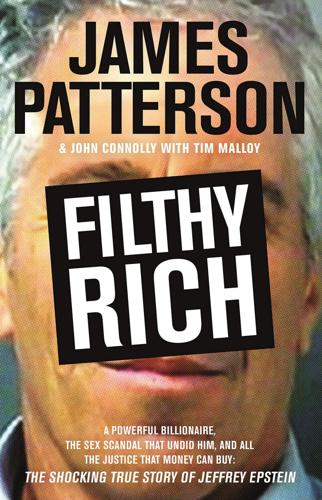
Filthy Rich: A Powerful Billionaire, the Sex Scandal That Undid Him, and All the Justice That Money Can Buy: The Shocking True Story of Jeffrey Epstein
by
James Patterson
,
John Connolly
and
Tim Malloy
Published 10 Oct 2016
Straus Mansion, on East 71st Street just off Central Park, was acquired by Leslie Wexner in 1989. (Laura Hanifin) Epstein, a longtime benefactor, with an unidentified friend, attended the 2014 New York Academy of Art’s Tribeca Ball, presented by Van Cleef & Arpels, at the New York Academy of Art on April 7, 2014, in New York City. (Billy Farrell / BFAnyc.com) Nadia Marcinkova, Michele Tagliani, Sarah Kellen, and Teala Davies, photographed at the New York Academy of Art’s Tribeca Ball, April 14, 2004 (Rob Rich / SocietyAllure.com) Sarah (formerly Kellen/Kensington) and husband, NASCAR driver Brian Vickers, arrive on the red carpet at the 141st running of the Kentucky Derby at Churchill Downs in Louisville, Kentucky.
…
And in 1971, he leaves Cooper Union for the greener pastures of New York University, located a few blocks away. There, at the Courant Institute of Mathematical Sciences, he studies the mathematical physiology of the heart. But he never graduates from any college or university. By 1973, Epstein is teaching at the Dalton School, a prestigious private school on the Upper East Side. Like Tavern on the Green, Grand Central Terminal, and the Century Association, Dalton is a New York institution—an elite K–12 rocket ship built for the children of New York’s ruling classes. It’s not at all clear how Epstein, who has no college degree, ends up there.
…
Epstein said he would eventually match me up with a wealthy person so that I would be “set up” for life. 8. So I started “working” exclusively for Epstein. He took me to New York on his big, private jet. We went to his mansion in New York City. I was shown to my room, a very luxurious room. The mansion was huge. I was very young and I got scared because it was so big. Epstein brought me to a room with a massage parlor. Epstein made me engage [in] sexual activities with him there. 9. You can see how young I looked in the photograph below [see insert page 3]. 10. Epstein took me on a ferry boat on one of the trips to New York City and there he took the picture above. I was approximately 15 or 16 years old at the time. 11.

City on the Verge
by
Mark Pendergrast
Published 5 May 2017
His vision was revolutionary in scope. Other cities had converted abandoned railroad corridors into streetcar lines or trails, but none proposed to connect disparate rails in a loop within two or three miles of a major urban center. In 1999, Friends of the High Line was just forming, though construction on this mile-and-a-half elevated length in New York City would not begin until 2006, and the High Line would offer no transportation benefit, just an unusual, relaxing tourist attraction. The Atlanta BeltLine that Gravel envisioned would knit the city together again. Randal Roark was so impressed with his advisee’s thesis that he assembled key Atlanta figures to hear Gravel present it, just before Christmas in 1999, on the cusp of a new millennium.
…
Just two hours before the deadline, they got the application in, and the BeltLine appeared in Mobility 2030, slotted for $150 million over multiple years. The money was completely hypothetical, but now the BeltLine had at least made it into the requisite official document. In February 2004, Cathy Woolard and Ryan Gravel incorporated a nonprofit called Friends of the Belt Line, modeled after a similar grassroots organization in New York City that was promoting the High Line. Actress Jane Fonda, who lived in a loft condo near the defunct Atlanta rail corridor, narrated a promotional video for the BeltLine. Shortly before Gravel issued the first newsletter for the new organization, dated April 26, 2004, Woolard resigned from the city council in order to run for the US Congress, hoping to find more funding for the Atlanta transit loop in Washington.
…
Maybe in part because it is hilly, whereas the BeltLine trail, following the former railroad, is easier to traverse, with only a subtle slope rising toward the southern end. A more compelling reason is that the BeltLine trail goes through real neighborhoods, offering differing views and attractions along its length. Like New York’s High Line, it shows visitors the big picture, but unlike its shorter, elevated Manhattan cousin, Atlanta’s trail runs at ground level in and among the communities, connecting them in a new way. One Tuesday afternoon in the fall of 2015, I walked the trail south from the intersection of 10th Street and Monroe.
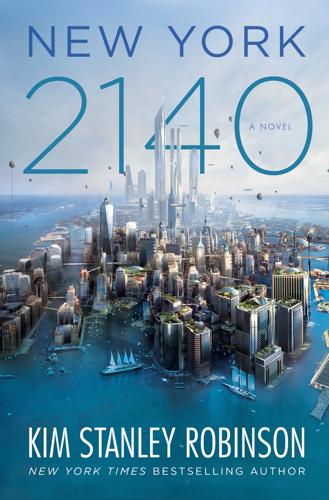
New York 2140
by
Kim Stanley Robinson
Published 14 Mar 2017
“Pack people in too tight and there could be an explosion.” “This is New York,” Charlotte said. “It’s a city of immigrants. You don’t get to pick how many.” “We can influence the number,” Galina said. “Only by being a thug and breaking the law.” “Explaining why we need quotas is not being a thug.” Charlotte shrugged and excused herself. “Don’t waste time on this,” she suggested as she left. She stumped home on the skybridges, looking down at the busy canals. She had started walking to and from work after her excursion with Inspector Gen. Every day now she found irregular high lines of her own devise. The original High Line was underwater and in its third life as an oyster bed.
…
“That’s what he meant,” the shorter one said, snatching the box from Vlade before he might change his mind. “Thanks, mister.” “All right, get out of here.” New York is in a constant state of mutation. If a city conceivably may be compared to a liquid, it may be reasonably said that New York is fluid: it flows. observed Carl Van Vechten Heaters were put in the steeply sloping roof of the Chrysler Building to stop ice from forming on it and sliding off onto Lexington Avenue with bad results, but after the Second Pulse people forgot this system existed. And then. e) a citizen New York, New York, it’s a hell of a bay. Henry Hudson sailed by and saw a break in the coast between two hills, right at the deepest part of the bight they were exploring.
…
The periphery infects the core, the provinces invade the imperial center, the network tugs the knot at its center tight, so tight that it becomes a Gordian knot and can only be cut in two. So: Hurricane Fyodor unleashed its wrath on New York and the immediate vicinity. A local catastrophe for sure, but for the rest of the world, a fascinating bit of news, an entertaining telenovela and a chance to exercise some delicious and mostly justifiable Schadenfreude. Few feel any huge affection for New York, that most desired but least beloved of cities, and no one in the history of the world has ever said Oh how I pity New York, or Oh what a pitiful city New York is. Never said, never thought. So the emotional, historical, and physical effects of the hurricane’s devastation were almost entirely local.
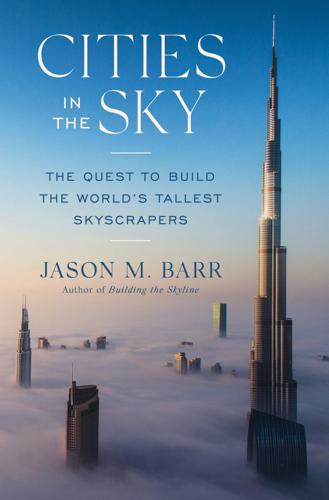
Cities in the Sky: The Quest to Build the World's Tallest Skyscrapers
by
Jason M. Barr
Published 13 May 2024
. “… above the first floor”: Sanderson et al. (1932). CHAPTER 2 New York City in the world: New York Times (1957). an architect: Wermiel (2006). vice president: New York Times (1932). Company of Canada: New York Times (1965). a wheelbarrow: Shultz and Simmons (1959), p. 167. Midtown Manhattan: Friedman (1998). “… get back in”: New York Times (1965). floors per week: Shultz and Simmons (1959), p. 167. “… stacked three high”: Friedman (1998), p 37. looking for a new location: New York Times (1928), Dec. 23; New York Times (1929), March 10. Manhattan office buildings: New York Times (1955). for the times: Shultz and Simmons (1959), p. 165; Tauranac (1995).
…
“Chicago Skyscraper Limit,” March 2, 1902, p. 10. https://timesmachine.nytimes.com/timesmachine/1902/03/02/issue.html. New York Times. “Largest Office Building to Replace Waldorf-Astoria.” December 23, 1928. https://nyti.ms/3RjHnsf. New York Times. “New Waldorf Site Sought for Year.” March 10, 1929. https://nyti.ms/3PIFy76. New York Times. “Waldorf Property Taken by Syndicate.” June 4, 1929. https://nyti.ms/4651D5a. New York Times. “Smith to Help Build Highest Skyscraper.” August 30, 1929. https://nyti.ms/44VMwdh. New York Times. “Enlarges Site for 1,000-Foot Building.” November 19, 1929. https://nyti.ms/3sRDAYV. New York Times. “Smith Skyscraper to Have Dirigible Mast Towering Quarter of a Mile above Fifth Av.”
…
In 1970, Hong Kong had four buildings that reached 328 feet (100 m); by 1990, it had over 900, and at the turn of the millennium it had over 2,000. When you compare Hong Kong’s construction to New York’s, its pace is equally astounding. New York got its first 328-foot structure in 1895, while Hong Kong’s first one was in 1962. Yet by 1985 Hong Kong had more skyscrapers than New York, and now New York only has a quarter as many. And when you look at the usage, the difference is stark. Both cities have about the same number of office skyscrapers, slightly more than three hundred each. Yet for Hong Kong that is only 8 percent of all its skyscrapers, while for New York it’s more than one-third. SHENZHEN AND HONG KONG: PASSIVE-AGGRESSIVE CODEPENDENTS On March 28, 2017, Shenzhen’s tallest tower, the Ping An Finance Centre, was officially completed in the city’s central business district, Futian.
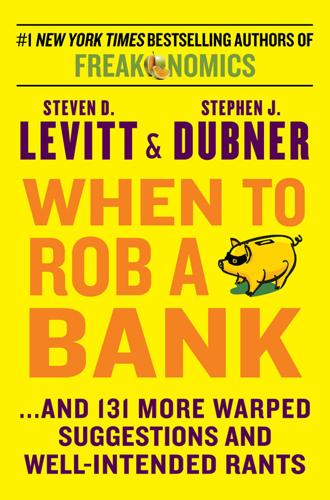
When to Rob a Bank: ...And 131 More Warped Suggestions and Well-Intended Rants
by
Steven D. Levitt
and
Stephen J. Dubner
Published 4 May 2015
” ■ ■ ■ I never set out to be anti-penny, but somehow it happened, and I now publicly rant whenever possible that the penny should be eliminated. While I stand by my belief that the penny is lousy as currency, someone has finally come up with a use for pennies that has made me reconsider my extinction argument: make a floor out of them! The penny floor can be found at the Standard Grill at the new Standard Hotel in New York, the one straddling the High Line. The Standard tells us that it used 250 pennies per square foot, or 480,000 pennies in all. For those of you thinking about a home renovation, that’s $2.50 per square foot in flooring materials. That stacks up pretty well against glass tile ($25), polished marble ($12), porcelain ($4), or even prefinished walnut ($5).
…
. / 103 “My research on child safety seats”: See Levitt and Dubner, SuperFreakonomics (William Morrow, 2009); and Dubner and Levitt, “The Seat-Belt Solution,” The New York Times Magazine, July 10, 2005. / 103 “When I first told him about my work on teacher cheating”: See Levitt and Dubner, Freakonomics (William Morrow, 2005). 109 “‘PEAK OIL’”: “A recent . . . cover story”: See Peter Maass, “The Breaking Point,” The New York Times Magazine, August 21, 2005. 114 “BETTING ON PEAK OIL”: “John Tierney wrote a great . . . column”: See Tierney, “The $10,000 Question,” The New York Times, August 23, 2005. / 116 “Sadly, Matthew Simmons died”: See Tierney, “Economic Optimism? Yes, I’ll Take That Bet,” The New York Times, December 27, 2010. 116 “DOES OBESITY KILL?”
…
“A flight attendant is not a waitress,” I was told—so forcefully that I felt terrible for even trying to put money in the woman’s hands. Want to Fix New York Air Congestion? Shut Down LaGuardia (SJD) The Department of Transportation just canceled its plan to auction off landing and takeoff slots at New York City’s three airports. The idea was to use market forces to ease congestion, but in the face of industry backlash (and legal threats), transportation secretary Ray LaHood called off the auction. “We’re still serious about tackling aviation congestion in the New York region,” LaHood says. “I’ll be talking with airline, airport, and consumer stakeholders, as well as elected officials, over the summer about the best ways to move forward.”
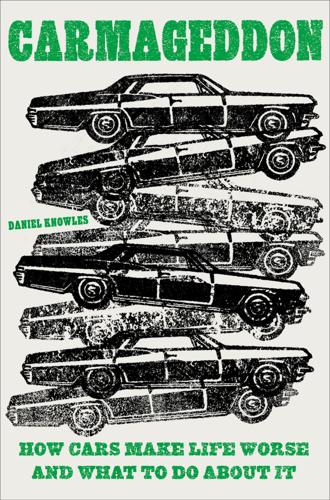
Carmageddon: How Cars Make Life Worse and What to Do About It
by
Daniel Knowles
Published 27 Mar 2023
The concrete tunnels that make up parts of the expressway now provide an eerie calm for cyclists to zoom through. The emergency telephone boxes and escape staircase that existed for motorists who broke down are still in place, but the fumes are gone. The open areas have become a sort of urban park along the river, with trees and benches. The Voie Georges-Pompidou feels a little like the High Line in New York. Where before there was constant traffic, now there are several open-air pop-up bars where you can buy a beer and watch families zoom past on bicycles. It is lovely. And yet closing the road was incredibly controversial and took more than a decade. The first to try it was Bertrand Delanoë, who served as mayor of the city of Paris from 2001 to 2014.
…
Of the top one hundred most crowded zip codes, eighty are in New York City. The rest are in the New York suburbs, or else in San Francisco; Washington, D.C.; and Chicago. One of the places to have survived is Greenwich Village, a neighborhood in Lower Manhattan that is now one of the most bourgeois places on Earth, but in the 1950s was considered, much like other parts of the city’s deindustrializing areas, to be a bit of a slum. By the beginning of the 1960s Robert Moses had transformed huge swathes of New York. He had built expressways, bridges, tunnels, and, through his New York City Committee on Slum Clearance Plans, demolished dozens of neighborhoods across the city.
…
In 1935 he visited New York, then the home of the world’s tallest buildings, and declared that the skyscrapers were not big enough. American cities were wonderfully modern, he thought, but “utterly devoid of harmony.” He admired the parkways then being built by Robert Moses, New York City’s transport supremo. But he worried (not wrongly) that they would simply empty the city into the suburbs. What he wanted to do was to bring the advantage of the suburbs into the city—expressways and tunnels would move cars around, but tower blocks and parks would preserve the population density. In New York, he thought, the blocks were too small, the roads not wide enough, and the homes crammed in too close to businesses.

My Friend Anna: The True Story of a Fake Heiress
by
Rachel Deloache Williams
Published 15 Jul 2019
Initially, I tried to avoid reading about the trial in the news, but my friends and family sent me links to articles, and I couldn’t resist. In his opening statement, Anna’s lawyer, Todd Spodek, offered the jury a line from the song “New York, New York,” made famous by Frank Sinatra: If I can make it there, I’ll make it anywhere. “Because the opportunities in New York are endless,” Spodek suggested. “Sinatra made a great new start here in New York, as did Ms. Sorokin,” he said. “They both created a golden opportunity.” A great new start? I thought. Assuming a false identity in order to cheat and steal? “Anna had to kick down the door to get her chance at life,” Spodek continued.
…
Another thought occurred to me: if Anna received monthly trust fund disbursements (as I had every reason to believe), maybe she’d already exceeded her allowance for May. The weekend before our trip to Morocco, at the start of the month, Anna had chartered a private jet to travel from New York to Omaha and back in order to attend the Berkshire Hathaway Annual Shareholders Meeting. I’d booked charter flights for photo shoots before—not many, but enough to be familiar with their expense. If Anna hadn’t made prior arrangements to access more funds for her travels, it might explain why she now seemed to be mired in red tape. Back in New York, occasional mishaps like this hadn’t seemed like a problem. Anna could afford to make mistakes—financial or otherwise. I remembered one night in late March when she and I had gone to a nautical-themed cocktail lounge in Manhattan called The Ship.
…
Anna’s presence threatened my efficiency. Finally, I changed into my pajamas, washed my face, and brushed my teeth. Anna’s back was to me as I turned down the covers on my side. Gently, I lifted a long pillow and placed it between us on the king-size bed as a barrier. I hoped to leave before she awoke. Chapter 2 New York, New York * * * Marrakech was a long way from Knoxville, Tennessee, where I was raised, the eldest of three children. Neither of my parents was from the state, but they attended graduate school in Knoxville and returned to raise a family, attracted by the city’s livability and its proximity to my mom’s parents, who lived just over the mountains, in Spartanburg, South Carolina.

No Such Thing as a Free Gift: The Gates Foundation and the Price of Philanthropy
by
Linsey McGoey
Published 14 Apr 2015
Following the lead set by the LA Times, similar disclosures of teacher test scores have taken place in other states. In New York, after the city’s value-added numbers were published, the New York Post ran an article and an accompanying photo of a Queens teacher, labelling him ‘the city’s worst’. Was the teacher a poor performer, or was he simply one of the 26 per cent of teachers misclassified by VAM scores? To his credit, Gates has objected to the public shaming of teachers. In the wake of a New York State Court of Appeals decision permitting individual teacher assessments to be published in public databases, he wrote a New York Times editorial calling the court’s ruling a ‘big mistake’.
…
I have used a pseudonym at the researcher’s request. 43Personal communication. 44Smith, Wealth of Nations, 490. Joseph Schumpeter, Capitalism, Socialism and Democracy (New York: Harper & Row, 1975 [1942]), 88. CHAPTER SIX 1Gary Rivlin, The Plot to Get Bill Gates (New York: Three Rivers Press, 1999), 27. 2My discussion of Gates’s early years at Microsoft draws on a number of sources, in particular Rivlin, The Plot to Get Bill Gates; Ken Auletta, World War 3.0: Microsoft and its Enemies (New York: Random House, 2001); James Wallace and Jim Erickson, Hard Drive; Bill Gates, The Road Ahead (New York: Viking, 1995). Knowledge Ecology International also has a useful timeline on its website exploring important patent rulings in relationship to the work of both Microsoft and the Gates Foundation; see keionline.org/microsoft-timeline. 3Rivlin, The Plot to Get Bill Gates, 98. 4David Bank, Breaking Windows: How Bill Gates Fumbled the Future of Microsoft (New York: The Free Press, 2001). 5John Dvorak, ‘Microsoft, the Spandex Granny’, PC Magazine, 17 July 2008. 6Mitchell Kapor, ‘The Road Ahead Traverses Hollow Path’, USA Today, 12 February 1999. 7‘Justice Department Files Antitrust Suit Against Microsoft’, press release, 18 May 1998, justice.gov. 8See Catherine Rampell, ‘Microsoft Yields to European Regulators’, Washington Post, 23 October 2007. 9Quoted in Timothy Lee, ‘A Patent Lie’, New York Times, 9 June 2007. 10Jerome Reichman, ‘The Know-How Gap in the TRIPS Agreement: Why Software Fared Badly, and What Are the Solutions’, Hastings Communications & Entertainment Law Journal, vol. 17 (1995), 763–94. 11Melinda Cooper, Life as Surplus: Biotechnology and Capitalism in the Neoliberal Era (Seattle: University of Washington Press, 2008); Stefan Ecks, ‘Global Pharmaceutical Markets and Corporate Citizenship: The Case of Novartis’ Anti-cancer Drug Glivec’, BioSocieties, vol. 3 (2008), 165–81. 12Alan Beattie, ‘Intellectual Property: A New World of Royalties’, Financial Times, 23 September 2012.
…
That following year, 2014, contributions to WHO by the U.S. government slightly outpaced the Gates Foundation. 12Michael Edwards, Small Change: Why Business Won’t Change the World (New York and London: Demos, 2010); see also Lisa Ann Richey and Stefano Ponte, Brand Aid: Shopping Well to Save the World (Minneapolis, MN: University of Minnesota Press, 2011); Gavin Fridell and Martijn Konings, eds., Age of Icons: Exploring Philanthrocapitalism in the Contemporary World (Toronto: University of Toronto Press, 2013); Robin Rogers, ‘Why Philanthro-policymaking Matters,’ Society, vol. 48, 376–81; and Iain Hay and Samantha Muller, ‘Questioning Generosity In The Golden Age of Philanthropy: Towards Critical Geographies of Super-philanthropy’, Progress in Human Geography, vol. 38, no. 5 (2014), 635–53. 13Email interview with author. 14The description of Frick’s three-mile fence comes from Howard Zinn, A People’s History of the United States (New York: Harper Perennial, 1980); see also David Nasaw, Andrew Carnegie (Harmondsworth: Penguin, 2007), and Kevin Phillips, Wealth and Democracy: A Political History of the American Rich (New York: Broadway Books, 2002). 15Nasaw, Andrew Carnegie, 456–7. 16Quoted by David Nasaw, ‘Introduction’, in Andrew Carnegie, The ‘Gospel of Wealth’ Essays and Other Writings (Harmondsworth: Penguin, 1996), xiii. 17Ralph Waldo Emerson, Self-Reliance and Other Essays (New York: Digireads Books, 2013 [1841]), 31. 18Oscar Wilde, The Soul of Man Under Socialism and Other Essays (Harmondsworth: Penguin, 2001 [1891]), 130.
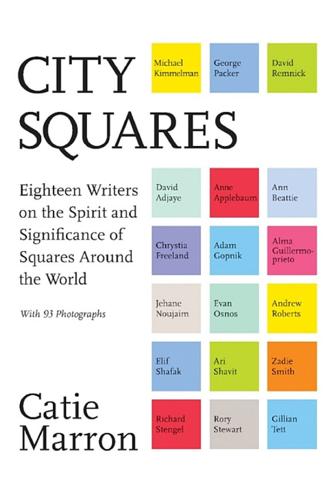
City Squares: Eighteen Writers on the Spirit and Significance of Squares Around the World
by
Catie Marron
Published 11 Apr 2016
Photo by Erich Lessing/Art Resource ABOUT THE AUTHORS CATIE MARRON With a career that has encompassed investment banking, magazine journalism, and public service, Marron is currently chairman of the board of directors of Friends of the High Line; a trustee of the New York Public Library, where she was chairman of the board for seven years; and a contributing editor to Vogue. Also the editor of City Parks, she lives in New York City with her family. DAVID ADJAYE, OBE David Adjaye is the founder and principal architect of Adjaye Associates. He is the 2015 recipient of the Eugene McDermott Award in the Arts at MIT. Currently the John C.
…
He is a recipient of the Chevalier of the Order of Arts and Letters from the French Republic. www.adamgopnik.com ALMA GUILLERMOPRIETO Born in Mexico City, Guillermoprieto is a journalist and essayist whose work has appeared in the New Yorker, the Washington Post, Newsweek, and the New York Review of Books. She is a MacArthur fellow, a recipient of the George Polk Award for Foreign Reporting, and the author of two memoirs, Samba and Dancing with Cuba, as well as two collected volumes of her work. MICHAEL KIMMELMAN The architecture critic for the New York Times, Kimmelman was its longtime chief art critic. He is the author of several books, including the national bestseller The Accidental Masterpiece: On the Art of Life and Vice Versa, a regular contributor to the New York Review of Books, and has been recognized with numerous honors including the Brendan Gill Prize.
…
The city carted in some potted trees, benches, chairs, and tables, and voilà, a new square was created. Some of these made an immediate difference in reducing crime, boosting local commerce, and improving street life. ALO CEBALLOS/Getty Images, Washington Square Park, New York City But the big news was just how much people craved public squares. Madison Square Park, lately renovated and one of the loveliest parks in New York City, faces the Flatiron Building, where Fifth Avenue and Broadway cross. The two avenues created for years what was the widest and most unmanageable street crossing in Manhattan. The Bloomberg administration’s idea was to turn the middle of that street into a new public square.
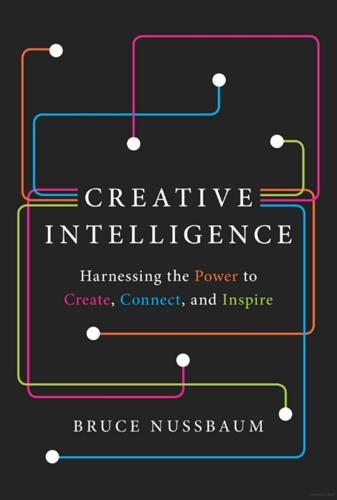
Creative Intelligence: Harnessing the Power to Create, Connect, and Inspire
by
Bruce Nussbaum
Published 5 Mar 2013
Walking alone is an excellent strategy for freeing your mind up so that you’re better able to bring together different areas of knowledge. You can keep a particular challenge in mind as you walk, or you can just look around and see what other inspirations strike you. Steve Jobs was a walker. Mark Zuckerberg is a walker. IDEO cofounder Bill Moggridge talked about walking the High Line in New York to find clarity and creative inspiration. Walking to a local park (or nearby beach, if you’re lucky) or even just around your neighborhood can give you the space you need to start mining the knowledge you’ve accumulated and connecting dots. And finding that neighborhood coffee shop to hang out and just think is important too.
…
m=201106. 70 The Acumen Fund, founded by: “Spring Health,” The Acumen Fund, accessed September 4, 2012, http://www.acumenfund.org/investment/spring-health.html. 70 Polak hopes it can reach: Paul Polak, interviews with the author, 2011 and 2012. 71 In 2012, Jeremy Feinberg: Lisa W. Foderaro, “A New Species in New York Was Croaking in Plain Sight,” New York Times, March 13, 2012, accessed September 4, 2012, http://www.nytimes.com/2012/03/14/nyregion/new-leopard-frog-species-is-discovered-in-nyc.html; Rutgers University press release, March 2012, “Hiding in Plain Sight: Rutgers Scientist Discovers New Frog Species in New York and New Jersey,” http://news.rutgers.edu/medrel/news-releases/2012/03/rutgers-ecologist-di-20120309/, accessed October 18, 2012. 71 According to CNN: Shelby Lin Erdman, “Ribbit! Frog Species Found in New York City Has a Croak of Its Own,” CNN U.S., March 17, 2012, accessed October 18, 2012, http://articles.cnn.com/2012-03-17/us/us_new-york-frog-species_1_frog-species-new-frog-new-species?
…
Salen is helping to remake the face of public education; she has set up three public schools—two in Chicago, one in New York—that team up teachers with game designers to build an exciting learning experience for students; Institute of Play, http://www.instituteofplay.org/about, accessed September 17, 2012. 119 Though scholars are in disagreement: Marilyn Yalom, Birth of the Chess Queen (New York: HarperCollins, 2004), 3; David Shenk, The Immortal Game (New York: Doubleday, 2006), 16–20. 119 “This was a war game”: Shenk, The Immortal Game. 119 According to military strategist: Max Boot, War Made New (New York: Gotham Books, 2006), 122. 120 In 2002, General Tommy Franks: GlobalSecurity.org, http://www.globalsecurity.org/military/ops/ internal-look.htm, accessed September 13, 2012. 120 Internal Look was also used: Mark Mazzetti and Thom Shanker, “U.S.

Ghost Road: Beyond the Driverless Car
by
Anthony M. Townsend
Published 15 Jun 2020
As first drawn by the architects at design powerhouse Kohn Pedersen Fox, it puts AVs on a dedicated elevated platform. (Pedestrians would themselves be channeled to yet another separate guideway on the elevated structure.) While it claims inspiration from New York City’s High Line, this seemingly futuristic scheme is as old as the motor car itself—the Regional Plan Association’s 1924 vision for New York “argued for dense multilevel traffic and transit solutions that separated levels of rail, wheeled vehicles, and pedestrians with upper-level domains of gracious sun-lit plazas and sheltering loggias” (Figure 8-6). Zoom out to the neighborhood scale, and separation still haunts the driverless future.
…
“Roy Amara 1925–2007, American futurologist,” Oxford Essential Quotations, 4th Edition (New York: Oxford University Press, 2016), doi:10.1093/acref/9780191826719.001.0001. 4the introduction of the steering wheel: Dan Albert, Are We There Yet? The American Automobile Past, Present, and Driverless (New York: W. W. Norton, 2019), 19. 4dutiful animals would simply keep following the road: Markus Maurer et al., Autonomous Driving: Technical, Legal, and Social Aspects (Berlin, Germany: Springer, 2016), 2. 5“as if a phantom hand were at the wheel”: “Radio-Driven Auto Runs Down Escort,” New York Times, July 8, 1925. 5a death rate 18 times higher than today: “Car Crash Deaths and Rates, Historical Fatality Trends,” National Safety Council: Injury Facts, accessed January 21, 2019. 5a “traffic control tower”: Albert, Are We There Yet, 248. 5guide wires embedded in the road surface: Evan Ackerman, “Self-Driving Cars Were Just around the Corner—in 1960,” IEEE Spectrum, August 31, 2016, https://spectrum.ieee.org/tech-history/heroic-failures/selfdriving-cars-were-just-around-the-cornerin-1960. 5price tag for guided-vehicle highways: Author’s calculation.
…
Binder et al., Rethinking the Financial Crisis (New York: Russel Sage Foundation, 2012). 164unknown in America before World War II, ballooned: Derek Fidler and Hicham Sabir, “The Cost of Housing Is Tearing Our Society Apart,” World Economic Forum, part of the World Economic Forum Annual Meeting, January 9, 2019, https://www.weforum.org/agenda/2019/01/why-housing-appreciation-is-killing-housing/. 164half the price of a barrel of oil: Tracy Alloway, “Dresdner/Commerzbank Blames Oil Speculators,” Financial Times, August 21, 2009, https://ftalphaville.ft.com/2009/08/21/68101/dresdnercommerzbank-blames-oil-speculators/. 164Most of the dead were farmers: Fredrick Kaufman, Bet the Farm: How Food Stopped Being Food (New York: John Wiley & Sons, 2012). 165“uninterested in material comfort that he barely knew”: Janny Scott, “After 3 Days in the Spotlight, Nobel Prize Winner Is Dead,” New York Times, October 12, 1996, https://www.nytimes.com/1996/10/12/nyregion/after-3-days-in-the-spotlight-nobel-prize-winner-is-dead.html. 165the transit authority’s financial outlook was grim: Ari L. Goldman, “Ridership of Subway since 1917,” New York Times, October 23, 1982, https://www.nytimes.com/1982/10/23/nyregion/ridership-of-subways-since-1917.html. 166marginal costs of rush-hour service into Manhattan’s: William S.
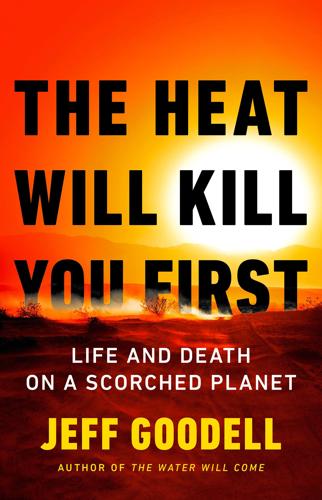
The Heat Will Kill You First: Life and Death on a Scorched Planet
by
Jeff Goodell
Published 10 Jul 2023
Seoul, South Korea, spent $900 million to remove a highway and restore the Cheonggyecheon Stream in the middle of the city, which not only opened up much-needed green space, but also cooled the neighborhood around the stream by as much as ten degrees. To bring reclaimed water into the city to irrigate parks and green spaces, Athens plans to renovate an aqueduct first constructed by Roman Emperor Hadrian in 140 AD. New York City built the High Line, an elevated walk on the west side of the city that offers a leafy escape from urban concrete. Curitiba, Brazil, sometimes celebrated as the greenest city on Earth, has more than fifty square meters of green space per person (in contrast, Buenos Aires has two square meters per person).
…
Oceans of Grain: How American Wheat Remade the World. New York: Basic Books, 2022. Otto, Friedricke. Angry Weather: Heat Waves, Floods, Storms and the New Science of Climate Change. Berkeley/Vancouver: Greystone, 2020. Quammen, David. Breathless: The Scientific Race to Defeat a Deadly Virus. New York: Simon & Schuster, 2022. Quammen, David. Spillover: Animal Infections and the Next Human Pandemic. New York: W. W. Norton & Company, 2012. Raff, Jennifer. Origin: A Genetic History of the Americas. New York: Twelve, 2022. Saladino, Dan. Eating to Extinction: The World’s Rarest Foods and Why We Need to Save Them. New York: Farrar, Straus, and Giroux, 2021.
…
The Lunar Men: Five Friends Whose Curiosity Changed the World. New York: Farrar, Straus and Giroux, 2002. Urrea, Luis Alberto. The Devil’s Highway: A True Story. New York: Little, Brown, 2004. Von Baeyer, Hans Christian. Warmth Disperses and Time Passes: The History of Heat. New York: Modern Library, 1999. Wallace-Wells, David. The Uninhabitable Earth: Life After Warming. New York: Tim Duggan Books, 2019. Weart, Spencer R. The Discovery of Global Warming. Cambridge, MA: Harvard University Press, 2008. Wilson, Ben. Urban Jungle: The History and Future of Nature in the City. New York: Doubleday, 2023. Wilson, Eric Dean.
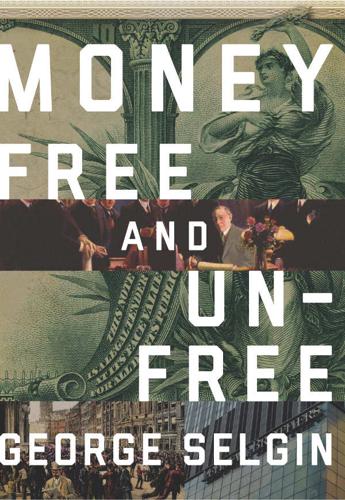
Money Free and Unfree
by
George A. Selgin
Published 14 Jun 2017
Prior to the passage of the 1867 law, Hulburd had remarked that the arguments urged in its favor “would, if carried to their logical conclusion, establish the expediency of requiring redemptions at one central point”—namely, New York (Comptroller of the Currency, Annual Report, 1866: vi). Hulburd continued this theme in his subsequent annual reports. He argued that centralized redemption at New York would be “a healthy reminder to the banks that their circulation is a liability payable on demand” (Comptroller of the Currency, Annual Report, 1867: vii). It would also be a “first step towards specie payments,” an opinion echoed by the New York Clearing House Association (Bankers Magazine, Jan. 1867: 496). As long as remote banks did not have to redeem their notes at New York, Hulburd warned, they would “be tempted to undue expansion by the difficulty of returning their notes for redemption.”
…
In testimony before the House Banking Committee (U.S. Congress 1897: 199), Royall blamed par acceptance for the seasonal glut of notes in New York: “[I]f you put out notes in a backwoods community that are good at par in New York, those notes will leave the backwoods community and go to New York.”25 Nonpar acceptance would make sorting and returning notes profitable and would prevent notes from circulating far from their places of issue and redemption. Royall cited the case of antebellum Virginia notes, which traded at a discount in New York and consequently were seldom taken there. The same sort of localness characterized Canadian bank notes before 1890.26 Nonpar valuation eventually disappeared, as discounts paved the way for improved redemption facilities.
…
With the exception of the 1884 panic, which broke out in May, the crises all took place during the fall harvest; and all, with the exception of the 1893 panic, were triggered by the failure of some important firm or firms, often (though not always) located in New York. The failures led to further tightening of the New York money market, including the market for “call” money used to finance stock purchases, and thence to falling stock prices. Falling stock prices in turn aggravated New York banks’ usual seasonal liquidity problems by making it impossible for them to recall many of their loans, and by triggering suspensions of payment, sometimes in New York only, and sometimes nationwide. On several occasions, suspensions were avoided only because Leslie Shaw, secretary of the treasury from 1902 to 1907, averted them by shifting cash from the Treasury’s coffers to various national banks in anticipation of the harvest-time drain, and took it back again afterwards (Timberlake 1963).
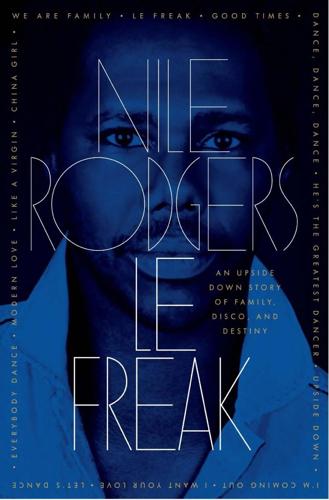
Le Freak: An Upside Down Story of Family, Disco, and Destiny
by
Nile Rodgers
Published 17 Oct 2011
It took the record business a bit longer to pick up on the joke. But eventually they got it. ATLANTIC RECORDS IN NEW YORK had started out as a pure R&B label, with artists like Ray Charles, Ruth Brown, and Aretha Franklin, but by the time of Woodstock, they had many cutting-edge rock acts too, including powerhouse groups like Cream, Led Zeppelin, Yes, and the Rolling Stones. If you were a New York recording artist, you wanted to be on Atlantic or Columbia, the top of the food chain. Through our growing group of connections, we’d made contact through intermediaries with all the New York–based labels. The entire A&R staff of Atlantic Records passed on “Dance, Dance, Dance” because they didn’t believe the song would play well on the radio, owing to its longer-than-average breakdown.
…
Downtown L.A. felt just like midtown New York, where our journey had originated days before. It was as if I’d just awakened from a cross-country dream and found myself in the same place I’d started. Even the summertime temperature was the same. I’d soon learn that the bus station that welcomed us to L.A. was in a section of town called Skid Row. No wonder it felt so much like home: It was cramped, smoggy, and teeming with the same urban detritus—bums, hookers, runaways, cabs, newspaper boys, policemen, buses, and screaming fire engines—I knew so well from New York. There was the same ratio of derelicts to working people as in the Port Authority bus terminal we’d just left behind.
…
The always dependable Graham said, “You’ll never guess who showed up at my house last night.” “Who?” “Bang.” “You’ve got to be fucking kidding me.” “No, he believes you’re here in New York.” “Graham, tell me where he is. He’s fucking crazy.” Bang had given Graham the dead pawnbroker’s wristwatch. Maybe Graham was afraid, or he just wanted to honor a deal, so all he would say was, “He’s in the most obvious place.” My mother got it right away. She knew Bang had never been to New York. Harlem was the one place he’d blend in. Knowing he always had to have the best, he was most likely at the Hotel Theresa. In the interest of protecting Graham, she called the front desk herself.
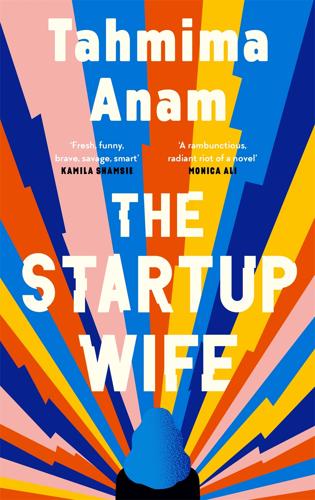
The Startup Wife
by
Tahmima Anam
Published 2 Jun 2021
I’ve been here dozens of times, but it’s different now: Gaby takes our coats and asks if we want anything to drink, and then he glides easily around the kitchen, opening drawers and taking out glasses. “We should invite people over more,” I say to Cyrus. “I love you,” Cyrus replies. We sit by the window with all the New York lights before us. Jules lives by the High Line now, just a few blocks south of Utopia, with bouquet after bouquet of buildings on either side. Gaby hands me a glass, and the wine goes down slow and warm. Again I feel a surge of desire for Cyrus; I study his face to see if he’s with me, but he’s looking at something on the other side of the room.
…
Stein’s lab, with a stupid wave and a promise to keep in touch. When I tell my parents, I try to cast it in a better light—I tell them it’s a little break, more like a sabbatical: a chance for technology to catch up with my ideas—and within weeks, Cyrus and I move to New York and, because there is nowhere else to go, into my parents’ half-converted basement. I had neglected to think about where we were going to live in New York, and Cyrus never thinks about things like that. It isn’t that he doesn’t care about where we are going to sleep, it’s more that things always seem to work out for him. I feel like I’m living with Inspector Gadget. Most of the time it’s less exhausting to just see what fate will throw his way—in this case, my parents and their basement.
…
I can’t help it—a small frown crosses my face, and before I can shake it off, Destiny has seen it. “You’re judging me.” “No, of course not. I was just—I’m surprised.” “It was when I first moved to New York, and it was only a few months. I’d run out of money, I didn’t know anyone.” She hangs her head. “I saw some shit, did some shit. Some shit was done to me.” She looks out the window onto Tenth Avenue, and there is an old woman on a mobility scooter and a young woman on an electric scooter, and they glance at each other and smile at the exact same time. “I love New York,” Destiny says. “Every single person in this city is in love with this city. They might hate it, but they’re also a little bit in love.

Artificial Unintelligence: How Computers Misunderstand the World
by
Meredith Broussard
Published 19 Apr 2018
We pitched again, on the small stage in the main space this time. The pitches were livestreamed. At least a dozen people from other Startup Buses tuned in online. SPACES, a New York team that was working on a virtual-reality app, got up on stage and thanked the judges. “We are grateful for the opportunity, but our presentation contains proprietary material, and we are going to decline to pitch,” said John Clinkenbeard, the team CEO. The room erupted. Edwin Rogers started whooping, “New York bus! New York bus! New York bus!” The team, which included Dre Smith of the virtual dance party, had secured $25,000 in funding from an outside investor.
…
Computer Science Curricula 2013: Curriculum Guidelines for Undergraduate Degree Programs in Computer Science. New York: ACM Press, 2013. http://dl.acm.org/citation.cfm?id=2534860. Alba, Alejandro. “Chicago Uber Driver Charged with Sexual Abuse of Passenger.” New York Daily News, December 30, 2014. http://www.nydailynews.com/news/crime/chicago-uber-driver-charged-alleged-rape-passenger-article-1.2060817. Alcor Life Extension Foundation. “Official Alcor Statement Concerning Marvin Minsky.” Alcor News, January 27, 2016. Alexander, Michelle, and Cornel West. The New Jim Crow: Mass Incarceration in the Age of Colorblindness. Revised ed. New York: New Press, 2012. Ames, Morgan G.
…
Anderson published “Towards a Sociology of Computational and Algorithmic Journalism” in 2012,15 in which he united Schudson’s four approaches to studying news with ethnographic insights gained from fieldwork at a Philadelphia newspaper between 2007 and 2011. Nikki Usher contributed additional ethnographic context with her book Interactive Journalism: Hackers, Data, and Code,16 which is based on both fieldwork and interviews with data journalists at the New York Times, the Guardian, ProPublica, WNYC (New York Public Radio), AP, National Public Radio (NPR), and Al Jazeera English. Cindy Royal’s work on journalists producing code17 was important for understanding how journalists used code inside the newsroom, and it also prompted understanding of how journalism schools could integrate computational skills into their curricula.
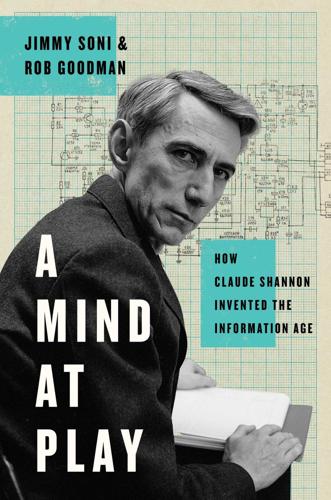
A Mind at Play: How Claude Shannon Invented the Information Age
by
Jimmy Soni
and
Rob Goodman
Published 17 Jul 2017
Deaf Subjects: Between Identities and Places. New York: New York University Press, 2009. Burke, Colin B. It Wasn’t All Magic: The Early Struggle to Automate Cryptanalysis, 1930s–1960s. United States Cryptologic History, Special Series, Volume 6. Center for Cryptologic History. Washington, DC: National Security Agency, 2002. Burks, Frances Williston. Barbara’s Philippine Journey. Yonkers-on-Hudson, NY: World Book, 1921. Bush, Vannevar. “As We May Think.” Atlantic, July 1945. ———. Pieces of the Action. New York: Morrow, 1970. Carter, Samuel. Cyrus Field: Man of Two Worlds. New York: Putnam, 1968. Cerny, Melinda.
…
Dark Hero of the Information Age: In Search of Norbert Wiener, The Father of Cybernetics. New York: Basic, 2005. Cook, Gareth. “The Singular Mind of Terry Tao.” New York Times, July 24, 2015. Coughlin, Kevin. “Claude Shannon: The Genius of the Digital Age.” Star-Ledger (New Jersey), February 28, 2001. Crawford, Matthew. Shop Class as Soulcraft: An Inquiry into the Value of Work. New York: Penguin, 2010. Crow, James F. “Shannon’s Brief Foray Into Genetics.” Genetics 159, no. 3 (2001): 915–17. Davenport, C. B. Naval Officers: Their Heredity and Development. Washington, DC: Carnegie Institution of Washington, 1919. Dean, Debra. The Madonnas of Leningrad. New York: Harper Perennial, 2007.
…
Scientific revolutions are rarely unopposed. Shannon’s work, too, was coldly received in some quarters. The first major criticism, and the one with the most edge to it, came from the mathematician Joseph L. Doob. Brought from the Midwest to New York at the age of three, he was marked out as a bright student early and enrolled in New York’s Ethical Culture Fieldston School. The school was unique in New York society at the time: its founder’s belief that the poor deserved the highest-caliber education was radical, but the school’s academic reputation also drew the well-heeled. Over the twentieth century, it would produce such alumni as Marvin Minsky, a pioneer of artificial intelligence and future colleague of Shannon’s, and J.
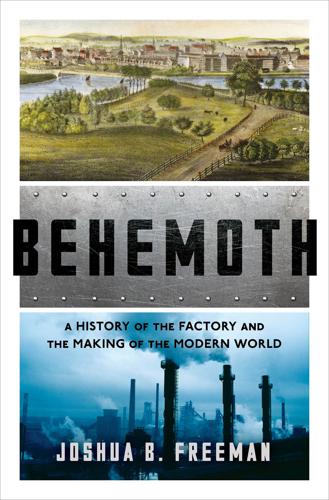
Behemoth: A History of the Factory and the Making of the Modern World
by
Joshua B. Freeman
Published 27 Feb 2018
See names of specific locations New Lanark, Scotland, 8, 13, 21, 24, 26 New Masses (journal), 172 New Orleans (steamboat), 82–83 New York City Edison factory, 106 strikes, 115 world’s fairs, 85, 88, 215, 351n, 363n New York Herald (newspaper), 101 New York (state). See names of specific locations New York Times (newspaper), 194, 200 New York Times Sunday Magazine, 217 New York World’s Fair (1939), 215, 363n Newcastle, England, 96 Newhouse, Edward, 161 Newport News Shipbuilding and Drydock Company, 186 New-York Daily Tribune (newspaper), 58–59, 66 Niagara Falls Power Company, 150 Nike, 273, 292–94, 296, 304, 307, 396n Nishimura, Koichi, 293 Nissan, 248 Nizhny Novgorod, Soviet Union, 171, 190–93, 199 Nizhny Tagil, Soviet Union, 201, 212, 374n, 379n Nkrumah, Kwame, xii, 256 NKVD (formerly GPU), 203–4 nonfactory production, 4–6, 9, 32 North American Aviation, 238 North River (steamboat), 82–83 Nottingham, England, 7–8, 328n Nottinghamshire, England, 36 Nová Ostrava, Czechoslovakia, 249 Nowa Huta, Poland, 249, 251–65, 253, 255, 314, 387n Oastler, Richard, 26 O’Hare, Kate Richards, 145–46 Ohio.
…
Leo Marx, The Machine in the Garden: Technology and the Pastoral Ideal in America (New York: Oxford University Press, 1964), 150–58, 163–64; Andrea Sutcliffe, Steam: The Untold Story of America’s First Great Invention (New York: Palgrave, 2004); Walter Johnson, River of Dark Dreams: Slavery and Empire in the Cotton Kingdom (Cambridge, MA: Harvard University Press, 2013), 73–96; Edmund Flagg, The Far West: or, A Tour Beyond the Mountains, vol. 1 (New York: Harper & Brothers, 1838), 17–18; John F. Kasson, Civilizing the Machine: Technology and Republican Values in America, 1776–1900 (New York: Penguin, 1977), 141; Robert W. Rydell, All the World’s a Fair, 15–16. 4.Walt Whitman, Two Rivulets: Including Democratic Vistas, Centennial Songs, and Passage to India (Camden, NJ: [Walt Whitman], 1876), 25–26; Marx, Machine in the Garden, 27.
…
Hounshell, From the American System to Mass Production, 260–61; Olsen and Cabadas, The American Auto Factory, 61, 63, 67, 70–71; New York Times, Apr. 22, 1923. 43.Kahn also helped design both the General Motors and Ford exhibitions at the 1939 New York World’s Fair. John E. Findling, ed., Historical Dictionary of World’s Fairs and Expositions, 1851–1988 (New York: Greenwood Press, 1990), 22; Nevins and Hill, Ford: Expansion and Challenge, 1–2; Grandin, Fordlandia, 2; Richard Guy Wilson, Dianne H. Pilgrim, and Dickran Tashjian, The Machine Age in America 1918–1941 (New York: The Brooklyn Museum and Harry N. Abrams, 1986), 27; Nelson, Industrial Architecture of Albert Kahn, Inc., 97; Hildebrand, Designing for Industry, 206, 213; Works Progress Administration, Michigan, 286, 292–93; New York Times, Apr. 9, 1972; U.S.

The Enablers: How the West Supports Kleptocrats and Corruption - Endangering Our Democracy
by
Frank Vogl
Published 14 Jul 2021
One lawyer advised against moving funds through US banks as they are more highly regulated than others. An excerpt of the interviews was shown on CBS television’s 60 Minutes show.6 Mark Koplik, partner in the New York law firm of Henderson & Koplik LLC, not knowing that he was being filmed, stated: “We run the country—we make the laws and when we do so we make them in ways that’s advantageous to the lawyers.” The fees that kleptocrats and corrupt international financial organizations offer to lawyers are sometimes too tempting. For example, in January 2019, the large New York–headquartered law firm of Skadden, Arps, Slate, Meagher & Flom LLP agreed that it should have registered certain of its current and former partners under the Foreign Agents Registration Act (FARA) of 1938 when representing the government of Ukraine led by President Viktor Yanukovych.
…
That generation produced numerous other leaders of finance with no less a passion for serving the broader public interest. Felix Rohatyn was a successful financier at the Lazard Freres investment bank who pushed his deal-making aside and jumped into action when New York City faced bankruptcy in 1975. He chaired the Municipal Assistance Corporation with no pay to deploy his management and negotiating skills. Another New York investment banker, Robert Roosa, a partner at Brown Brothers Harriman, had played a key role at the Treasury in the Kennedy Administration, staving off a financial crisis with the creation of so-called “Roosa bonds.” Alongside his banking activities, he was a highly engaged director of the Council on Foreign Relations and a trustee of the Rockefeller Foundation.
…
See Richard McGregor’s “Xi Jinping: The Backlash,” a Lowry Institute Paper, published by Penguin Specials, 2019, and papers noted previously here by Professor Andrew Wederman. 25. New York Times article by Alexandre Stevenson from Hong Kong, July 2020, headline: “China Is Dismantling the Empire of a Vanished Tycoon.” Also see the Financial Times, January 31, 2017, headline: “Chinese Billionaire Abducted from Hong Kong—Xiao Jianhua, a Financier with Links to the Xi Family, Taken to Mainland China.” 26. Bloomberg News reported on Xi Jinping’s family fortune in June 2012. That story was built upon with an in-depth article by journalist Michael Forsythe reported on June 18, 2014, in the New York Times: “As China’s Leader Fights Graft, His Relatives Shed Assets.”
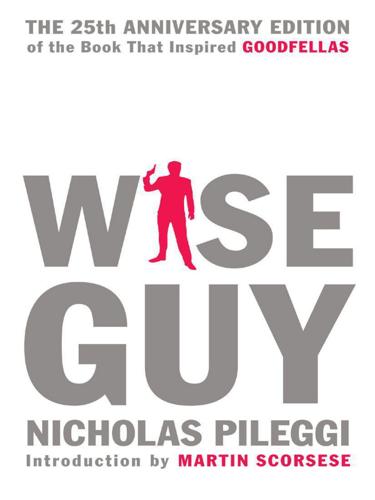
Wiseguy: The 25th Anniversary Edition
by
Nicholas Pileggi
Gordon, 165–66 Linda (Hill’s girlfriend), 126–38 Bahamas vacation of, 133 Bridal Land job of, 127–28 Hill’s break with, 146 Hill’s fights with, 130, 136, 138 Hill’s first meeting with, 126, 129 Karen Hill as viewed by, 129, 133 Karen Hill’s discovery of, 131–33 Karen Hill’s reactions to, 132–38 lonely for Hill, on holidays, 130–31 Riker’s Island visited by, 136, 137 suspected as undercover cop, 126–28 wiseguys as viewed by, 130 liquor, hijacking of, 90 liquor-distribution routes, 30–31, 41–42 loan-sharking, 10, 22, 37–38, 107 Lucchese, Gaetano “Three Fingers Brown” (Tommy Brown), 30–31, 41–42 Azores owned by, 41 power of, 41–42 Lucchese crime family, 37, 84 Hill’s testimony against members of, 257 strong-arm work in, 30–31 Vario’s role in, 10 Luciano, Lucky, 11 Lufthansa heist, 1, 2, 181–210 alarm system in, 185, 187 booty in, 181, 182 Burke briefed on, 183–84 Burke’s cut in, 213 crew chosen for, 184–85 Edwards murdered after, 193–95 employees detained in, 185–88 eyewitness accounts of, 200–01 Hill as informant in, 235–36, 240–41, 256–58 Hill’s arrest after, 211–18 Hill’s discovery of, 189 Hill’s role in, 181–84 Krugman murdered after, 190–90, 197–98 McMahon murdered after, 210 Manri murdered after, 210 media coverage of, 199 police surveillance after, 195, 200, 201, 212–19 success of, 188, 189 van used in, 194 Werner convicted after, 209 Werner implicated in, 202–06 Werner’s lead in, 181–82, 184, 195 witnesses murdered after, 206–10 M McClellan, John, 67 McConnach, Angelo (Sonny Bamboo), 91 McDonald, Edward A., 199–210, 231, 235–37 DeSimone murder and, 206–07 Eaton murder and, 207 Edwards murder and, 206 eyewitnesses and, 200 family of, 199–200 Hill as prime witness for, 235–37, 240–41 Hill’s cooperation with, 247–53 inside job detected by, 202 Karen Hill threatened by, 247 Mann’s deal with, 231 rigged basketball games, 255–56 surveillance methods of, 200–01 Werner’s conviction and, 208–10 Werner tracked by, 202–06 McMahon, Bobby “Frenchy”: in Air France heist, 96–102 in Lufthansa heist, 185 murder of, 210 Mafia, first acknowledged by Hoover, 36 Manhattan Foundling Home, 84 Mann, Danny, 219–29 Germaine arrested by, 228 informant and, 219–22, 228, 240 McDonald’s deal with, 231 on mob hierarchy, 223–24 report prepared by, 226 wiretaps ordered by, 222, 225–26 Manri, Joe “Buddha,” 184 murder of, 209 Manzo, Frank “Frankie the Wop,” 31, 52 Hill’s testimony against, 257 newspaper account of, 70 Marcantonio, Vito, 42 Maxwell’s Plum, 148 Mazzei, Paul: drug dealing of, 156, 171, 217, 226–28 Hill’s testimony against, 256 in Lewisburg, 153, 156 Mazzolla, Johnny: counterfeit bills cashed by, 17–18 Mazzolla, Johnny (cont.) hit on son of, 113 Mele, Angelo, 151 Menna, Frank, 205 Michael’s Steak Pub, 126 Midnight Rose’s (candy store), 30 mob, see organized crime Montemurro, Monte, 97 Montemurro, Raymond, 97, 98, 132 Moo Moo Vedda’s (dress factory), 191 Morton, Tommy, 43–44 Mother’s Day, as big-money holiday, 17 Mount Loretto Reformatory, 85 “Muldoons,” 18 Murder Incorporated, 8, 30 murders, 113–23 of Batts, 115–18, 196 of Burke’s best friend, 114 enjoyed by wiseguys, 115 everyone kept in line by, 113–14 first, by Burke’s son, 113 Kennedy Airport hijackings and, 82, 89, 120–23 after Lufthansa heist, 190–95, 197, 206–10, 257 of Mazzolla’s son, 113–14 of Mickey Burke’s ex-boyfriend, 83–84 of Spider, 119 Murray, John, 186 N Nalo, Bobby, 173 Nassau County jail, 71 neighborhoods, mob-controlled: street crime in, 34–36 wiseguys protected in, 33 see also Brownsville–East New York, N.Y. Newman, Al, 106, 112 Hill’s bond carried by, 148 New York Daily News, 70, 103 New York Times, 30, 103 New York Times Magazine, 48 New York Tribune, 29 numbers racket, 14–15, 49 O Oddo, Richie, 232–33, 240 Off-Track Betting (OTB), 56 Orena, Little Vic, 108 organized crime: first acknowledged by Hoover, 36 first multiethnic alliances in, 30 government investigations into, 36, 67 protocol in, 223–24 Organized Crime Strike Force, 1 P Palm Shore Club, 60 Pantaleone, Santa, 7 Perla, Rocco, 174–79, 256 Perla, Tony, 173–79 Hill’s testimony against, 256 Perry, Rich, 55 Pine, Joe, 151 plainclothesmen, 19, 107 point-shaving schemes, see Boston College basketball point-shaving scheme police: arbitrary beatings by, 32 cigarette smuggling business and, 47 gambling and, 11, 19–20 payoffs to, 8, 50–51, 82, 106 unnecessary violence and, 8 Wekar’s bookmaking operation and, 105–06 wiseguys as viewed by, 106–07 policy racket, 14, 49 politicians, 53, 154–55 payoffs to, 51 Presto Pizzeria, 10, 12, 23, 38, 40, 132 Prisons, U.S.
…
or visit us online to sign up at eBookNews.SimonandSchuster.com Books by Nicholas Pileggi Casino Wiseguy Blye, Private Eye Simon & Schuster 1230 Avenue of the Americas New York, NY 10020 www.SimonandSchuster.com Copyright © 1985 by Pileggi Literary Properties, Inc. Introduction copyright © 2011 by Martin Scorsese All rights reserved, including the right to reproduce this book or portions thereof in any form whatsoever. For information address Simon & Schuster Subsidiary Rights Department, 1230 Avenue of the Americas, New York, NY 10020 This Simon & Schuster hardcover edition September 2011 SIMON & SCHUSTER and colophon are registered trademarks of Simon & Schuster, Inc.
…
The low, flat, sun-filled streets offered only the smallest houses and tiniest backyards, but the first- and second-generation Italians and Jews who fiercely wanted to own those houses worked nights in the sweatshops and factories spotted throughout the area after they had finished their day-time jobs. In addition to the thousands of hardworking new arrivals, the area also attracted Jewish hoods, Black Hand extortionists, Camorra kidnappers, and wily Mafiosi. In many ways Brownsville–East New York was a perfect place for the mob. There was even a historical ambience. At the turn of the century the New York Tribune described the section as a haven for highwaymen and cutthroats and said that it had always been a “nurturing ground for radical movements and rebels.” With Prohibition, the area’s proximity to the overland liquor routes from Long Island and the countless coves for barge landings along Jamaica Bay made it a hijacker’s dream and a smuggler’s paradise.

Easy Money: Cryptocurrency, Casino Capitalism, and the Golden Age of Fraud
by
Ben McKenzie
and
Jacob Silverman
Published 17 Jul 2023
Bank Raises Questions,” New York Times, November 23, 2022, https://www.nytimes.com/2022/11/23/business/ftx-cryptocurrency-bank.html. 234 SBF was arrested in the Bahamas: CFTC complaint against FTX, United States District Court (Southern District of New York), December 21, 2022, https://www.cftc.gov/media/8021/enfftxtradingcomplaint122122/download. 237 In January 2023: Giulia Heyward, “Cryptocurrency giant Coin-base strikes a $100 million deal with New York regulators,” NPR, January 4, 2023, https://www.npr.org/2023/01/04/1146915338/coinbase-settlement-cryptocurrency-exchange-new-york-dfs. CHAPTER 13: PREACHER’S FATHER 243 a story about his dad, Hal: Multiple interviews with David Henson in 2022; reporting trip to Henson family and church in Hendersonville, North Carolina, November 2022; screenshots, texts, bank statements, and other documents about Hal Henson’s crypto purchases provided by David Henson. 247 addiction services: Interview with Lin and Aaron Sternlicht, Fall 2022.
…
The FBI soon picked him up and flew him to New York, where he would appear in court, beginning what could be a long legal battle. The Southern District of New York’s unsealed indictment—it had originally been filed on December 9—revealed eight charges, including wire fraud, conspiracy, and violation of campaign finance laws. Sam stood accused of funneling donations to politicians via people acting as cutouts. The criminal charges had the potential to send him to prison for the rest of his life. Prosecutor Damian Williams, the US attorney for the Southern District of New York, didn’t mince words, calling it “one of the biggest financial frauds in American history.”
…
multi-level marketing scheme (MLM) Murdoch, Lachlan Mushegian, Nikolai Musk, Elon Nadkarni, Tushar Nailwal, Sandeep Narrative Economics (Shiller) National Bureau of Economic Research National Cryptocurrency Enforcement Team National League Championship Series naturally occurring Ponzi schemes Neuner, Ran New Republic Newsome, Jim New York magazine New York Stock Exchange (NYSE) New York Times Novogratz, Mike Nuevas Ideas O’Leary, Kevin Omnionn on-chain investigators Ongweso, Edward, Jr. Open Secrets Other People’s Money (Cressey) over-the-counter trades (OTC) Paradise Papers Peirce, Hester Peña, Victor Peterson, Mike Pham, Caroline Piancey, Cas Pierce, Brock Piper, Kelsey poker, online Ponzi schemes Powell, Jesse Prager Metis private money Professional and Amateur Sports Protection Act proof of reserves proof of stake proof of work Pryor, Mark public key encryption quantitative easing (QE) the rake Ranger, Matt Rauda, Nelson Ray, John J., III Razzlekhan (Heather Morgan) real money remittances Republican Party Reserve Primary Fund Salame, Ryan sale-and-repurchase agreements (repos) Sam’s Bill.
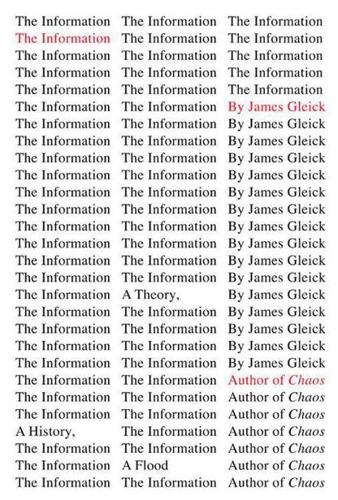
The Information: A History, a Theory, a Flood
by
James Gleick
Published 1 Mar 2011
London: Longman, Green, Longman, Roberts, & Green, 1864. ———. Charles Babbage and His Calculating Engines: Selected Writings. Edited by Philip Morrison and Emily Morrison. New York: Dover Publications, 1961. ———. The Analytical Engine and Mechanical Notation. New York: New York University Press, 1989. ———. The Difference Engine and Table Making. New York: New York University Press, 1989. ———. The Works of Charles Babbage. Edited by Martin Campbell-Kelly. New York: New York University Press, 1989. Babbage, Henry Prevost, ed. Babbage’s Calculating Engines: Being a Collection of Papers Relating to Them; Their History and Construction.
…
McLuhan, Marshall. The Mechanical Bride: Folklore of Industrial Man. New York: Vanguard Press, 1951. ———. The Gutenberg Galaxy. Toronto: University of Toronto Press, 1962. ———. Understanding Media: The Extensions of Man. New York: McGraw-Hill, 1965. ———. Essential McLuhan. Edited by Eric McLuhan and Frank Zingrone. New York: Basic Books, 1996. McLuhan, Marshall, and Quentin Fiore. The Medium Is the Massage. New York: Random House, 1967. McNeely, Ian F., with Lisa Wolverton. Reinventing Knowledge: From Alexandria to the Internet. New York: Norton, 2008. Menabrea, L. F. “Sketch of the Analytical Engine Invented by Charles Babbage.
…
Sloane and Aaron D. Wyner (New York: IEEE Press, 1993), 455. ♦ “NOWE USED FOR AN ELEGANT WORDE”: Thomas Elyot, The Boke Named The Governour (1531), III: xxiv. ♦ “MAN THE FOOD-GATHERER REAPPEARS”: Marshall McLuhan, Understanding Media: The Extensions of Man (New York: McGraw-Hill, 1965), 302. ♦ “WHAT LIES AT THE HEART OF EVERY LIVING THING”: Richard Dawkins, The Blind Watchmaker (New York: Norton, 1986), 112. ♦ “THE INFORMATION CIRCLE BECOMES THE UNIT OF LIFE”: Werner R. Loewenstein, The Touchstone of Life: Molecular Information, Cell Communication, and the Foundations of Life (New York: Oxford University Press, 1999), xvi
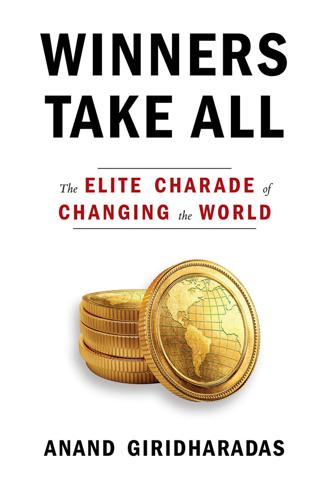
Winners Take All: The Elite Charade of Changing the World
by
Anand Giridharadas
Published 27 Aug 2018
Finally, he landed the Ford job, overseeing a multibillion-dollar investment portfolio. In keeping with his official position and his own joyous magnetism, his careful irreverence, his attention to everyone in a room, he soared into the upper echelons of New York society. He was a member of the Council on Foreign Relations. He was on the boards of the city’s ballet, of Rockefeller Philanthropy Advisors, of Friends of the High Line. He began to be first-name-dropped. You know, Darren was saying the other day…Darren and I were on a panel, and…One day he would be at a White House state dinner for the Chinese president; another day he would be in Silicon Valley helping Mark Zuckerberg reflect on his giving.
…
As a foreign correspondent and columnist for The New York Times from 2005 to 2016, he filed dispatches from Italy, India, China, Dubai, Norway, Japan, Haiti, Brazil, Colombia, Nigeria, Uruguay, and the United States. He has also written for The Atlantic, The New Yorker, and The New Republic. He is a visiting scholar at New York University, an on-air political analyst for NBC News, and has spoken on the main stage of TED. His writing has been honored by the Society of Publishers in Asia, the Poynter Fellowship at Yale, and the New York Public Library’s Helen Bernstein Award. Born in Cleveland, Ohio, he lives in New York City. What’s next on your reading list?
…
Published in the United States by Alfred A. Knopf, a division of Penguin Random House LLC, New York, and distributed in Canada by Random House of Canada, a division of Penguin Random House Canada Limited, Toronto. www.aaknopf.com Knopf, Borzoi Books, and the colophon are registered trademarks of Penguin Random House LLC. Library of Congress Cataloging-in-Publication Data Names: Giridharadas, Anand, author. Title: Winners take all : the elite charade of changing the world / by Anand Giridharadas. Description: New York : Alfred A. Knopf, 2018. | “A Borzoi book.” | Includes bibliographical references and index.
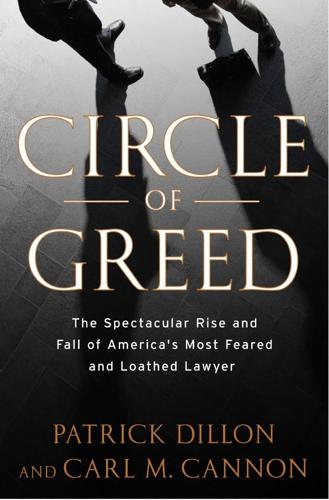
Circle of Greed: The Spectacular Rise and Fall of the Lawyer Who Brought Corporate America to Its Knees
by
Patrick Dillon
and
Carl M. Cannon
Published 2 Mar 2010
Jones: Gretchen Morgenson and Ken Belson, “The Sisterhood Judging WorldCom,” New York Times, January 30, 2005. Denise L. Cote: Ibid. they retained the mind-set: William S. Lerach, interview by PD, April 18, 2008. Sean Coffey: John P. “Sean” Coffey, interview by CMC, February 24, 2009. studied diligently: John P. “Sean” Coffey, interview by CMC, February 20, 2009. never miss a McCall fund-raiser: Shaila K. Dewan, “Accountants Gave to McCall After Getting State Contract,” New York Times, August 23, 2002. 367 would New York be ousted: William S. Lerach, interview by PD, April 18, 2008. 367 “He might as well”: Ibid. “The New York State Common”: In re: WorldCom Litigation, U.S.
…
The next day the attorneys appeared before the panel of federal judges who would decide the venue; several made their cases as to why they should be included in the class action and why it should be tried in New York and not San Diego. One of them, a young attorney from the venerable New York firm of Sullivan & Cromwell, representing Goldman Sachs, told the panel, “There is not a judge anywhere in San Diego sufficiently sophisticated enough to try this complex financial matter.” This reasoning did not win the day. The judges voted to send the case where the defendant company resided—San Diego. The day before, Mel Weiss had all but predicted that outcome, even while arguing for a change of venue to New York. In fact, everything that Weiss had foretold unfolded just as he had said it would.
…
Alan Salpeter, Fischel’s attorney, confidently told the ABA that he intended “to prove every word” in Fischel’s legal complaint. In New York, Weiss dealt with the brushfire Lerach had started at the Turtle Creek Mansion in Dallas by publicly elevating Pat Hynes to the stature of “name partner,” one of the few women so honored by a major American law firm. Thus did Milberg, Weiss, Bershad & Lerach, with its eighty-two attorneys in New York and San Diego, officially become Milberg, Weiss, Bershad, Hynes & Lerach. “She’s a superstar as a lawyer,” Mel Weiss told Crain’s New York Business. Lerach toed the public line, telling his colleagues that he was pleased Mel Weiss had elevated such an upstanding attorney for the New York office—and trying to sound sincere when he said it.

USA's Best Trips
by
Sara Benson
Published 23 May 2010
* * * Across town, the Meatpacking District, once a bastion of seedy leather bars, cow carcasses and prostitutes, has been aggressively gentrified over the past decade. It is now home to chic eateries, even chicer boutiques, and perhaps the most popular new attraction in the city: The High Line. Inspired by the Promenade Plantee in Paris, this is the first elevated park in New York. A wonder of urban reinvention, the High Line was an abandoned railway that ran from the meatpacking plants to the Westside rail yard. Locals banded to turn the tracks into much-needed public space in this section of Manhattan. It runs north from Gansevoort St to West 20th and is marvelous in every way.
…
DO Art Deco Gift Shop Browse Bakelite jewelry and reproduction posters, then pick up an iPod walking tour and map. 305-531-3484; www.mdpl.org; 1001 Ocean Dr, Miami, FL; admission free, tour prices vary; 9:30am-7pm Daytona 500 Experience A shrine to all things Nascar; make reservations for race-car ride-alongs. 386-681-6800; www.daytona500experience.com; 1801 W International Speedway Blvd, Daytona, FL; adult/child from $25/20; 10am-6pm, with seasonal variations; Five Borough Eating Tour Get a personal tour of New York’s hidden culinary wonders with Dave the cabbie in his vintage checkered cab. www.famousfatdave.com; New York, NY; tours from $200 Flagler Museum Tour this elaborate 55-room Jazz Age mansion (“more wonderful than any palace in Europe,” one newspaper opined), completed in just 18 months as a gift from Henry Flagler for his bride. 561-655-2833; www.flaglermuseum.us; 1 Whitehall Way, Palm Beach, FL; adult/youth $18/10; 10am-5pm Tue-Sat, noon-5pm Sun Hasty Pudding Theatricals A drag-tastic musical hidden deep within Harvard’s hallowed halls. 617-495-5205; www.hastypudding.org; 12 Holyoke St, Cambridge, MA; Feb & Mar High Line New York’s first elevated park winds its way through Manhattan’s West Side. www.thehighline.org; entrances at Gansevoort St, West 20th St, New York, NY; admission free; 7am-8pm winter, 7am-10pm summer HL Hunley A working underwater archaeological site of a Civil War submarine with a museum and gift shop. 877-448-6539; www.hunley.org; 1250 Supply St, N Charleston, SC; admission $12; 10am-5pm Sat, noon-5pm Sun; Kennedy Space Center An all-in-one science museum, theme park and astronaut tribute.
…
Dave, a real cabbie, will pick you and your friends up in his “Wheels of Steel” and take you to the forgotten corners of the city in search of delicacies such as the famed hot dog at the very first Nathan’s, in Coney Island (local legend has it this was the home of the first ever hot dog), the first pizza available “by the slice” (now a New York gastronomic stalwart), at Patsy’s in Harlem, or even more esoteric firsts such as the “first American fried chicken with Spanish flavor,” in Washington Heights. Whatever that means, it was great chicken! Along the way, Dave shares bits of New York history as you travel from seafood joints on City Island to the Bronx’s own “Murder Burger” with a nightcap at the Italian bakeries of Greenwich Village. This unique experience is one of the best times we’ve ever had in New York City, and trust us when we tell you we’ve had some pretty good times there
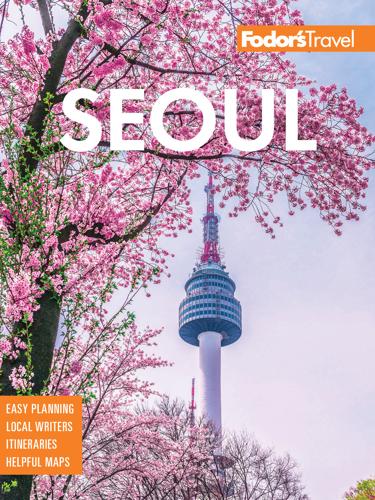
Fodor's Seoul
by
Fodor's Travel Guides
Published 29 Nov 2022
The station’s Central Hall has a striking glass ceiling worth admiring, and the former barbershop has been converted to a small exhibition center showcasing the building’s restoration. E1 Tongil-ro, Jung-gu P0507/1416–3501 wwww.seoul284.org CClosed Mon. mSeoul Station. Seoullo 7017 CITY PARK | Modeled after New York’s High Line, Seoullo 7017 is a park constructed from an overpass. Built in 1970, the overpass was shut down after being deemed unsafe for cars and after some renovation, opened to the public as a green space in 2017. A little over half a mile, the park is the perfect place for visitors to stroll, taking in panoramic views overlooking Seoul Station and admiring the 20,000 plants that grow here.
…
Increasing rent prices as well as the opening of the Gyeongui Line Forest Park to its east and Mangwon Market to its north have revitalized Yeonnam-dong and Mangwon-dong respectively. Both have become hotbeds of small bookshops, cozy cafes, and trendy restaurants worthy of attention. s Sights HGyeongui Line Forest Park CITY PARK | FAMILY | Often likened to New York City’s High Line, the Gyeongui Line Forest Park is a narrow green space that stretches 6.3 km (3.9 miles) over train tracks that once led to North Korea. Train service was suspended in 1951 after the two Koreas divided and the area was mostly urbanized until 2009, when the idea to build the park was greenlit.
…
Known for: crispy chicken; divey, hole-in-the-wall chic vibe; tangy dipping sauce. DAverage main: ₩17,000 E38-1, Hoenamu-ro, Yongsan-gu, Itaewon P02/790–7737 mNoksapyeong Station. Gino’s NY Pizza $ | PIZZA | Opened by New York transplant Eugene Kim in 2015, Gino’s NY Pizza serves authentic New York–style pizza pies. Signature pies include the Brooklyn’s Best (Italian sausage, red onions, parmesan, and fresh basil on plum tomato sauce) and the New York Supreme made with roasted garlic. Known for: garlic knots; weekend favorite; “Brooklyn’s Best Pizza”. DAverage main: ₩19,000 E46, Noksapyeong-daero 40-gil, Yongsan-gu, Itaewon P0507/1403–2234 wwww.instagram.com/ginospizza mNoksapyeong Station.
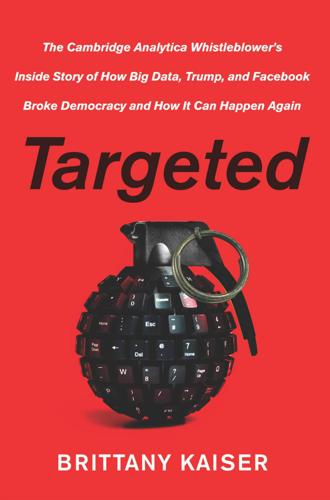
Targeted: The Cambridge Analytica Whistleblower's Inside Story of How Big Data, Trump, and Facebook Broke Democracy and How It Can Happen Again
by
Brittany Kaiser
Published 21 Oct 2019
The British were polite to a fault, which meant that you never knew whether they truly liked you or whether they had any intention of doing business with you. What I loved about America, and what I loved about New York City in particular, which is where Alexander and I went to meet Bekah, was that, as in London, everyone there was so involved in their important lives that they were too busy to stop and talk. That kind of self-preoccupation might have bothered some people, but, to me, New York and London shared an urgency I found appealing. I’d spent hardly any time in New York City before—just weekends here and there when I was in high school, and friends and I would take the train down for a holiday—but now I was reminded of how the city worked: people rushed by, completely absorbed in their own concerns, not making eye contact with strangers on a bus or a train.
…
Alexander had an ulterior motive for arranging the meeting for so late in the workday. He liked Bekah, but he had not come to see her. His purpose was to visit with Brandon Muir, the executive director of a nonprofit Bekah funded. Alexander was not fond at all of Bekah’s project. Called Reclaim New York, it had been created ostensibly to increase government transparency in New York State. Steve Bannon had founded it with about $3 million in Mercer Foundation money, but Alexander thought it a waste of Bekah’s energy. All the nonprofit did was file Freedom of Information Act requests to find out which companies might have corruptly bid to fix potholes or who had bought public schoolbooks throughout the city but had never paid for them.
…
Even if those clients couldn’t afford to pay Cambridge, Bekah would support the cause, make a strategic donation to the client, and Cambridge would have plenty of work to do. So, Alexander’s scheme that afternoon wasn’t to spend time with Bekah. It was to woo the executive director of Reclaim New York away from Bekah’s pet project and cause it to collapse. Brandon Muir had been with Reclaim New York for a year at that point. He had broad experience in elections in South America, was a staunch Republican, and spoke fluent Spanish. He could be a perfect addition to CA if it expanded into América del Sur, where the data frontier had yet to be tamed.
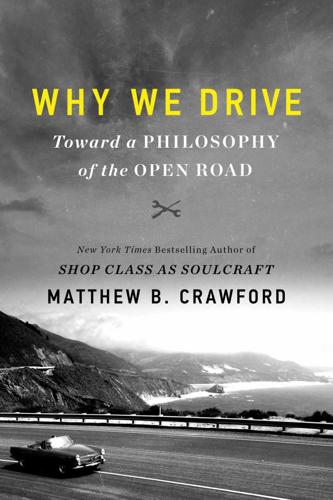
Why We Drive: Toward a Philosophy of the Open Road
by
Matthew B. Crawford
Published 8 Jun 2020
It is natural to suppose this is driven by liability concerns, but the taste for order tends to slip the bonds of any such calculation and become a kind of murky moralism: not something openly avowed but rather taken for granted, hard to grab hold of, and therefore hard to contest. Monchaux writes about the High Line in New York City, a wonderful park created with private financing out of an elevated railway that had long been out of service. He gives the park its proper due, but then notes that “its defining detail is the prim arrangement of metal pins and ropes that enforce the border between paving and planting.
…
See The Revolt of the Primitive: On the Origins of Political Correctness (New York: Routledge, 2017). 7.Huizinga, Homo Ludens, p. 48. 8.Winston Churchill, My Early Life: 1874–1904 (New York, Touchstone, 1996), p. 64. 9.This passage comes from “Ace for the Ages: World War I Fighter Pilot Manfred von Richthofen,” HistoryNet, https://www.historynet.com/red-baron-world-war-i-ace-fighter-pilot-manfred-von-richthofen.htm. See also Richtofen’s own account, “The Red Air Fighter,” in Jon E. Lewis, ed., Fighter Pilots: Eyewitness Accounts of Air Combat from the Red Baron to Today’s Top Guns (New York: MJF Books, 2002), pp. 37–59. 10.“Ace for the Ages.” 11.War as exclusive contest presumes the humanity of one’s opponent.
…
As a pair of Princeton computer scientists put it, “There is no known effective method to anonymize location data, and no evidence that it’s meaningfully achievable.”2 The New York Times did an independent study of location tracking by smartphone apps, analyzing data that supposedly had been anonymized. It is worth quoting the article at length, as it gives a good indication of what one can learn about a person, and the identity of the person, from following their movements. One path tracks someone from a home outside Newark to a nearby Planned Parenthood, remaining there for more than an hour . . . . Another leaves a house in upstate New York at 7 a.m. and travels to a middle school 14 miles away, staying until late afternoon each school day.
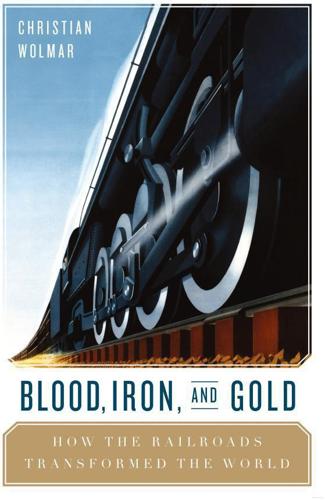
Blood, Iron, and Gold: How the Railways Transformed the World
by
Christian Wolmar
Published 1 Mar 2010
Ultimately the power of the north-eastern railroads, who had nearly all plumped for standard gauge, prevailed and other lines followed suit. Not, though, before there had been a disaster caused by the pigheadedness of the early engineers. When the New York Express of the Lake Shore and Michigan Southern derailed and plunged into a creek in December 1867 near Angola, New York, with the loss of forty-nine lives, the investigators found that the problem was that the trains had been adjusted to ride on both the standard gauge (4ft 8½ins), used by the New York Central, and the 4ft 10ins of the Lake Shore in order to avoid the expense of changing the gauge on one of the railroads. On the wider gauge sections, not all the wheel would ride on the rail which was fine until a stretch of slightly misaligned track caused the disaster.
…
Almost overnight, with the opening of a line, fresh food became available from the countryside, which helped both the farmers who had a far wider market for their produce and the consumers in the towns. Take, for example, the good dairy folk of Orange County in upstate New York who before the completion of the New York & Erie Rail Road in 1841 sent their produce to the city as salted butter. Until then, New York’s milk supply had come from evil-smelling swill-fed cows kept in basements. The railway’s innovative local agent persuaded farmers to put milk in barrels on the trains, which quickly found a market among New Yorkers since it was both better and cheaper than before.
…
The problem was far greater in the United States where distances of 3,000 rather than 300 miles had to be managed and, as a historian of the American railroads suggests, ‘the matter of time on American railroads, and indeed in all American life, was pretty much chaos’. 33 He cites the case of Buffalo in New York State where the railroad station boasted three clocks: one on New York City time, used by the New York Central; a second set to the time in Columbus, Ohio, for the Michigan Southern and other regional railroads; and the third showing the local time. In Pittsburgh, a big railroad centre, there were no fewer than six clocks showing different times and transcontinental travellers might have to change their watches twenty times during their journey.
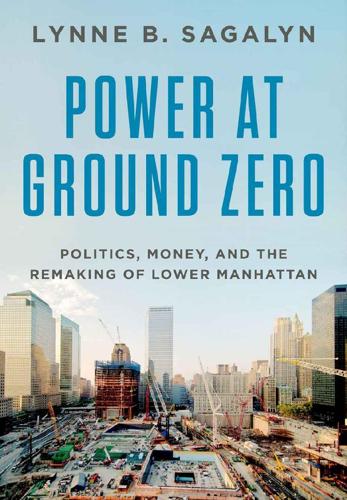
Power at Ground Zero: Politics, Money, and the Remaking of Lower Manhattan
by
Lynne B. Sagalyn
Published 8 Sep 2016
List of Source Abbreviations ABNY Association for a Better New York ACHP Advisory Council on Historic Preservation AP Associated Press BBB Beyer Blinder Bell CA Construction agreement CM/GC Construction manager/general contractor Crain’s Crain’s New York Business DBB Davis Brody Bond DCP Department of City Planning, City of New York DLMA Downtown–Lower Manhattan Association DN Daily News [New York] DOT Department of Transportation EDC Economic Development Corporation, City of New York EIS Environmental impact statement ESDC Empire State Development Corporation FEMA Federal Emergency Management Agency FHWA Federal Highway Administration FOI Freedom of Information FRBNY Federal Reserve Bank of New York FTA Federal Transit Administration GAO Government Accounting Office GPP General Project Plan GSA Government Services Administration LMCCC Lower Manhattan Construction Command Center LMDC Lower Manhattan Development Corporation LMRO Lower Manhattan Recovery Office MAS Municipal Art Society MDA Master Development Agreement MOA Memorandum of agreement MOU Memorandum of understanding MTA Metropolitan Transportation Authority NEPA National Environmental Policy Act NYC New York City NYC IBO New York City Independent Budget Office NYFD New York Fire Department NYNV New York New Visions NYO New York Observer NYP New York Post NYS New York State NYS New York Sun NYSHPO New York State Historic Preservation Office NYT New York Times PA Port Authority PANYNJ Port Authority of New York and New Jersey PATH Port Authority Trans-Hudson PBS Public Broadcasting System PILOT Payment in lieu of taxes PMOC Project manager oversight contractor REBNY Real Estate Board of New York RFP Request for proposals RPA Regional Plan Association of New York SOM Skidmore, Owings & Merrill SPI Silverstein Properties, Inc. UPI United Press International VSC Vehicle Security Center WFC World Financial Center [Brookfield Center] WSJ Wall Street Journal WTC World Trade Center Selective Chronology of the Rebuilding of the World Trade Center Site: 2001–2016 2001 July The Port Authority of New York and New Jersey (PA) net leases the office towers and retail areas of the World Trade Center (WTC) to an investment partnership led by New York developer Larry A.
…
See also specific city agencies, officials, and street names civic groups, 61–62, 88, 144–151 fiscal conditions, 22–25, 762n33 global aspirations, 5–14, 707–708 office rental market, 428–429, 458, 563, 590, 682–683, 824n54 ownership of streets within WTC site, 249 relations between mayor and governor, 76–90, 158, 190–192, 197, 199, 210–217, 413, 419–422, 432, 448, 636, 685, 710, 784n61, 846–847n57 New York City Arts Coalition, 304 New York City Central Labor Council of AFL-CIO, 149 New York City Council, Committee on Lower Manhattan Redevelopment, 302, 348, 429 New York City Department of Building, 533 New York City Department of City Planning (DCP), 64, 66, 142, 201, 247–248, 251–253, 561 New York City Department of Cultural Affairs, 302 New York City Department of Transportation, 291 New York City Economic Development Corporation (EDC), 156, 363, 408, 423, 630–631, 635, 761n26 New York City Investment Fund, 860n45 New York City Opera, 299–300, 302–304 New York City Planning Commission, 56, 64–65, 66, 141, 183–185, 247–248, 366, 761n26 New York City’s Vision for Lower Manhattan (2002; Bloomberg plan), 162–163, 247, 410 New York Fire Department (NYFD), 233, 290, 672 Engine 10−Ladder 10 fire station bronze bas relief, 349f New York New Visions (NYNV): Principles for the Rebuilding for Lower Manhattan (2002), 144–146, 201 New York Police Department (NYPD), 42, 265, 275–281, 286–291, 294, 504, 563, 575, 609, 668t, 696, 718, 800n60 New York State Council on the Arts, 297, 302 New York State Department of Transportation, 109, 111, 291 New York State Energy Research and Development Authority, 818n4 New York State Historic Preservation Office (SHPO), 496 Programmatic Agreement (2004), 499–500 New York State Office of General Services, 459 New York Stock Exchange, 53, 192, 798n41 New York University, 60 Real Estate Institute, 56 9/11 anniversaries, 560, 674 first anniversary, 560 tenth anniversary as goal, 548, 559–561, 567 tenth anniversary opening of Memorial Plaza, 336, 665 thirteenth anniversary, 707 9/11 families ideas about a memorial, 224–229, 306–318, 313f, 321, 322–327, 345, 347f, 368, 676, 805n65, 858n19 press role and, 713 role of activist families, 229–234, 676.
…
Title: Power at ground zero : politics, money, and the remaking of lower Manhattan / Lynne B. Sagalyn. Description: New York : Oxford University Press, 2016. Identifiers: LCCN 2016009574 (print) | LCCN 2016027366 (ebook) | ISBN 9780190607029 (hardback) | ISBN 9780190607036 (E-book) | ISBN 9780190607043 (E-book) Subjects: LCSH: September 11 Terrorist Attacks, 2001. | Manhattan (New York, N.Y.)—History—21st century. | City planning—New York (State) | Land use, Urban—New York (State) | Public buildings—New York (State)—Design and construction. | Economic assistance—New York (State)—New York. | BISAC: SOCIAL SCIENCE / Sociology / Urban. | ARCHITECTURE / Urban & Land Use Planning. | ARCHITECTURE / General.
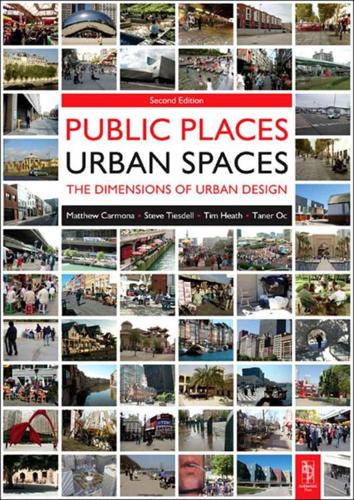
Public Places, Urban Spaces: The Dimensions of Urban Design
by
Matthew Carmona
,
Tim Heath
,
Steve Tiesdell
and
Taner Oc
Published 15 Feb 2010
Some politicians have, nevertheless, been both strong advocates of design quality and influential in raising the quality of development in their cities. A number of schemes from around the world have sought to convert once-hostile infrastructure into new and vibrant social spaces. These include New York’s High Line Park, Boston’s Big Dig, London’s Mile End Park project, and, most dramatically, Seoul’s Cheonggye waterfront scheme (see Figure 3.8). FIGURE 3.8 Reclaiming space through political commitment (Image: Matthew Carmona). Seoul’s Cheonggye waterfront scheme is often attributed to the city’s former Mayor – Myung-Bak Lee.
…
Understanding current trends in policing systems’, British Journal of Criminology 42(1), 129–146 K Kashef, M (2008) Architects and planners approaches to urban form and design in the Toronto region: A comparative analysis Geoforum 39, 414–437 Kaliski, J (2008a) The present city and the practice of city design’, in Chase, J L; Crawford, M & Kaliski, J (2008) Everyday Urbanism (second edition), The Monacelli Press, New York, 88-109 Kaliski, J (2008b) Everyday urban design: Towards default urbanism and/or urbanism by design’, in Chase, J L; Crawford, M & Kaliski, J (2008) Everyday Urbanism (second edition), The Monacelli Press, New York, 216-220 Katz, P (1994) The New Urbanism: Towards an Architecture of Community, McGraw-Hill, New York Kaplan, S (1987) Aesthetics, affect and cognition: Environmental preferences from an evolutionary perspective, Environment & Behaviour, 191(1), 12 Kaplan, S & Kaplan, R (1982) Cognition and Environment: Functioning in an Uncertain World, Praeger, New York Kay, J H (1997) Asphalt Nation: How the Automobile Took Over America and How We Can Take It Back, Crown, New York Kayden, J S (2000) Privately Owned Public Space: The New York Experience, John Wiley & Sons, London Keates, S & Clarkson J (2004) Countering Design Exclusion: An Introduction to Inclusive Design, Springer, London Keating, M (1988) The City That Refused to Die: Glasgow – The Politics of Urban Regeneration, Mercat Press, Glasgow Kelbaugh, D & McCullough (2008) (editors), Writing Urbanism: A Design Reader, Routledge, London Kelbaugh, D (2008a) Further thoughts on the three urbanisms in Kelbaugh, D and McCullough, K K (2008) (editors) Writing Urbanism: A Design Reader, Routledge, London, 105–114 Kelbaugh, D (2008b) Three urbanisms: New, everyday and post’, in Haas, T (2008) (editor) New Urbanism and Beyond, Rizzoli, New York, 40–47 Kelbaugh, D (2002) Repairing the American Metropolis: Common Place Revisited, University of Washington Press, Seattle, WA Kelbaugh, D (1997) Common Place: Toward Neighbourhood and Regional Design, University of Washington, Seattle Kelling, G L (1987) Acquiring a taste for order: The community and the police Crime & Delinquency, 33(1) 90–102 Kidder, R M (1995) How Good People Make Tough Choices: Resolving the Dilemmas of Ethical Living, Simon & Schuster, New York Kindsvatter, D & Van Grossman, G (1994) What is urban design?
…
in Krieger, A & Saunders, WS (2009) (editors) Urban Design, University of Minnesota Press, Minneapolis & London, 113–130 Krieger, A (1995) Reinventing public space’, Architectural Record 183 (6), 76–77 Krier, L (2009) The Architecture of Community (edited by Thadani, D A & Hetzel, P J), Island Press, Washington DC Krier, L (1990) Urban components, in Papadakis, A & Watson, H (1990) (editors) New Classicism: Omnibus Edition, Academy Editions, London, 196–211 Krier, L (1987) ‘Tradition–Modernity–Modernism: Some necessary explanations, Architectural Design, 57(1/2), 38–43 Krier, L (1984) Houses, places, cities’, Architectural Design, 54(7/8), 43–49 Krier, L (1979) The cities within a city, Architectural Design, 49(1), 19–32 Krier, L (1978a) The reconstruction of the city’, in Deleroy, R L (1978) Rational Architecture, Archives d'Architecture Moderne, Brussels, 38–44 Krier, L (1978b) Urban transformations Architectural Design, 48(4), 219–266 Krier, R (1990) Typological elements of the concept of urban space, in Papadakis, A & Watson, H (1990) (editors) New Classicism: Omnibus Edition, Academy Editions, London, 212–219 Krier, R 1979; (first published in German in 1975) Urban Space, Academy Editions, London Kropf, K (2006) Against the perimeter block: A morphological critique’, Urban Design, Winter, 97, 12–13 Kropf, K S (1996) An alternative approach to zoning in France: Typology, historical character and development control, European Planning Studies, 4(6), 717–737 Kuh, D J L & Cooper, C (1992) Physical activity at 36 years: Patterns and childhood predictors in a longitudinal study, Journal of Epidemiology & Community Health, 46, 114–119 Kunstler, J H (2005) The Long Emergency: Surviving the End of Oil, Climate Change and Other Converging Catastrophes of the Twenty-First Century, Grove Press, New York Kunstler, J H (1996) Home from Nowhere: Remaking our Everyday World for the 21st Century, Simon & Schuster, New York Kunstler, JH (1993) The Geography of Nowhere: The Rise and Decline of America's Man-Made Landscape, Simon & Schuster, New York L LaFrage, A (2000) (editor) The Essential William H Whyte, Fordham University Press, New York Lagopoulos, AP (1993) Psotmodernism, geography and the social semiotics of space’, Environment & Planning D: Society & Space, 11, 255–278 Lai, R (1994) Can the process of architectural design review withstand constitutional scrutiny?
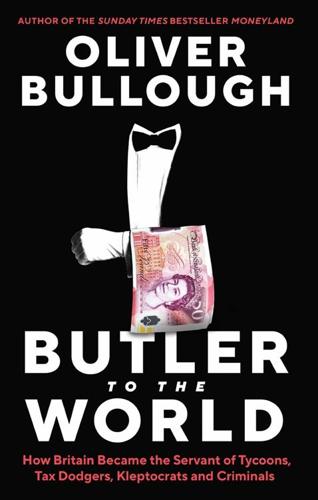
Butler to the World: How Britain Became the Servant of Tycoons, Tax Dodgers, Kleptocrats and Criminals
by
Oliver Bullough
Published 10 Mar 2022
British officials approved of the democratic case for capital controls, but they wanted Shell Oil to do well too, and juggling those two priorities was hard. The same went for American officials. They might have wanted all dollar transactions to stay in New York, but it was also quite useful for US corporations to have a place to raise funds when operating overseas that was not as restrictive as the domestic market. This appears to be why US officials didn’t put pressure on their British counterparts to stop the trade in Eurodollars. ‘Although the continental dollar market has somewhat reduced the importance of New York as an international lending centre, it has added to the importance of the dollar as an international currency,’ wrote two Federal Reserve analysts in 1960 in what seems to have been US officials’ first attempt to understand what was going on.
…
But his uncontrolled antics can frustrate the good intentions of lesser creatures, such as central bankers,’ wrote the New York Times in April 1969 with heavy irony. ‘The genie is the Eurodollar, a strapping giant, well over $20-billion strong, baffling to the layman and puzzling even to the experts.’ Normally, when central bank officials openly muse about new regulations, that is equivalent to creating them, but this time it didn’t work. Bankers knew very well that the Federal Reserve couldn’t impose its will in London, even if it wanted to. By December, the New York Times said, the volume of funds in the market had hit $40 billion. Like the sorcerer’s apprentice bewitching his broom to fetch him water, the central bankers who had conjured up this market couldn’t stop it; the more they tried to do so, the higher the water levels rose.
…
Described by a historian as ‘visionary, formidably energetic and a superb networker’, Barkshire was – among many other things during his career – colonel of the City of London’s Territorial Army regiment, chairman of London’s main futures market and a justice of the peace. In his spare time he and his wife farmed 300 acres in East Sussex. His company, Mercantile House, was a major player in an internationalising foreign exchange market and as such wanted a presence in New York, but for Barkshire everything about the place came as a shock. ‘It’s difficult to put one’s finger on any individual thing, but the whole of the way that the New York market operated. I suppose the Mafia element, the ethnic element, the junk food, the no lunches, the no alcohol, all of those sorts of things were operating in a totally different way. It was a much rougher market,’ he told an interviewer for the City Lives project.
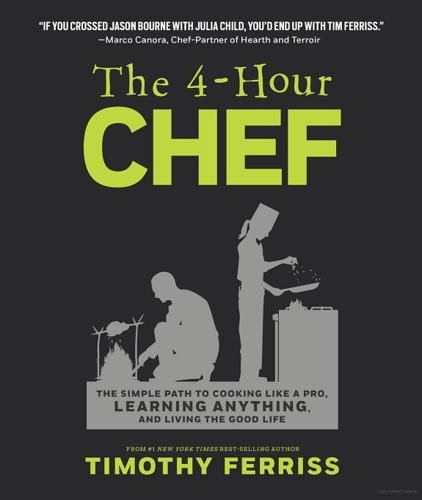
The 4-Hour Chef: The Simple Path to Cooking Like a Pro, Learning Anything, and Living the Good Life
by
Timothy Ferriss
Published 1 Jan 2012
This recurve model is now hard to find, but there are plenty of comparable options. I prefer the B. Goode. “From 1980 to 1983, I worked in the kitchen of a small restaurant near Catskill, New York, on a patch of the Hudson River Valley so remote it didn’t have an address. The 60-seat restaurant was owned by René and Paulette Macary (she remains its proprietor today). La Rive, named thus because it sat on a wide running creek, was a fruitful training ground, and New York State had extraordinary livestock. Beautiful veal came down from Utica. I found a man who raised spectacular pigeons. I began to ask these farmers for unusual items to experiment with, things like pigs’ ears, cockscombs, duck testicles.
…
He was Tom Colicchio’s right-hand man as original chef of Craft restaurant, which won a James Beard Award for Best New Restaurant during his tenure. By the end of the evening, I concluded what many others had: Hearth is the most underrated restaurant in all of New York City.1 THE MANTRA “Cooking is not hard. Cooking is not hard.” Marco repeated this five times during our evening together. “I feel like I’ve pulled the wool over everyone’s eyes as a ‘successful chef in New York City.’ Anyone could do this.” “C’mon,” I said as I pointed to my vegetable salad, which was ethereal and juicy (not an adjective I use for salads), easily one of the best salads of my life.
…
Now it represents a philosophy of sustainable cooking and eating that has spread into cuisines and places no one could have imagined. Note: Restaurants without locations specified are in San Francisco. THE NYC GENEALOGICAL CHART Behold…the tangled, incestuous web that is the New York City culinary scene! Traveling chronologically from left to right, past to present, you can see most of New York’s top restaurants (circled in dotted yellow) and their connections to the chefs who made them what they are (circled in black). And what do you get when the who’s who of NYC haute cuisine share restaurants like third-graders share baseball cards?

Chicago Like a Local
by
DK
Open-air restaurants sprawl out onto the path, tempting walkers to abandon their walk for a cooling cocktail instead. In the evening, the popular Art on the Mart steals the show. g Scenic Strolls g Contents Google Map THE 606 Map 3; 1805 North Ridgeway Avenue, Wicker Park; ///model.foster.rally; www.the606.org New York City’s High Line? Don’t you mean Chicago’s 606? This scenic elevated rail trail was a full decade in the making, and when the city finally cut the ribbon in 2015, no fewer than 50,000 Chicagoans came out to celebrate. Running from Humboldt Park to Wicker Park, the beloved railway is a hit with dog walkers and runners taking a breather on the sun-drenched benches. » Don’t leave without checking out some of the art installations along the trail; the Graffiti Garden at Bloomingdale Avenue is our top pick.
…
These run north, south, and west from the Loop’s central hub and stretch to the suburbs and two major airports. The red and blue lines run 24 hours a day. The bus system is more comprehensive, with 2,000 buses running 129 routes from morning to night, seven days a week. CTA buses and trains both accept payment via Ventra Cards, Chicago’s answer to New York’s MetroCard. You can pick one up at an automated kiosk inside any train station as well as at select drugstores, convenience stores, gas stations, and currency exchanges. The cards are reloadable and you can add funds by downloading the Ventra app to your phone. Regular train fares are $2.50 per person, while buses will set you back $2.25.
…
g Secret Speakeasies g Contents Google Map VIOLET HOUR Map 2; 1520 North Damen Avenue, Wicker Park; ///moons.lived.motion; www.theviolethour.com Seeking out the city’s best speakeasy? Follow locals to Violet Hour, the bar that helped ignite Chicago’s craft cocktail scene in 2007. The credit goes to barman Toby Maloney, who came to the Midwest from New York to, well, shake things up a bit. Toby’s changing menu of craft cocktails means there’s always something new to try here. How about a tasty Marga Pea-Ta, which features tequila with Novo Fogo Chameleon Cachaça and snap peas? Or a delicious Diamond Rose, which mixes gin with Cocchi Rosa, yellow Chartreuse, and orange bitters.
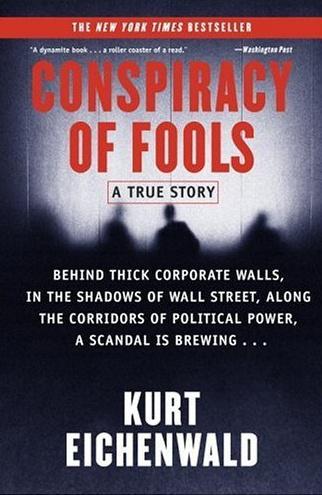
Conspiracy of Fools: A True Story
by
Kurt Eichenwald
Published 14 Mar 2005
Vacek signed on to his computer, using his high-speed connection to call up the Internet site for the United States Bankruptcy Court in New York. The Weil, Gotshal lawyers had urged Enron to file there; New York had the most sophisticated bankruptcy judges, they argued, and this was going to be one of the most complicated cases of all time. Moving the mouse for his computer, Vacek clicked on the words “Document Filing System,” then entered a password. At 4:28 in the morning, Vacek clicked the “submit” button, sending the papers to New York. Enron was officially bankrupt. CHAPTER 23 IT WAS MONDAY MORNING, December 3, and Enron’s offices were like a tomb.
…
HNG/InterNorth would from then on be known as Enron, a name that in its first days was already on its way to being bound up in scandal. ——— The limousine eased along the sidewalk outside the New York airport, stopping where David Woytek and two other auditors were waiting. It was days after the big showdown in Houston over the secret bank accounts, and Woytek and his colleagues—including John Beard and Carolyn Kee, an Arthur Andersen partner—had come to New York to conduct the inspection of the trading unit that Lay ordered. They loaded their luggage and climbed in the limo—provided by Borget, the unit’s head—which took them to the offices at the Mount Pleasant Corporate Center.
…
Mark stepped out of the car and approached her team. “Where are you going?” she asked. “Hamilton,” Martin responded. Azurix was negotiating to purchase some assets from Philip Services, based there. “Where are you going?” “New York,” Mark said. “Well, have a good trip.” Everyone flew away. On the crowded Enron plane, the Mark trip was the only topic of conversation. Finding a flight to Hamilton was difficult, and time was of the essence for this deal. But New York? There was a flight there almost every hour out of Houston. But rather than just buy a ticket, Mark had chartered a Learjet. It gave the executives on board a very bad feeling.
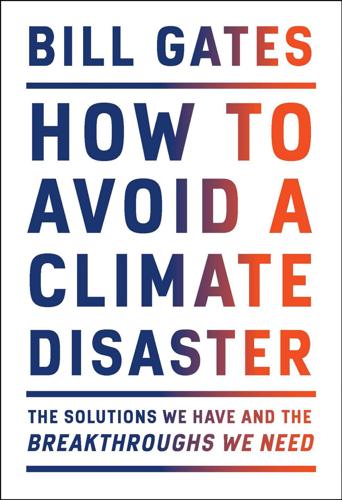
How to Avoid a Climate Disaster: The Solutions We Have and the Breakthroughs We Need
by
Bill Gates
Published 16 Feb 2021
The world 5,000 gigawatts The United States 1,000 gigawatts Mid-size city 1 gigawatt Small town 1 megawatt Average American house 1 kilowatt Of course, there’s quite a bit of variation within these categories, throughout the day and throughout the year. Some homes use much more electricity than others. New York City runs on upwards of 12 gigawatts, depending on the season; Tokyo, with a larger population than New York, needs something like 23 gigawatts on average but can demand more than 50 gigawatts at peak use during the summer. So let’s say you want to power a mid-size city that requires a gigawatt. Could you simply build any one-gigawatt power station and guarantee that city all the electricity it’ll need?
…
ALSO BY BILL GATES The Road Ahead (with Nathan Myhrvold and Peter Rinearson) Business @ the Speed of Thought with Collins Hemingway) THIS IS A BORZOI BOOK PUBLISHED BY ALFRED A. KNOPF AND ALFRED A. KNOPF CANADA Copyright © 2021 by Bill Gates All rights reserved. Published in the United States by Alfred A. Knopf, a division of Penguin Random House LLC, New York, and in Canada by Alfred A. Knopf Canada, a division of Penguin Random House Canada Limited, Toronto. www.aaknopf.com www.penguinrandomhouse.ca Knopf, Borzoi Books, and the colophon are registered trademarks of Penguin Random House LLC. Knopf Canada and colophon are trademarks of Penguin Random House Canada Ltd.
…
Knopf Canada and colophon are trademarks of Penguin Random House Canada Ltd. Cover design by John Gall Library of Congress Cataloging-in-Publication Data Names: Gates, Bill, 1955– author. Title: How to avoid a climate disaster : the solutions we have and the breakthroughs we need / Bill Gates. Description: First edition. | New York : Doubleday [2021] | Includes bibliographical references and index. Identifiers: LCCN 2019059396 (print) | LCCN 2019059397 (ebook) | ISBN 9780385546133 (hardcover) | ISBN 9780385546140 (ebook) Subjects: LCSH: Climatic changes—Prevention—Technological innovations. | Global warming—Prevention—Technological innovations. | Greenhouse gases—Environmental aspects. | Environmental policy.
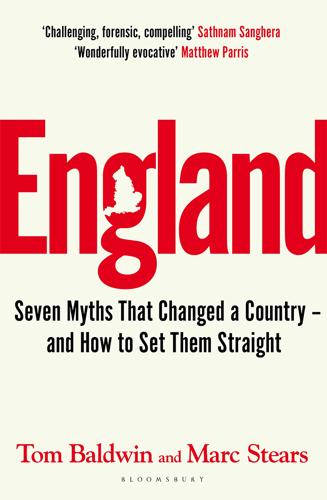
England: Seven Myths That Changed a Country – and How to Set Them Straight
by
Tom Baldwin
and
Marc Stears
Published 24 Apr 2024
The music venue itself is dominated by a circular shopping mall with netting draped from the ceilings to stop those clean lines that once earned architectural awards distracting consumers from buying more stuff. The cable car connecting the peninsula to the other side of the river, built when New Britain flickered again during the London Olympics, now has scarcely any passengers.95 A raised walkway called ‘The Tide’, an imitation of New York’s High Line with works by artists like Damien Hirst, seems similarly forlorn with its Harlequin-painted air vents and spindly trees. There are restaurants serving every kind of food imaginable from all around the world – Argentinian steak, Thai noodles, Japanese sushi, Indian street food, Italian pizza, Mexican burritos, Brazilian churrascaria – but only a tiny Tesco and slightly larger Co-op for those tens of thousands of ‘new settlers’.
…
Rodger, ‘Queen Elizabeth and the Myth of Sea-Power in English History’, Transactions of the Royal Historical Society 14 (2004): 153−74. 14 Cheryl A. Fury, Tides in the Affairs of Men, Westport, Conn.; London, Greenwood Press, 2002, p. 122. 15 Hugh F. Rankin, The Golden Age of Piracy, New York, Holt, Rinehart & Winston, 1969, p. 17. 16 Kenneth R. Andrews, Drake’s Voyages, New York, Charles Scribner’s Sons, 1967, pp. 33−4. 17 N. A. M. Rodger, The Safeguard of the Sea, London, Penguin, 2004, p. 346. 18 Ibid., p. 19. 19 Sugden, Sir Francis Drake, pp. 27−31. 20 Open letter by Elizabeth I to the mayors of England, 11 July 1596, National Archives (PC 2/21 f.304). 21 Philip Nichols quoted in Sugden, Sir Francis Drake, p. 70. 22 Sugden, Sir Francis Drake, p. 141. 23 William Camden quoted by Nikki Marmery, On Wilder Seas, London, Legend Press, 2020. 24 Herman A.
…
, Guardian, 12 March 2020. 2 Adam Nicolson, Regeneration, London, HarperCollins 1999, p. 1. 3 Francis Fukuyama, The End of History and the Last Man, New York, Free Press, 1992. 4 ‘Oasis star Noel Gallagher’s shocking revelation’, Daily Mail, 24 September 2008. 5 ‘Britain’s 20 favourite meals’, Daily Mirror, 11 December 2018. 6 Arsène Wenger, directed by Gabriel Clarke and Christian Jeanpierre, Amazon Prime, 2021, 1 hr 35 mins. 7 Mark Leonard, BritainTM, London, Demos, 1999, pp. 4−5. 8 Simon Partridge, The British Union State, London, Catalyst Press, 1999. 9 Norman Davies, The Isles: A History, New York, Oxford University Press, 1999, p. xxv; Linda Colley at https://webarchive.nationalarchives.gov.uk/ukgwa/20040809182858/ http://www.pm.gov.uk/output/Page3049.asp 10 See http://enochpowell.info/wp-content/uploads/Speeches/Nov%201973-Feb%201974.pdf 11 Ibid., 241. 12 Barbara Castle, The Castle Diaries, 1974–76, London, Weidenfeld & Nicolson, 1980, p. 28. 13 See https://www.youtube.com/watch?
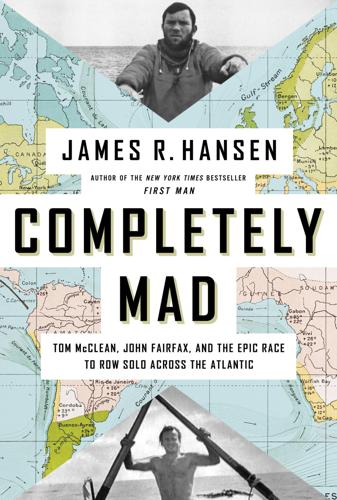
Completely Mad: Tom McClean, John Fairfax, and the Epic of the Race to Row Solo Across the Atlantic
by
James R. Hansen
Published 4 Jul 2023
This time he wouldn’t try to hawk his idea in South Florida; he would go to New York City. But with bills stacking up quickly, John didn’t have the money for a New York trip. Somebody else would need to give him the means to go. Once again Sylvia came to his rescue. She was already working hard to finish his book manuscript, which was already past due to the publisher. Now she approached an American firm, Great American Industries, a major international distributor of skin-diving equipment, and persuaded it to give John a one-way airline ticket to New York. There he would meet with company’s advertising department to discuss his idea for his man-fighting-shark documentary.
…
The Real Odessa: How Perón Brought the Nazi War Criminals to Argentina. Revised edition. London and New York: Granta Books, 2002. Hammick, Anne. The Atlantic Crossing Guide. Camden, ME: International Marine, 1992. Rackley, Adam. Salt, Sweat, Tears: The Men Who Rowed the Oceans. New York: Penguin Books, 2014. Ridgway, John and Chay Blyth. A Fighting Chance. London: The Companion Book Club of London, 1966; Philadelphia, PA: Lippincott, 1967. Shaw, David W. Daring the Sea: The True Story of the First Men to Row Across the Atlantic Ocean. New York: Citadel Press, 1998. ARTICLES “A Chance Encounter with Tom McClean,” A Bolas About, March 29, 2018, https://abolasabout.wordpress.com/2018/03/29/a-chance-encounter-with-tom-mcclean/.
…
The first crossing to succeed occurred in 1896, when Norwegian-born immigrants to the United States George Harbo (né Gottlieb Harbo Ragnhildrød) and Frank Samuelsen (né Gabriel Samuelsen) made a two-man row across the Atlantic. Harbo and Samuelsen, veteran mariners and fishermen who lived along the New Jersey coast, set out in their 18-foot-long clinker-built oak rowboat from the Battery in New York City with no other means of propulsion but oars, hoping to arrive in the port at Le Havre, France, but were lucky, 55 days later, to find the Isles of Scilly, at the southernmost tip of England, 3,250 miles from New York. The duration of their crossing, 55 days, remained a record time for rowing the Atlantic for 114 years, until 2010, when it was finally broken by a boat rowed not by two men but by four.
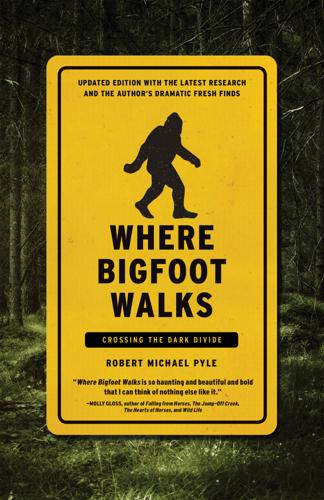
Where Bigfoot Walks: Crossing the Dark Divide
by
Robert Michael Pyle
Published 31 Jul 2017
The Locals: A Contemporary Investigation into the Bigfoot/Sasquatch Phenomenon. Surrey, B.C., and Blaine, WA: Hancock House, 2003. Sanderson, Ivan T. Abominable Snowmen: Legend Come to Life. New York: Jove/HBJ, 1977. Shackley, Myra. Still Living? Yeti, Sasquatch and the Neanderthal Enigma. New York: Thames and Hudson, 1986. FOR YOUNG READERS Baumann, Elwood D. Bigfoot: America’s Abominable Snowman. New York: Franklin Watts, 1975. Brockenbrough, Martha, and Cliff Barackman. Finding Bigfoot: Everything You Need to Know. New York: Discovery Communications, 2013. Douglas, William O. Exploring the Himalaya. Eau Claire, WI: E. M. Hale, 1958. Halls, Kelly Milner.
…
Surrey, B.C., and Blaine, WA: Hancock House, 2013. ———. The Search for Bigfoot: Monster, Myth, or Man? New York: Pocket Books, 1976. ———. The Hunt for the Yeti. Woods, OR: Amazon Publishing, 2015. (www.peterbyrne.com) Coleman, Loren. Tom Slick and the Search for Yeti. London: Faber and Faber, 1989. Cronin, Edward W., Jr. The Arun: A Natural History of the World’s Deepest Valley. Boston: Houghton Mifflin, 1979. Gardner, John. Grendel. New York: Alfred A. Knopf, 1971. Gloss, Molly. Wild Life. New York: Simon & Schuster, 2000. Gordon, David George. Field Guide to the Sasquatch. Seattle: Sasquatch Books, 1992.
…
Seattle: Sasquatch Books, 1992. Green, John. Bigfoot: On the Track of the Sasquatch. New York: Ballantine Books, 1973. ———. Sasquatch: The Apes Among Us. Surrey, B.C., and Blaine, WA: Hancock House, 2006. Halpin, Marjorie, and Michael M. Ames, eds. Manlike Monsters on Trial: Early Records and Modern Evidence. (Proceedings of the conference “Sasquatch and Similar Phenomena,” University of British Columbia Museum of Anthropology, 1978). Vancouver: University of British Columbia Press, 1980. Heuvelmans, Bernard. On the Track of Unknown Animals. New York: Hill and Wang, 1959. Hunter, Don, with René Dahinden. Sasquatch/Bigfoot: The Search for North America’s Incredible Creature.

Casino
by
Nicholas Pileggi
Published 13 Aug 2015
My attention was immediately focused upon the ladies of Las Vegas…. Phyliss La Forte (very style conscious, formerly of New York, bionic eye for high lines and super curves … a very elegant young lady in or out of her tennis suit)…. Sandy Tueller (the doctor’s wife), a mighty fine woman, tennis accentuated, and very proper, stylish too…. Barbara Greenspun (the epitome of fashion par excellence). The publisher’s wife is a genuine “knockout” (Taste of perfection). Slack ensemble, lavish dresses, blouses, and more, a genuine New York Fashion plate. An enormous wardrobe. Barbara Greenspun may very well be one of the finest dressed women from coast to coast.
…
It should have lasted forever, but Lefty’s obsessions with running the town – and Tony’s obsession with Lefty’s beautiful showgirl wife, Geri – eventually led to the betrayals and investigations that exploded into one of the greatest scandals in mob history. Casino is the shattering inside account of how the mob finally lost its stranglehold on Las Vegas, the neon money-making machine it created. About the Author Nicholas Pileggi has been a journalist and writer covering crime, politics and corruption in New York since 1956. In 1986 he wrote ‘Wiseguy’ which he developed into the Academy Award-winning screenplay for ‘Goodfellas’ (1990) with Martin Scorsese. Pileggi followed that success with ‘Casino’ (1995) (also with Scorsese) and has since written and produced several other crime-based films and TV. He was married to fellow author and screenwriter Nora Ephron until her death in 2002.
…
–The Sun (Baltimore) “Even if you think you’ve had our fill of Mafia books, Nicholas Pileggi’s account of a small-time crook will keep you bug-eyed. . . . A terrific job of reporting.” –Newsweek “One of the best parts of Wiseguy is a detailed account of the 1978 heist of $6 million in cash and jewels from a Lufthansa airline vault at New York’s Kennedy Airport. . . . A close-up look in Hill’s own words of how he romped through life thieving, bribing, and scheming.” –The Wall Street Journal “A fascinating book.” –Mario Puzo “The nitty-gritty, ranging from the death struggles of condemned gangsters to the scandalous country-club atmosphere at some federal detention centers.”
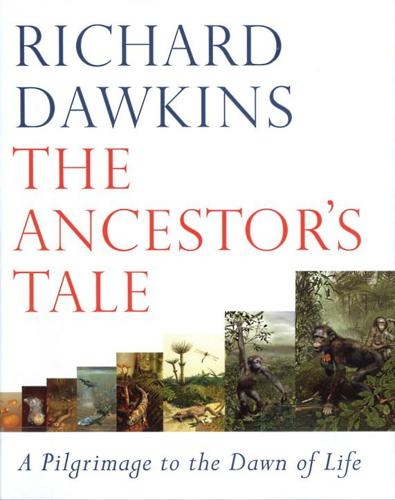
The Ancestor's Tale: A Pilgrimage to the Dawn of Evolution
by
Richard Dawkins
Published 1 Jan 2004
Cambridge University Press, Cambridge. [59] DARWIN, C. (1860/1859) On The Origin of Species by Means of Natural Selection. John Murray, London. [60] DARWIN. C. (1987/1842) The Geology of the Voyage of HMS Beagle: The Structure and Distribution of Coral Reefs. New York University Press, New York. [61] DARWIN, C. (2002/1839) The Voyage of the Beagle. Dover Publications, New York. [62] DARWIN, C. (2003/1871) The Descent of Man. Gibson Square Books, London. [63] DARWIN, F. (ed.) (1888) The Life And Letters of Charles Darwin. John Murray. London. [64] DAUBIN, V., GOUY, M., Si PERRIERE, G. (2002) A phylogenomic approach to bacterial phylogeny: evidence for a core of genes snaring common history.
…
[140] HUXLEY, T. H. (2001/1836) Man's Place in Nature. Random House USA. New York. [141] INOUE, J. G., MASAKI. M., TSUKAMOTO, K., & NISHIDA. M. (2003) Basal actinopterygian relationships: A mitogenomic perspective on the phylogeny of the 'ancient fish'. Molecular Phylogenetirs and Evolution 26:110-120. [142] JEFFERY, W. R. & MARTASIAN, D. P. (1998) Evolution of eye regression in the caveflsh Astyanax: Apoptosis and the Pax-6 gene. American Zoology 38: 685-696. [143] JERISON, H. J. (1973) Evolution of the Brain and Intelligence. Academic Press, New York. [144] Ji, Q., Luo, Z.-X., YUAN, C.-X., et al. (2002) The earliest known eutherian mammal.
…
[305] WEST-EBERHARD, M.J. (2003) Developmental Plasticity and Evolution. Oxford University Press, New York. [306] WESTOLL, T. S. (1949) On the evolution of the Dipnoi. In Genetics, Paleontology and Evolution (Jepsen, G. L., Mayr, E., & Simpson. G. G.. eds.), pp. 121-188. Princeton University Press, Princeton. [307] WHEELER, J. A. (1990) Information, physics, quantum: The search for links. In Complexity, Entropy, and the Physics of Information (Zurek, W. H., ed.). pp. 3-28, Addison-Wesley. New York. [308] WHITE, T. D., ASFAW, B., DEGUSTA. D.. et al. (2003) Pleistocene Homo sapiens from Middle Awash.
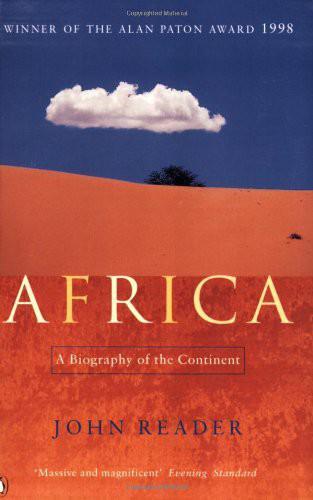
Africa: A Biography of the Continent
by
John Reader
Published 5 Nov 1998
His work has included contributions to major international publications, consultancies for the United Nations Environment Programme, scripts for television documentaries and the books Pyramids of Life (with Harvey Croze, 1977), Missing Links: The Hunt for Earliest Man (1981; Penguin, 1988), Kilimanjaro (1982), The Rise of Life (1986), Mount Kenya (1989) and Man on Earth (1988; Penguin, 1990). He now lives in south-west London. AFRICA A Biography of the Continent JOHN READER PENGUIN BOOKS PENGUIN BOOKS Published by the Penguin Group Penguin Books Ltd, 80 Strand, London WC2R 0RL, England Penguin Putnam Inc., 375 Hudson Street, New York, New York 10014, USA Penguin Books Australia Ltd, 250 Camberwell Road, Camberwell, Victoria 3124, Australia Penguin Books Canada Ltd, 10 Alcorn Avenue, Toronto, Ontario, Canada M4V 3B2 Penguin Books India (P) Ltd, 11 Community Centre, Panchsheel Park, New Delhi – 110 017, India Penguin Books (NZ) Ltd, Cnr Rosedale and Airborne Roads, Albany, Auckland, New Zealand Penguin Books (South Africa) (Pty) Ltd, 24 Sturdee Avenue, Rosebank 2196, South Africa Penguin Books Ltd, Registered Offices: 80 Strand, London WC2R 0RL, England www.penguin.com First published by Hamish Hamilton 1997 Published in Penguin Books 1998 13 Copyright © John Reader1997,1998 All rights reserved The moral right of the authors has been asserted Except in the United States of America, this book is sold subject to the condition that it shall not, by way of trade or otherwise, be lent, re-sold, hired out, or otherwise circulated without the publisher's prior consent in any form of binding or cover other than that in which it is published and without a similar condition including this condition being imposed on the subsequent purchaser ISBN: 978-0-14-192693-3 CONTENTS Preface Prologue Equivalences PART ONE: The Founding Factors 1 Building a Continent 2 Transitions 3 Missing Links 4 Origins and Climate PART TWO: Humanity Emerging 5 The Real World 6 Footsteps 7 The Cutting Edge 8 In the Mind's Eye 9 Cool Systems 10 Out of Africa PART THREE: The African Options 11 On Home Ground 12 Word of Mouth 13 Ancestral Economies 14 The Human Potential 15 Climate and Culture 16 The Beginnings of Agriculture 17 Renewable Resources 18 The Pastoral Scene 19 The Impact of Iron PART FOUR: African Civilizations 20 The Nile 21 The Periplus of the Erythraean Sea 22 Aksum 23 Cities without Citadels 24 Disease and Affliction 25 Successful Harvests 26 The Implications of Trade 27 Outposts and Inroads 28 Merrie Africa 29 Bananas and Cattle 30 Cattle and Gold PART FIVE: Foreign Influences 31 ‘I Speak of Africa and Golden Joys’ 32 Portuguese Initiatives 33 In Search of Prester John 34 Harnessed to Europe 35 Nothing Else to Sell 36 The Atlantic Slave Trade 37 African Slave Traders 38 Africa Transformed 39 The Aftermath 40 The Climatic Context PART SIX: Settlers 41 Settlers 42 Black and White Frontiers 43 Zulu Myths and Reality 44 The Afrikaners 45 Diamonds and Gold PART SEVEN: The Scramble 46 An Imperial Ambition 47 An African King 48 Drawing the Line 49 Resistance 50 Rebellion 51 The Invention of Africa PART EIGHT:The First Dance of Freedom 52 The Emergent Elite 53 Spoils of War 54 First Dance of Freedom 55 Dreams and Nightmares Maps Notes Bibliography Index PREFACE I am a white Anglo-Saxon male – the son of a London taxi-driver.
…
Am., 1991 (11), pp. 71 – 8 Cernea, M.M., (ed.), 1985, Putting People First, Oxford, Oxford University Press Chang, Kuei-Sheng, 1971, Ming maritime enterprise and Chinas knowledge of Africa, Terrae Incogn., vol. 3, pp. 33 – 44 Chapman, Charles, 1872, A Voyage from Southampton to Cape Town… and Illustrations of the Diamond Fields, London Charig, Alan, 1979, A New Look at the Dinosaurs, London, British Museum (Natural History) Chase, J.C., (ed.), 1843, The Natal Papers, 2 vols., Grahamstown Chittick, H.N., and Rotberg, R.I. (eds.), 1975, East Africa and the Orient: Cultural Syntheses in Pre-colonial Times, New York, NY, Africana Press Churchill, Awnsham and John, (eds.), 1732, A Collection of Voyages and Travels, 6 vols., London Clark, J. Desmond, 1967, Atlas of African Prehistory, Chicago, Ill., University of Chicago Press Clark, J.D., 1970, The Prehistory of Africa, New York, NY, Praeger Clark, J.D., 1976, ‘Prehistoric populations and pressures favoring plant domestication in Africa’, in Harlan, de Wet, and Stemler (eds.), 1976, pp. 67 – 105 Clark, J.
…
Afr., vol. 9, pp. 21 – 59, and vol. 10, PP. 53 – 78 Conrad, Joseph, 1902, The Heart of Darkness; Penguin edn, London, 1976 Conrad, Joseph, 1926, Last Essays, London, Dent Contenson, H. de, 1981, ‘Pre-Aksumite culture’, in Unesco, 1981, vol. 2, pp. 341 – 61 Cook, G.C., and Kajubi, S.K., 1966, ‘Tribal incidence of lactase deficiency in Uganda’, The Lancet, 2 April, pp. 725 – 30 Cooke, H.B. S., 1982, in Cambridge History of Africa, vol. 1, p. 19 Coon, Carleton S., 1939, The Races of Europe, New York, NY, Macmillan Coon, Carleton S., (ed.), 1948, A Reader in Anthropology, New York, NY, Holt Cope, Nicholas, 1993, To Bind the Nation: Soloman kaDinuzulu and Zulu Nationalism, 1913 – 1933, Pietermaritzburg, University of Natal Press Coppens, Yves, 1994, ‘The east side story: the origin of humankind’, Sci. Am., vol. 270 (pt 5), pp. 62 – 9 Coquery-Vidrovitch, C., 1985, ‘The colonial economy of the former French, Belgian and Portuguese zones, 1914 – 35’, in Unesco, 1985, vol. 7, pp. 351 – 81 Coquery-Vidrovitch, Catherine, 1993, ‘Economic changes in Africa in the world context’, in Unesco, 1993, vol. 8, pp. 285 – 316 Cornevin, R., 1962, Histoire du Togo, Paris, Berger-Levrault Corruccini, R., and Ciochon, R., (eds.), 1994, Integrative Paths to the Past: Paleoanthropological Advances in Honor of F.
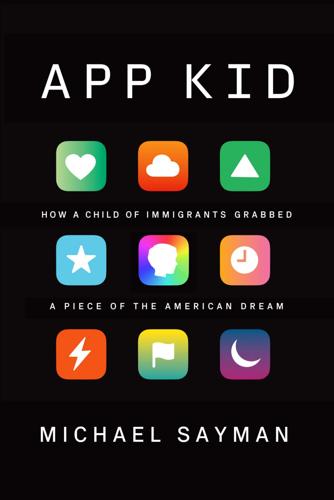
App Kid: How a Child of Immigrants Grabbed a Piece of the American Dream
by
Michael Sayman
Published 20 Sep 2021
And I didn’t find the right moment the next day, as we walked around the city, bundled up in our coats and knit caps decorated with snowflakes and pom-poms, embracing our tourist status with pride. I knew my family wasn’t interested in seeing the “authentic” New York. They wanted Aladdin on Broadway and Tiffany on Fifth Avenue and I Heart New York souvenirs—all the things we’d seen and done on our 2004 trip—and I wanted to fulfill every wish. On Christmas Eve, we took selfies at the Boathouse in Central Park; walked arm in arm down the High Line, blocking everyone’s way; popped into a store that sold only cookie dough; and ended up at the 9/11 Memorial Plaza, where all the trees were winter-bare and the bronze walls of the twin memorial pools were freezing cold, even through the three layers my mom made everyone wear.
…
She still talked about Christmas 2004, when my dad had just put a brand-new dark red Ford Excursion on the credit card and we drove it from Florida all the way up to New York City. Mariana and I were seven and eight. I didn’t remember much about the trip, but I felt like I did because of all the times I’d heard my parents talk about it. To this day, they would still reminisce about the hotel we stayed at, the Marriott Marquis in Times Square. “Remember the circular restaurant, and how the yellow taxicabs way down below looked like bugs?” my mom would say. My dad always used to answer, “One day, we’ll go back.” But I hadn’t heard him say that in years. It was perfect. I’d take us all to New York. I took out my phone to FaceTime my family with the invitation
…
THIS IS A BORZOI BOOK PUBLISHED BY ALFRED A. KNOPF Copyright © 2021 by Michael Sayman All rights reserved. Published in the United States by Alfred A. Knopf, a division of Penguin Random House LLC, New York, and distributed in Canada by Penguin Random House Canada Limited, Toronto. www.aaknopf.com Knopf, Borzoi Books, and the colophon are registered trademarks of Penguin Random House LLC. Grateful acknowledgment is made to TI Gotham Inc. for permission to reprint an excerpt from “Michael Sayman, exitoso ingeniero hispano de Google, dice su verdad: ‘Soy gay’ ” by Lena Hansen, originally published in People en Español (August 24, 2018).
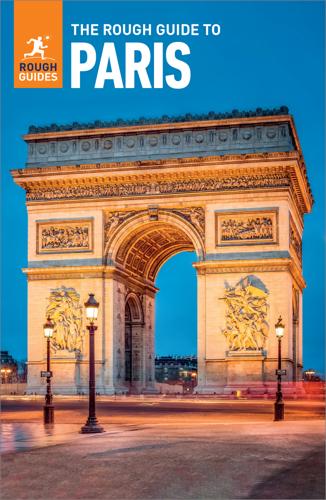
The Rough Guide to Paris
by
Rough Guides
Published 1 May 2023
The Promenade Plantée and around MBastille/Ledru-Rollin The Promenade Plantée René-Dumont, also known as the Coulée Verte René-Dumont, is an excellent way to see a little-visited part of the city – and from an unusual angle. This disused railway viaduct, part of the old Paris–Cherbourg line, has been ingeniously converted into an elevated walkway, similar to New York’s High Line, and planted with a profusion of trees and flowers – cherry trees, maples, limes, roses and lavender. The walkway starts near the beginning of avenue Daumesnil, just south of the Opéra Bastille, and is reached via a flight of stone steps – or lifts (though these are frequently out of order) – with a number of similar access points further along.
…
Disneyland Hotel Situated right over the entrance to the park with wings to either side, the large, frilly, pastel-pink Disneyland Hotel is decked out in glitzy Hollywood style. It’s the most upmarket and best located by far. Closed for refurbishing until 2024. Hotel New York – The Art of Marvel Outside, the hotel is a plasticky, post-modern attempt at conjuring up the New York skyline, while the furnishings within are pseudo Art Deco; lots of original superhero-themed artwork. Comfortable, and towards the top of the range. Newport Bay Club The largest of the hotels, with one thousand rooms, this ‘New England seaside resort circa 1900’ spreads like a game of dominoes.
…
Note that some budget airline flights land at Beauvais airport, inconveniently located around 80km northwest of Paris, although there is a direct bus service from the airport to central Paris. Flights from the US and Canada From the US, the widest choice of flights to Paris (around seven and a half hours from New York and eleven hours from the west coast) is offered by Air France, with regular nonstop scheduled services to Paris CDG. American Airlines (http://aa.com) may be slightly cheaper, as may non-French European carriers, including British Airways and Lufthansa (http://lufthansa.com), though you’ll probably have to change flights in their hub city within Europe.
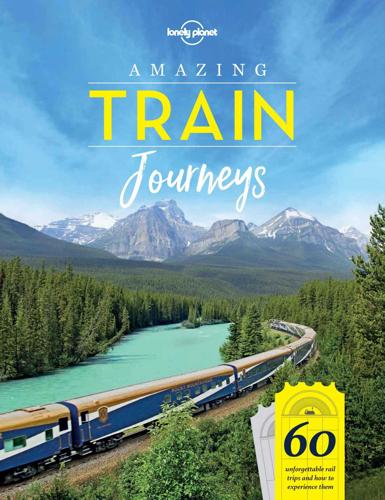
Amazing Train Journeys
by
Lonely Planet
Published 30 Sep 2018
Watch the Huatanay River rushing over rapids during the final descent into Cuzco. La Raya Urcos Cuzco Metro-North Hudson Line USA Depart from New York City’s iconic beaux arts Grand Central Terminal, stopping to admire the ornate astronomical ceiling painting in the vaulted Grand Concourse and to slurp up oysters and a martini at the famous Oyster Bar. Then roll through Manhattan and the Bronx and into the glorious green Hudson River Valley, getting off at any number of charming historic towns along the way. ❶ RIDING THE RAILS Some iconic New York activities are desperately overrated. But sucking down a platter of fresh, ocean- cold Blue Point oysters at the Grand Central Oyster Bar is definitely not.
…
There are mosaics and classical sculptures galore, there are cathedral arched windows and grand staircases, there are more platforms than any other railway station in the world. It’s from this extraordinary station that we begin our journey. Hugging the eastern banks of the Hudson River, New York’s Metro-North Hudson Line travels deep into American history. The names of the stops along the way speak to the area’s origins: Native American (Ossining, Poughkeepsie); Dutch (Spuyten Duyvil, Yonkers, Cortlandt, Peekskill); English (Hastings-on-Hudson, Scarborough). It’s a land so famously beautiful an entire art movement – the Hudson River School – was once dedicated to © JESSICA KIRSH | SHUTTERSTOCK “industrial buildings give way to small marinas with sailing boats, and bucolic river towns” capturing its glory.
…
But the real magic begins 11 miles (18km) into the journey, when the tracks join the Hudson. Suddenly the dramatic basalt cliffs known as the Palisades come into view on the far side of the river. Stretching 20 miles (32km) from Jersey City northwards, these crenelated grey cliffs reach heights of more than 500ft (150m). As you leave New York City behind, the industrial buildings give way to small marinas with motorboats and sailing boats, and the bucolic river towns of Hastings-on-Hudson, Dobbs Ferry and Irvington. Past Hastings-on-Hudson, the river gradually widens into Haverstraw Bay, which is about 3.4 miles (5.5km) at its widest.

The Trains Now Departed: Sixteen Excursions Into the Lost Delights of Britain's Railways
by
Michael Williams
Published 6 May 2015
Here are dockside cranes soaring skywards, glinting acres of sidings, steam and smoke pouring into the sky, cathedral-like warehouses and an unimaginable tonnage of shipping lined up beside the quays, while the Mersey ferries buzz like water beetles over the river. One might appropriate the famous description of the New York High Line written by Adam Gopnik of the New Yorker: ‘It does not offer a god’s-eye view of the city exactly, but something rarer, the view of a lesser angel, of a cupid in a renaissance painting, of the putti looking down on a renaissance manger.’ We’re picking up speed now through the South Docks (who would know from this busy scene that commercial shipping would be all but extinct here by the 1970s), but despite our altitude we’re far safer than on most British main lines of the period, since the track contains a stopping device that applies the brakes should a train overshoot a signal.
…
.: The Colonel Stephens Railways 274 Kineton 137, 148, 152 King’s Cross 7, 95, 101, 102, 105, 106, 109, 187, 205, 209, 212, 252, 258, 281 Kinnerley Junction 265, 271, 272, 273, 275, 276 Kirkby Stephen 75, 78, 80, 85, 87, 88, 89, 91, 92 Kirkham North Junction 283 Kitchenside, Geoffrey 210–11 Kitson and Company 198 Kitson-Still locomotive 198–9 Knottingley 160, 161, 165 Ladthwaite Beck 90, 91 Lady of Legend 201 Lakenheath 162–3 Lakes Express 107, 110 Lamport & Holt 120 Lancashire & Yorkshire Railway 118, 143, 160, 208, 294, 295 Larkin, Philip: Whitsun Weddings 4, 223 Lartigue, Charles 199 Lawton, Joseph 81 Lea Valley Enterprise 103 Leader 196–8 Learmouth, John 307 Lee, Joseph 138 Leeds & Selby Railway 158 Leeds 109, 154, 155, 156, 159, 161, 163, 206–7, 244, 310 Leeds Forge Company 31 Leigh, Chris 181 Leviathan 29–30 Lew 179–80, 181 Light Railways Act, 1896 266 Little Petherick Creek Bridge 230 Liverpool & Manchester Railway 6, 12, 79, 115, 120, 189 Liverpool vi, 107, 110, 111, 112–30, 162, 185, 240–1, 244, 245, 281; Central 245; Exchange 245 Liverpool Overhead Railway (Docker’s Umbrella) vi, 111, 112–30 Liverpool Street 5, 29, 107, 109, 193, 194, 247, 248–9, 290 Llanymynech Hill 263, 264, 268, 270, 274, 277 Lloyd, Reverend Roger 185, 191; The Fascination of Railways 7, 257–8 Locomotion 6 London see under individual station name London & Birmingham Railway 157, 251, 253, 259 London & North Eastern Railway 78, 95, 101, 106, 108, 183, 187, 192, 196, 290, 291, 310 London & North Western Railway 3, 57, 61, 66–7, 104, 139, 200, 210, 253, 256, 257, 261, 264, 294 London & South Western Railway 16, 157, 180, 200, 220, 224, 225, 273, 274 London & Southampton Railway 247 London Midland & Scottish Railway 98, 142 London Transport 64–5 London Transport Museum 69 London Underground v, 8, 52, 54, 63, 64–6, 116–17 London, Brighton & South Coast Railway 3, 6, 201, 284, 286 London, Midland and Scottish Railway 101, 142, 144, 159, 201, 248 Lord of the Isles 200, 241 Lord President 191 Lyn 173, 180 Lynmouth 168, 172, 175 Lynton & Barnstaple narrow-gauge railway vi, 167–81 Lynton 167, 168, 172, 173, 174, 175, 176, 177, 178, 179, 181 Lytham St Annes 303 Maben, Reverend Brydon 305, 306 Mackey, Jack 128 Macmillan, Harold 255 Madge Wildfire 187 Mallard 106, 187, 298 Man of Kent 293 Manchester 10, 18, 57, 63, 103, 107, 110, 143, 152, 158, 162, 173, 185, 207, 211, 243–4, 245, 246, 281, 284, 286, 289, 293; Central 243–4, 246; Exchange 246; Piccadilly 281; Victoria 103, 281 Manchester, Bolton & Bury Railway 158 Manchester, Sheffield & Lincolnshire Railway 57, 63, 162 Manxman 107 Marochetti, Carlo 256 Marples, Ernest 46, 83, 255, 294 Marsh, Richard 302, 304 Martin, Andrew: Belles and Whistles 209; The Blackpool HighFlyer 290 Mary, Queen 36, 42 Marylebone 101, 140, 146, 166, 214, 238 Masbury summit 15, 18, 22, 24, 25 Master Cutler 109, 245 Maunsell, Richard 187 Mawson, Thomas 289–90 McGonagall, William 92, 93 McLoughlin, Barry: Railway Heritage: Blackpool and the Fylde 289 McMillan, Ian 7 Meldon Junction 236 Meldon Viaduct 226 Melrose 298, 299, 300, 311 Melverley viaduct 265, 274, 278 Melville, Herman 119 Mendip Hills 15, 18, 19, 107 Merchant Venturer 109 Merrygill Viaduct 77, 90 Mersey Docks and Harbour Board 116, 122, 127 Merseyside Express 107 Methley Junction Incident 159 Metroland 52–73 Metropolitan Railway 53–73, 208 Middleton Railway 200 Midland & Great Northern Railway 12, 222 Midland & South Western Junction 12 Midland Counties Railway 157 Midland Railway 15, 16, 19, 134, 139, 194, 198, 206, 207 Ministry of Defence 152, 153 Minnis, John 241; Britain’s Lost Railways 244–5 Mons Meg 191 Morgan, Bryan 8, 190, 206 ‘My Little Metroland Home’ (Lawrence/Thrale) 59 Nagelmackers, Georges 31 namers 96, 102, 108, 109 narrow-gauge railway 167–81 National Express 109, 300 National Railway Museum 6, 7, 47, 89, 180, 186, 200, 314 nationalisation 20, 102, 158, 166, 195, 198, 211, 277 Nellie (Emmet) 262 Network Rail 236, 312 Network SouthEast 91 New York 112, 114, 205; Central Railway 189; High Line 123 Newbattle Viaduct 300 Newnes, Sir George 171–2, 173, 177 Nichols, Maria 67 Night Ferry (Behrend/Buchanan) 32–4, 37–9, 40–2 Night Ferry (Victoria to Continent) v, 26, 29–51 Night Scotsman 102 Nord Express 31 North British Railway 92, 198, 298, 307–12 North Briton 298 North by Northwest 210 North Cornwall Railway 218, 222, 224, 232–3 North Eastern Railway 76, 83, 157, 192, 307, 310 North London Railway 247 Northampton & Banbury line 136 Northern Rail 165 Norwood Junction 286 Nottingham Victoria 9, 244–5 Nuttall, James 173 O’Brien, Sean 4 Olivier, Lord 108, 209 Orient Express 31, 49–50, 204 Orwell, George 2, 7 Owen, Wilfred 246 Paddington 7, 20, 56, 98–9, 101, 105, 108, 140, 152, 158, 164, 166, 190, 215, 238, 240, 241, 246, 248–9, 250, 291, 292 Padstow 109, 217–19, 221, 222, 223, 224–5, 227, 228, 230, 231, 233–4, 235, 236 Paget, Cecil 198 Paget, Dick 148 Paris 8, 9, 27, 28, 29, 31, 32–4, 38, 40, 43, 44, 45, 46, 47, 48, 49, 50, 51, 97, 108, 123, 191, 204, 281 Paris-Orleans Railway 191 Parker, Sir Peter 48 Paterson, Don 4 Patriot vi, 182 Pease, Henry 82 Pegler, Alan 187 Pendolino 90, 95 Pennines v, 74, 75, 76, 77, 78, 79, 82, 83, 86, 91, 100, 102, 163, 245, 299 Penzance 101, 108, 109, 215, 220 Peppercorn, Arthur 187 Perth & Dundee Railway 29 Peters, Ivo 24 Pick, Frank 58 Pines Express 18, 19, 21, 107 Pinza 303 Plymouth 101, 106, 158, 216, 219, 221, 232, 235, 236, 244, 250 Podgill viaduct 75, 77, 90, 91 Pontefract Line 154–6, 159–62, 165 Portillo, Michael: Great British Railway Journeys 3–4 Postgate, Oliver: Ivor the Engine 262 Potteries, Shrewsbury & North Wales Railway 263–4 Preston & Wyre Railway 282 Prince of Wales 188, 206–7 Puffing Billy 200 Pullman Car Company v, 29, 31, 35, 52, 54, 63, 65, 70, 71–2, 97, 99, 102, 106, 107, 108, 164, 187, 203, 204, 205, 206, 208, 211, 213, 214, 215, 216, 238, 245, 290 Pullman, George 31 Purdon, Iain 304–5 Quainton Road 62, 63, 65, 66, 67, 68, 69, 73 Queen Mother, the 151, 205 Queen of Scots, The 211, 241 Rail-o-Phone 141–2 Railway Act, 1844 156 Railway Club, London 6 Railway Regulation Act, 1844 158 Railway Station: a social history, The (Richards/MacKenzie) 4–5, 240, 251, 284 Railway Travellers’ Handybook, The 98 Raven, Sir Vincent 192 Read, Robert 13, 14 Red Dragon 241 Red Guide to Lynton and Lynmouth 175 Red Rose 110 Redbridge Viaduct 311 Redgategill viaduct 77 Reid-Ramsey locomotive 198 Reid, William 149–50 Reno, Jesse 118 Riccarton Junction 303, 308–9, 312 Richards, J.M. 255 Riddles, Robert 198 Ro-Railer 142 Robin Hood 298–9 Roche, T.
…
After slumbering for half a century, it announced its presence in dramatic fashion in 2012 when the tunnel wall collapsed causing the houses above to be evacuated. Of course there have been other great elevated railways of the world. New York had its own, especially the famous Manhattan Railway and its Second, Third, Sixth and Ninth Avenue lines. The Boston Elevated Railway, with its distinctive orange trains, was part of the lifeblood of the city until much of it was closed in the 1980s. The 113-mile Chicago El or L lives on today as the third-busiest metro system in the US after New York and Washington, with 231 million passengers a year. But the Liverpool Overhead was in a class of its own – the first, the most revolutionary and, in the hearts of the people of this most heart-on-the-sleeve of cities, probably the most loved by the citizens who used it.
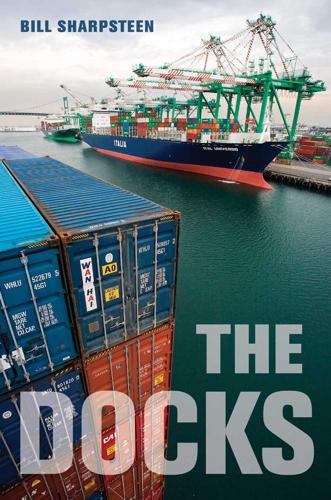
The Docks
by
Bill Sharpsteen
Published 5 Jan 2011
He started his tugboat career from the bottom up, which makes him, in the maritime world, a “hawse piper,” someone who pulled himself up the anchor chain and crawled through the hawse hole, a large grommet- Hawse Piperâ•… /â•… 271 like structure where the anchor chain leads through the ship’s bow and to a winch. Brooks came from a long line of British merchant marines, among them his grandfather, who would take him to the New York docks to see the Queen Elizabeth or the Queen Mary filling their berths in far grander style than a container ship. “I’ve always been around ships,” he explains while driving through the Main Channel. “And when I’d look out on the horizon and see the ships’ smoke out there, you know, back in the old days, I’d see the ships leaving the Port of New York—I knew that was my future.” He first entered the maritime job market as a shipyard runner, driving parts, before becoming an apprentice pipe fitter.
…
More specifically, at the time of our first interview, the Los Angeles and Long Beach ports combined were responsible for 40 percent of all waterborne cargo entering the United States, with 65 percent of those 54â•… /â•… The Landlord containers continuing to the Midwest and the East Coast. This volume also makes the two facilities the world’s fifth busiest port complex. They move nearly three times as much cargo as the nation’s next busiest ports, New York/New Jersey. Finally, if jobs are the bottom-line indicator of prominence, 500,000 people work at the two ports, representing a $22 billion payroll, and more than 3.3 million other jobs nationwide have some connection to this economic behemoth. “If you bought it, we brought it,” Knatz adds earnestly as if trying to sell a product, which I suppose she is.
…
It didn’t last long, but there were a lot of injuries, and from that point on, it was obvious to the union that the police were determined to protect the employers. Granted, Bridges made it clear his intent was to bust up some property, but given everything the longshoremen had been through, that probably sounded like a good idea. In mid-June, the ILA’s international president, Joseph P. Ryan, arrived from New York and met with T.â•›G. Plant at his home. Ryan believed he spoke for the local longshoremen, but he ignored their demands to include the other unions who had been honoring the strike. So after Ryan quickly signed an agreement with Plant to end the strike, the San Francisco ILA local almost unanimously rejected it.
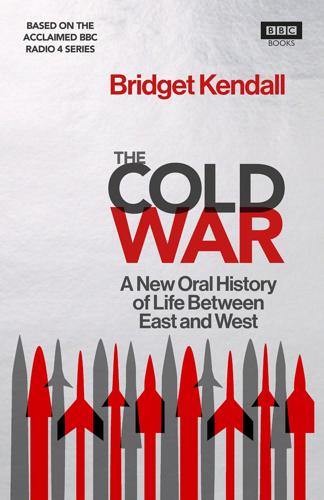
The Cold War: Stories From the Big Freeze
by
Bridget Kendall
Published 14 May 2017
As soon as there was enough information, I made a decision that there should not be any actions performed by me which would result in the loss of life. David Remnick At about 11 o’clock at night [in New York], we turned on CNN and there were tanks going by our apartment building [in Moscow]. It was already morning [there], and there were tanks going right down Kutuzovsky Prospekt in the centre of Moscow, which was horrible for the Soviet Union and really horrible for me! It was also a hurricane in New York and it seemed like it was going to be impossible to get back to Moscow, but somehow the next morning I flew back to Moscow. I fully expected to be met at the airport by guns and tanks and be put on a plane and sent out, but it was no problem.
…
At the same time, the United States discovered that Klaus Fuchs, a German-born British physicist, had been spying for the Soviets while working for the Manhattan Project, the top-secret collaboration between the United States, Britain and Canada that developed the first atomic bomb. Then a Communist couple from New York, Julius and Ethel Rosenberg, were arrested on charges of passing atomic bomb secrets to the Soviets. All this fuelled fears that Communist infiltrators must be intent on subverting the United States from within. Everyone from Hollywood screenwriters to academics and government officials came under suspicion.
…
The doubts, though, lingered, marring the careers of the thousands of innocent Americans who had come under suspicion, and blighting the lives of families who suffered the stigma and strain of having their loved ones harassed and ostracised. And for some, the memories of how their parents became victims of the Cold War’s Red Scare colour their lives still. In 1951, Kathryn Jackson was living in New York. She was just three years old when her father, a black civil rights activist, disappeared. Having taught classes on violent revolution, he had been indicted under the Smith Act of 1940, which outlawed conspiracy to teach or advocate the violent overthrow of the government. I was born in 1947, at the beginning of the Red Scare.
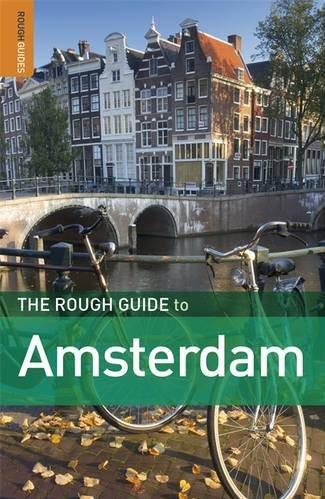
The Rough Guide to Amsterdam
by
Martin Dunford
,
Phil Lee
and
Karoline Thomas
Published 4 Jan 2010
KLM and Northwest, which operate a joint service, offer the widest range of flights, with direct or one-stop flights to Amsterdam from eleven US cities, and connections from dozens more. From elsewhere in the US, the Dutch charter firm Martinair flies year-round from Miami direct to Amsterdam. United also flies direct to Amsterdam from Chicago, while Delta operates from Atlanta and New York; Continental from Houston. Booking far enough in advance, you should be able to find a fare between April and September for $700–900 return from New York (flight time 8hr 10min) or Chicago (8hr), $900–1000 from Atlanta (10hr), and around $1000 from LA (10hr 30min), though booking less than a couple of weeks in advance can push these prices up considerably. From Canada, KLM flies direct to Amsterdam year-round from Vancouver (9hr 30min) and from Toronto (7hr 10min).
…
They also take in-person bookings for canal cruises and other organized excursions, sell theatre and concert tickets, and operate an extremely efficient accommodation reservation service for just €3 plus a refundable deposit which is subtracted from your final bill – especially useful in high season when finding accommodation isn’t always easy. Travel essentials | Time Amsterdam, and indeed the whole of the Netherlands, is on Central European Time (CET) – one hour ahead of London, six hours ahead of New York, nine hours ahead of Los Angeles and eight hours behind Sydney. Daylight saving operates from the end of March to the end of October. Travel essentials | Tipping Tipping isn’t quite as routine a matter as it is in the US or even in the UK. However, you are expected to leave something if you have enjoyed good service – up to around ten percent of the bill should suffice in most restaurants, while hotel porters and taxi drivers may expect a euro or two on top of the fare.
…
Three-hour guided cycling tours around the city (two daily April to mid-Oct) that cost €21.50 per person, including the bike. Other tours – of the Jordaan, Red Light District, etc – available. Advance reservations required. Travel essentials | Tourist information | Netherlands Board of Tourism offices UK PO Box 30783, London WC2B 6DH 020/7539 7950, info-uk@holland.com. US 355 Lexington Ave, New York, NY 10017 1-212-370-7360, information@holland.com. There are no offices in Australia or New Zealand. Travel essentials | Tourist information | Tourist offices and government sites Australian Department of Foreign Affairs www.dfat.gov.au, www.smartraveller.gov.au. British Foreign & Commonwealth Office www.fco.gov.uk.

2312
by
Kim Stanley Robinson
Published 22 May 2012
Swan had called ahead, and Zasha appeared at the fence that cut a floating dock off from the big plaza complex west of Gansevoort Street, at the south end of the High Line. After a brief hug, Z led her to the end of the dock and then out on the Hudson River in a boat, a smooth little hummer that soon had them midriver. Everything on the water moved at a watery pace, including the water itself. The Hudson River here was wide; the entire city of Terminator would have fit in New York Harbor. Bridges were visible all over the place, including one on the distant southern horizon. There was so much water Swan could hardly believe it; even the open sea did not seem to have so much; and yet it was not even a very big river, compared to the really big ones.
…
The ones without were more or less heroically erect, holding off the weight of the Earth with a strained look. Swan felt a little that way herself. No matter what you did, one g imposed itself on your attention for a while. Their New York office was headed by an ancient Terran named Milan, who had a sweet smile for everyone. “Swan, darling, so good of you to come.” “Oh my pleasure, I love New York.” “Well, bless your ignorance, child. I’m glad you like it. And I’m glad you’re here. Come meet some of my new people.” So Swan met some of the local team and endured their condolences about Alex, and gave them a brief inaccurate account of her trip to Jupiter.
…
If you were to try this kind of thing anywhere else…” Zasha laughed at the thought. “Like they could use this technology and polder New York Harbor, drain the bay down so that Manhattan was above water the way it used to be. You could make the whole area like a Dutch polder. Not even that difficult, compared to some things. But the New Yorkers won’t hear of it. They like it the way it is!” “Good for them.” “I know, I know. The fortunate flood. And I love New York the way it is now. But you see what I mean. A lot of good terraforming projects just won’t ever get approved.” Swan nodded and made a face.

Politics on the Edge: The Instant #1 Sunday Times Bestseller From the Host of Hit Podcast the Rest Is Politics
by
Rory Stewart
Published 13 Sep 2023
Earlier in his career he was briefly in the British Army, before serving as a diplomat in Indonesia, the Balkans and Iraq, establishing and running a charity in Afghanistan, and holding a chair at Harvard University. His 21-month 6,000-milewalk across Asia, including Afghanistan, is recorded in his New York Times bestseller, The Places in Between. His other books include Occupational Hazards, and The Marches. Also by Rory Stewart The Places In Between Occupational Hazards: My Time Governing in Iraq The Marches: Border Walks with My Father Rory Stewart * * * POLITICS ON THE EDGE A Memoir from Within Contents Author’s Note Prologue PART ONE 1 Suddenly Coming Alive 2 Gajumaru Trees 3 The Livestock Ring 4 The Empty Hall 5 One Nation PART TWO 6 District Commissioner for Cumbria 7 Team Player 8 Select Committee PART THREE 9 Red Box 10 Particulate Matter 11 Plenipotentiary Powers 12 2017 Election PART FOUR 13 ‘A Balliol man in Africa’ 14 The People’s Political Consultative Conference PART FIVE 15 Unlearning Helplessness 16 Barking at Drones 17 Backstop 18 Resignation 19 Loving Strict PART SIX 20 The Vanishing Middle 21 Secretary of State 22 Leadership 23 Standing Up 24 Pinocchio 25 Pro-rogue 26 Quaestor Dramatis Personae Glossary Acknowledgements Index To Shoshana Me debeo quid ego nunc interiora nostra et recondita consilia sermonesque arcanos eruam, ut repentinis nuntiis ad praesentia et inminentia pericula evocatus tuis consiliis conservatus sim, ut neque audacius experiri casus temere passa sis, et modestiora cogitanti fida receptacula pararis.
…
I admired how hard they worked on their Dari, and in some cases on Pushtu and Arabic as well; how they put up with hand grenades and bombs; how they walked, and sometimes skied, in remote rural areas; collected books and plants. They were practical, effective and funny, with an ironic sense of their own limitations, honest about their lack of expertise, and sensitive and respectful to Afghans. First among them was Shoshana, formerly a middle-school science teacher in the poorest areas of New York and Boston, who became my deputy and, much later, my wife. Without this partnership between Afghans and foreigners the community would have left; Abdul Hadi would have died without passing on his woodworking skills to a new generation, and all those buildings would have been demolished and cleared for the mayor’s East German-style plan.
…
I served in the diplomat Richard Holbrooke’s group focusing on Afghanistan and Pakistan, preparing a strategy for President Obama. Secretary of State Hillary Clinton cleared time in her diary for long discussions in her office and at dinner, in which she probed me both on the charity and on what I had seen of the military operations. Holbrooke lectured me exuberantly at New York lunches and in Washington hotels, thinking nothing of waking me with calls at one in the morning to say ‘it’s down to you Rory – this is Vietnam 1968 – you are the only one who can stop it. I’m sitting you next to Hillary again tomorrow night. It is you who has to speak truth to power.’ He praised, cajoled and threatened me till my head spun.
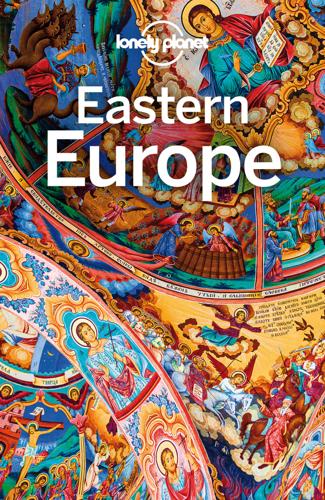
Lonely Planet Eastern Europe
by
Lonely Planet
,
Mark Baker
,
Tamara Sheward
,
Anita Isalska
,
Hugh McNaughtan
,
Lorna Parkes
,
Greg Bloom
,
Marc Di Duca
,
Peter Dragicevich
,
Tom Masters
,
Leonid Ragozin
,
Tim Richards
and
Simon Richmond
Published 30 Sep 2017
The site stood abandoned for years as oligarchs fought for the city's most desired patch of land, until Vladimir Putin intervened, telling everyone that he wanted it to become a park. No one was willing to argue, so now the area is being transformed into a 21st-century nature-meets-culture recreational space in a $10 billion project led by Diller Scofidio + Renfro, a US design bureau which oversaw the conversion of an old railroad into The High Line park in New York City. Due to be partially open in 2017, the new Zaryadye will be divided into four sectors, each showcasing one of Russia's typical landscapes – birch and fir tree forests, flood plain meadows and tundra. Towering above all that vegetation, a new building of Moscow Philharmonics is set to become yet another first-class musical venue in a city that admittedly already has no shortage of these.
…
oBrilant Antik HotelBOUTIQUE HOTEL€€€ ( MAP GOOGLE MAP ; %04 2251 166; www.hotelbrilant.com; Rr Jeronim de Rada 79; s/d incl breakfast €60/90; aW) Easily one of Tirana's best midrange offerings, this charming house-cum-hotel has plenty of character, a central location and welcoming English-speaking staff to ease you into Tirana life. Rooms are spacious, decently furnished with the odd antique, and breakfast downstairs is a veritable feast each morning. 5Eating New York Tirana BagelsCAFE€ ( MAP GOOGLE MAP ; %069 540 7583; http://newyorktiranabagels.com/; Rr Themistokli Gërmenji; bagels & sandwiches 80-300 lekë; h7.30am - 9.30pm; Wv) Believe it or not, Tirana is home to the Balkans’ best bagels. Pick up one for breakfast from the aptly named New York Tirana Bagels, a cafe and social enterprise whose profits go towards supporting people in need. EraALBANIAN, ITALIAN€€ ( MAP GOOGLE MAP ; %04 225 7805; www.era.al; Rr Ismail Qemali; mains 400-900 lekë; h11am-midnight; v) This local institution serves traditional Albanian and Italian fare in the heart of Blloku.
…
Auschwitz-Birkenau Memorial & Museum, Oświęcim, Poland The site of notorious death camps; a bleak and important testament to the Holocaust. Museum of the History of Polish Jews, Warsaw, Poland Newly opened high-tech marvel with a permanent exhibition tracing a millennium of Jewish history. Great Synagogue, Budapest, Hungary The largest synagogue in the world outside New York City also includes a museum and Holocaust memorial. Jewish Vilnius, Lithuania Visit the Tolerance Centre, Holocaust Museum and Choral Synagogue in this age-old centre of Jewish life. Kazimierz, Kraków, Poland Dormant after WWII, Jewish culture is returning through this district's music, cuisine and festival.
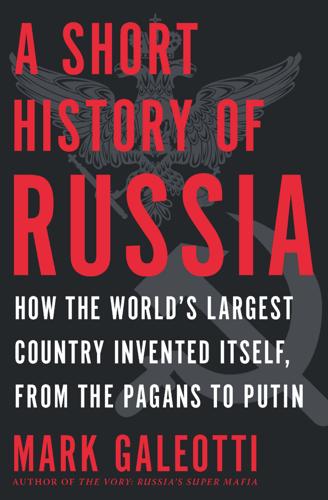
A Short History of Russia
by
Mark Galeotti
Published 1 May 2020
Much is made of the transformation of Moscow into a lively, vibrant and beautiful city, but just as St. Petersburg was designed by Europeans, a great deal of this is thanks to Western architects. From the Dutch team remodeling Tverskaya, the city’s premier avenue, to the American DS+R design bureau, creators of New York’s wonderful High Line public park, which defined a huge new green space at Zaryadye, right next to Red Square, the Russian capital is being rebuilt by Westerners as a European city. Thanks to shared historical experiences and growing cross-national trade, to the internet and Hollywood blockbusters, to cheap package holidays in Spain and Cyprus, and mutual concerns about the rise of China, Russia really is closer to Europe than at any point in its history.
…
—Observer New Review (UK) on The Vory: Russia’s Super Mafia Also by Mark Galeotti Armies of Russia’s War in Ukraine We Need to Talk About Putin: Why the West Gets Him Wrong, and How to Get Him Right Russian Political War: Moving Beyond the Hybrid Kulikovo 1380: The Battle That Made Russia The Vory: Russia’s Super Mafia The Modern Russian Army 1992–2016 Spetsnaz: Russia’s Special Forces Russia’s Wars in Chechnya 1994–2009 Russian Security and Paramilitary Forces since 1991 Paths of Wickedness and Crime Gorbachev and His Revolution The Age of Anxiety: Security and Politics in Soviet and Post-Soviet Russia Afghanistan: The Soviet Union’s Last War The Kremlin’s Agenda: The New Russia and Its Armed Forces Mark Galeotti, honorary professor at UCL School of Slavonic and East European Studies, is one of the foremost Russia watchers today. Based in London, he is a senior associate fellow at the Royal United Services Institute and senior nonresident fellow at the Institute of International Relations Prague. Previously he has been professor of global affairs at New York University, head of the history department at Keele University in the UK, an adviser at the British Foreign Office and a visiting professor at MGIMO (Moscow), Charles University (Prague) and Rutgers (Newark). A prolific author on Russia and security affairs, he frequently acts as consultant to various government, commercial and law enforcement agencies.
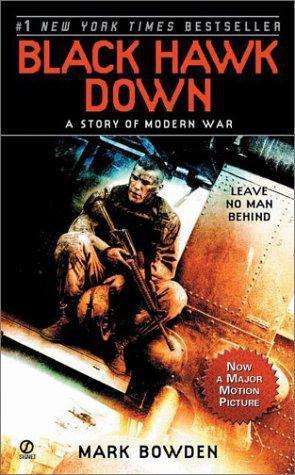
Black Hawk Down: A Story of Modern War
by
Mark Bowden
Published 3 Jan 2002
Marine Corps; John Belman, who received the Bronze Star with Valor Device and now works for a newspaper publishing company in Cincinnati; Anton Berendsen., who received the Bronze Star with Valor Device and is now attending college in Georgia; Matthew Bryden; John Burns, who received the Bronze Star with Valor Device and is attending college in Georgia; LTC. L H. “Bucky” Burruss, U.S. Army, ret.; Tory Carlson, who received the Purple Heart and now works as a high-line electrician in Florida; SSGT Raleigh Cash, U.S. Army, who is still serving with the Ranger Regiment; John Colett; COL Bill David, U.S. Army, who is now garrison commander at Fort Bragg; David Diemer, who received the Bronze Star with Valor Device and now does construction work with his father in Newburgh, New York; CPT Torn DiTomasso U.S. Army, who received the Silver Star and still serves with the Ranger Regiment; Col Peter Dotto, U.S. Marine Corps; GEN Wayne Downing, U.S.
…
Here he was, an old timer in the Ranger company at age twenty-eight, having spent the last four years of his life trying to get late combat, to do something interesting or important, and now, somehow, through an incredible chain of pleading, wheedling, and freakish breaks, he was actually in combat--him, stubby Johnny Stebbins, the company's chief coffee maker and training room paper-pusher, at war! His trip to this Mogadishu back alley had started in a bagel shop at home in Ithaca, New York. Stebbins was a short, stocky kid with pale blue eyes and blond hair and skin so white and freckly it never turned even the faintest shade darker in the sun. Here in Mog it had just burned bright pink. He had gone to Saint Bonaventure University, majoring in communications and hoping to work as a radio journalist, which he had in fact done for minimum wages at a few mom-and-pop stations in upstate New York. When the bagel shop offered to make him head baker, the hourly wage was enough to chuck his infant broadcasting career.
…
Corporal Jim Cavaco walked around one night with a length of nylon cord tied around the end of his penis, holding the rope up delicately between two fingers, telling everybody, “Juss takin' the dawg out for a walk.” They played a lot of Risk, the board game where color-coded armies vied to conquer the world. It took hours, so it was great for killing time. Private First Class Jeff Young, a tall, fair-haired RTO (Radio Telephone Operator) from upstate New York with big glasses perched on a nose too small for his long face, had grown up playing Risk with his five bothers and was so good at it that the other guys formed coalitions to knock him out first. Young and his sergeant, Mike Goodale, had borrowed the game from the D-boys early on and monopolized it so much the Delta squadron had to have another game shipped over.

Lonely Planet Brazil
by
Lonely Planet
At the top stands an 18th-century fort affording magnificent views of Pão de Açúcar (Sugarloaf Mountain) and the Cagarras Islands. Museu da Imagem e SomMUSEUM (map Google map; www.mis.rj.gov.br; Av Atlântica, near Miguel Lemos) If work on this new museum is ever complete, Copacabana will finally have an outstanding rainy-day attraction. The building, designed by celebrated New York firm Diller Scofidio + Renfro (who also designed NYC’s High Line), will feature high-tech interactive galleries devoted to the great Brazilian music and film that have played such a pivotal role in the nation’s culture. Performance halls and an open-air rooftop amphitheater (for outdoor films) will be other highlights. 1Botafogo & Humaitá Just north of Copacabana, Botafogo and Humaitá are desirable neighborhoods with vibrant nightlife, cutting-edge restaurants and a few intriguing museums and galleries in the area’s old mansions.
…
Barraca do UruguaiSNACKS$ (map Google map; Posto 9, Ipanema Beach; sandwiches R$14-20; hnoon-5pm) Of the many barracas (food stalls) on Ipanema Beach, Uruguai is a long-term favorite and serves scrumptious grilled chicken, beef and sausage sandwiches, plus agua de côco (coconut water), caipirinhas, beers and other refreshments. Look for the blue-and-white striped Uruguayan flag flying high over the beach. VezpaPIZZA$ (map Google map; www.vezpa.com.br; Av Ataúlfo de Paiva 1063; pizza slices from R$11; hnoon-2am Sun-Thu, to 4am Fri & Sat) Vezpa is a New York–style pizza place in Leblon, with brick walls and high ceilings, where you can order pizza by the slice. The crusts are thin and crunchy and there are decent selections on hand – try the mozzarella with tomatoes and basil. Vezpa also has many other locations, including in Ipanema (on Farme de Amoedo) and Copacabana (on Djalma Ulrich).
…
Ticket prices are steep, but music aside, the service is top-notch, and there’s good food (and two bars) on hand. It’s located inside the Lagoon complex. Clube Manouche (map Google map; www.casacamolese.com.br; Jardim Botânico 983; R$60-90) Downstairs from the main restaurant in Casa Camolese, Clube Manouche is an intimate music bar designed in the tradition of West Village clubs in New York City. Sight lines are excellent no matter where you sit, and you can order drinks throughout the show. The club lines up some top-notch jazz artists, as well as eclectic sounds from Brazil and beyond. There are shows three or four nights per week (typically starting around 9pm). Check the website to see what’s on.
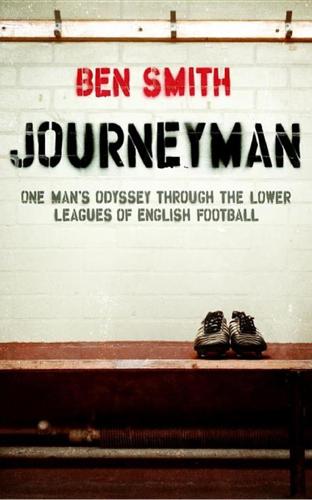
Journeyman: One Man's Odyssey Through the Lower Leagues of English Football
by
Ben Smith
Published 14 Sep 2001
I can only guess I wasn’t the only person who’d had that idea. However, for me, that summer was the first time in my career I felt like I was getting somewhere – like I was on the cusp of actually being a ‘proper’ footballer. I certainly holidayed like one! As well as the Cyprus trip, Emma and I had a week in Zante and two weeks across Orlando and New York. I worked really hard to maintain my fitness too, knowing a huge challenge awaited me when I returned. • • • 8 JULY 2013 I’m not sure how, but I’m close to completing a whole year at the school. There have been plenty of disastrous lessons but I finally feel like I’m getting the hang of it all – ironic really, because I’ve managed to secure myself a new job.
…
I knew the club would spend heavily during the summer to strengthen the squad but I was confident, if given a fair opportunity, I could compete for a place in the team. In hindsight, it was one year too many, but more of that later. Although we did not receive a monetary bonus for promotion the club did live up to the gaffer’s regular boasts and we were to be taken on a special holiday. The destination had changed over the season from New York to Abu Dhabi to Dubai but we eventually settled for three nights in Las Vegas and four in Los Angeles. It was a great trip that allowed us to unwind after a hard season and solidify the bonds we had created. The £10,000 bonus promised after the Manchester United game for beating Southport still had not transpired, though we were told it would be given as spending money.
…
We played a very direct, no-risk style of football, meaning the ball went from back to front as quickly as possible. The gaffer was not particularly bothered about the quality of the ball being hit forward, just as long as we got it away from our goal. This tactic worked OK if our opponents played a high line and left space behind. However, if the opposition had seen us play before, they would sit deep and we would either put everything on their defenders’ heads or send it through to the goalkeeper. It was a very predictable way of playing and also meant that when playing ‘in the hole’ – as I did – you often got bypassed.
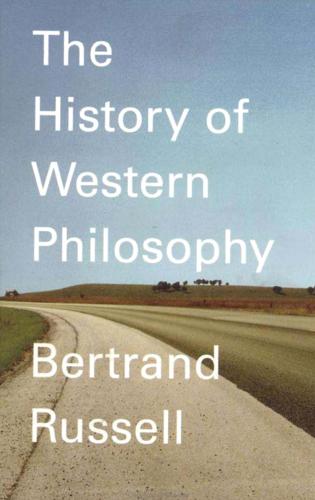
A History of Western Philosophy
by
Aaron Finkel
Published 21 Mar 1945
COPYRIGHT 1945 BY BERTRAND RUSSELL COPYRIGHT RENEWED © 1972 BY EDITH RUSSELL ALL RIGHTS RESERVED INCLUDING THE RIGHT OF REPRODUCTION IN WHOLE OR IN PART IN ANY FORM A TOUCHSTONE BOOK PUBLISHED BY SIMON & SCHUSTER, INC. ROCKEFELLER CENTER, 1230 AVENUE OF THE AMERICAS NEW YORK, NEW YORK 10020 www.SimonandSchuster.com TOUCHSTONE AND COLOPHON ARE REGISTERED TRADEMARKS OF SIMON & SCHUSTER, INC. Visit us on the World Wide Web: http://www.SimonSays.com eISBN-13: 978-1-4165-9915-9 ISBN-10: 1-4165-9915-0 Table of Contents Preface by Author Introduction BOOK ONE. ANCIENT PHILOSOPHY Part I.
…
We must concede to Machiavelli that this was an important element in the growing power of the Church during the eleventh, twelfth, and thirteenth centuries, as well as in the success of the Reformation in the sixteenth century. But there are important limitations. In the first place, those who have seized power can, by controlling propaganda, cause their party to appear virtuous; no one, for example, could mention the sins of Alexander VI in a New York or Boston public school. In the second place, there are chaotic periods during which obvious knavery frequently succeeds; the period of Machiavelli was one of them. In such times, there tends to be a rapidly growing cynicism, which makes men forgive anything provided it pays. Even in such times, as Machiavelli himself says, it is desirable to present an appearance of virtue before the ignorant public.
…
B.C.), 310, 312, 313, 317, 321 Neoplatonism, 218, 251, 277, 301, 368, 476–477, 509 and Ammonius Saccas, 287, 327 and Arabs, 423, 424, 426, 427 and Aristotle, 426, 453, 500 and Christianity, 296–297, 308, 358, 400, 404, 406, 418, 477 and Plato, 143, 303, 486, 500 founded by Plotinus, 284–297 Neo-Pythagoreanism, 259, 322 Nero (Nero Claudius Caesar Drusus Germanicus), Roman Emperor (37–68), 260, 266, 571 nervous tissue, 655, 669 Nestorianism, 374, 420, 423–424, 438 Nestorius, Patriarch of Constantinople (?–451), 367–369 Neuchatel, 690 Neva, 723 New Astronomy (Kepler), 544 New England, 226, 819 New Jerusalem, 318 New Testament, 303, 317, 318, 325, 408, 447, 585, 756, 764, 765 New Theory of Vision, A (Berkeley), 648 New York, 510 Newstead Abbey, 748 Newton, Sir Isaac (English mathematician) (1642–1727) 257, 371, 535, 641, 677, 722, 725, 726 and astronomy, 216, 217 and calculus, 536, 582 and Euclid, 36–37 and God, 563 and gravitation, 207, 531, 536 and Leibniz, 70, 582–583 and motion, 131, 20?, 532 and science, 525, 537–540 and space and time, 70, 71, 540, 715 quoted, 535 Niagara, 678 Nicæa, Council of, 329, 333 Nicene Creed, 309, 329, 333, 391 Nicholas I (Saint), Pope (reigned 858–867), 389, 395–398, 402, 404, 478 quoted, 396 Nicholas II, Pope (reigned 1059–1061), 413–414 Nicholas V, Pope (reigned 1447–1455), 391, 498 Nicholas of Oresme.